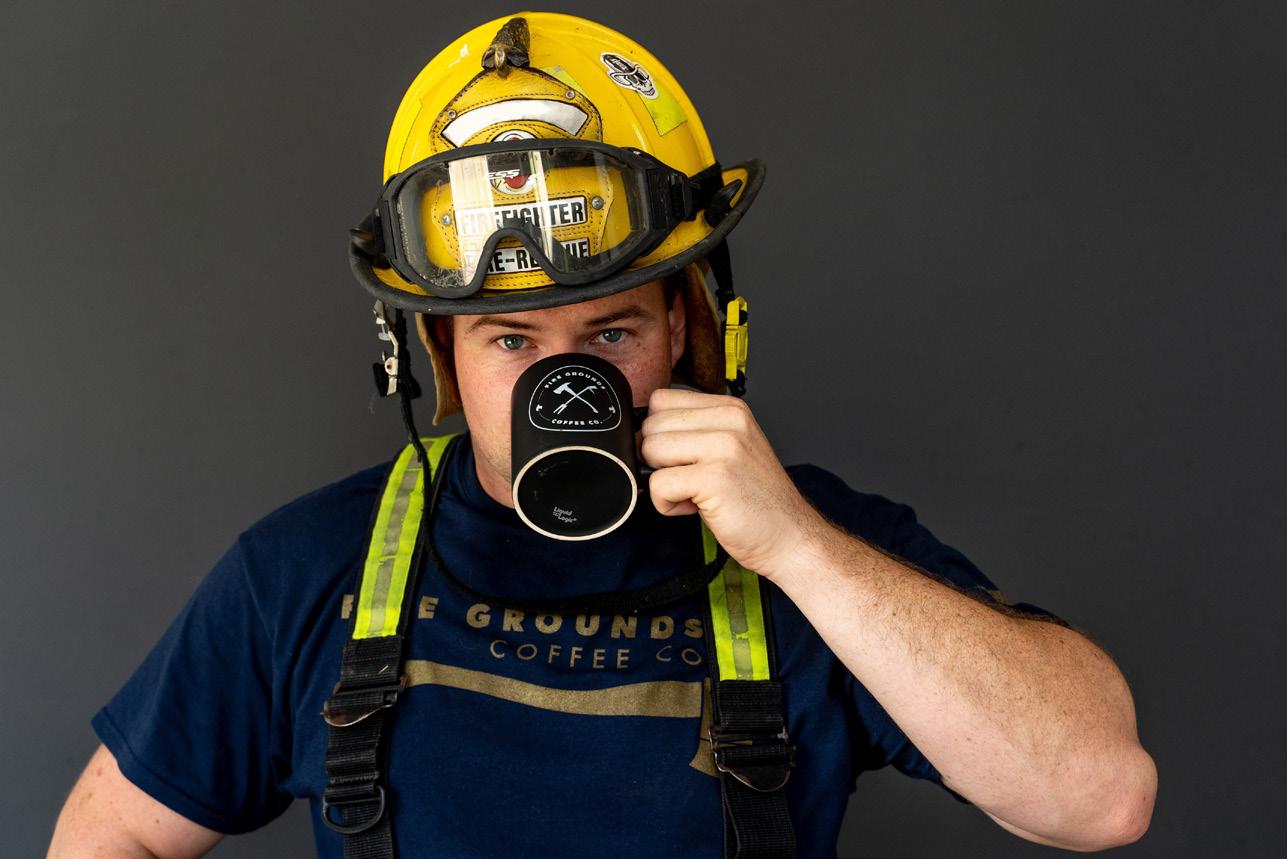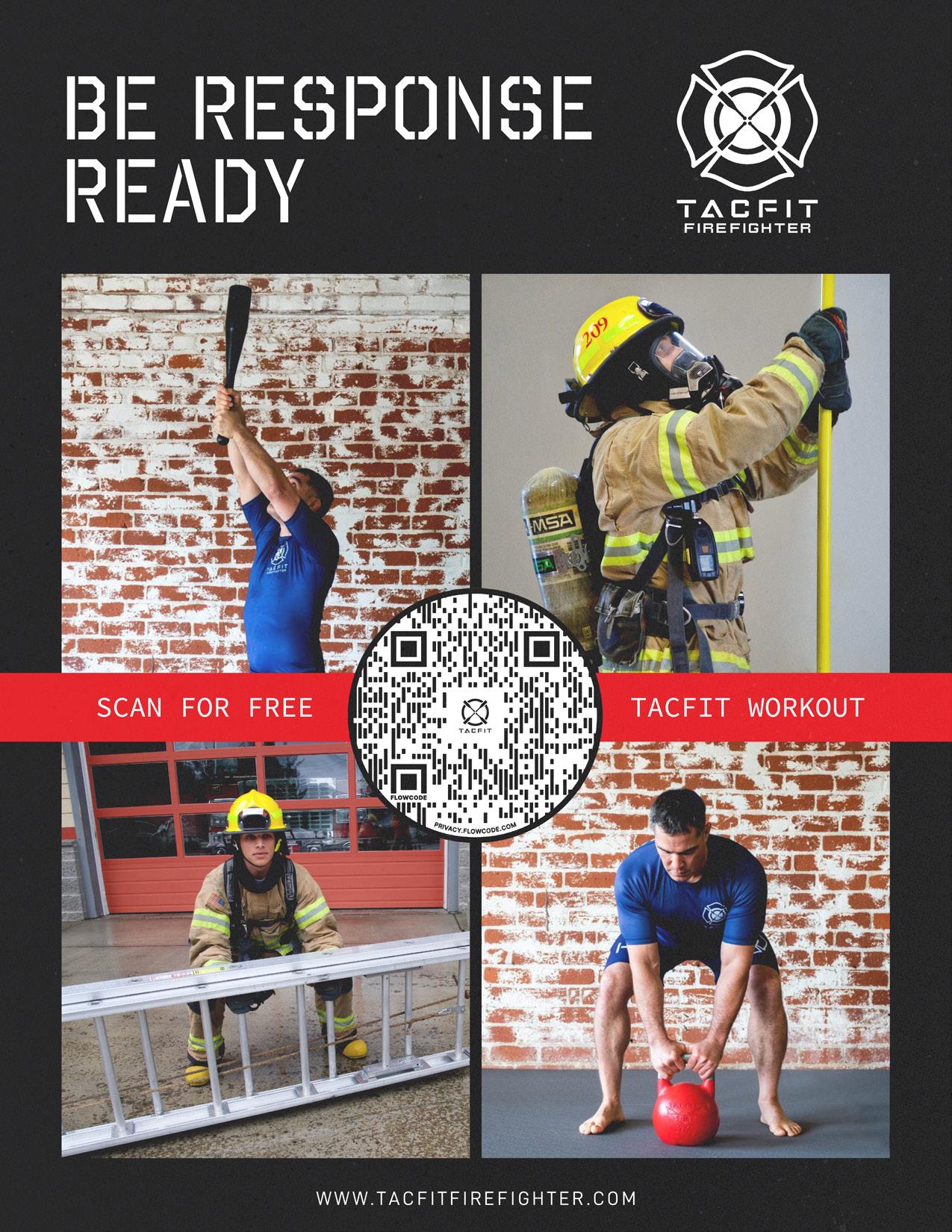CHANGE YOUR GOALS AND CHANGE YOUR LIFE
PAIN PATHWAYS
THE FIRE IN THE MUSIC
TAKE COMMAND OF YOUR CASH
FIREHALL SABOTAGE
TWO INCOMES: ONE FAMILY
SMOKE EATERS
AM I GETTING TOO OLD FOR THIS S#*T?

CHANGE YOUR GOALS AND CHANGE YOUR LIFE
PAIN PATHWAYS
TAKE COMMAND OF YOUR CASH
TWO INCOMES: ONE FAMILY
SMOKE EATERS
AM I GETTING TOO OLD FOR THIS S#*T?

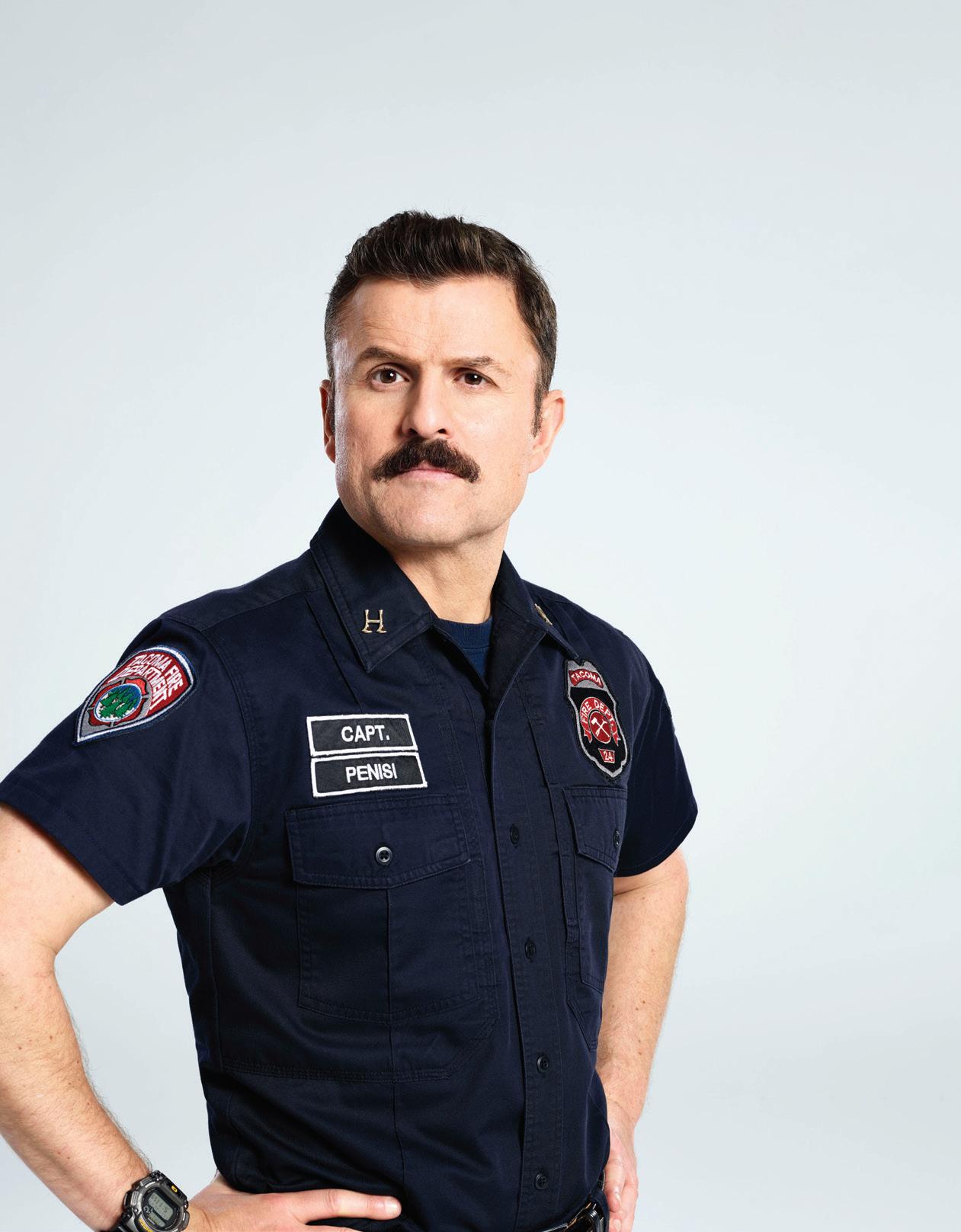
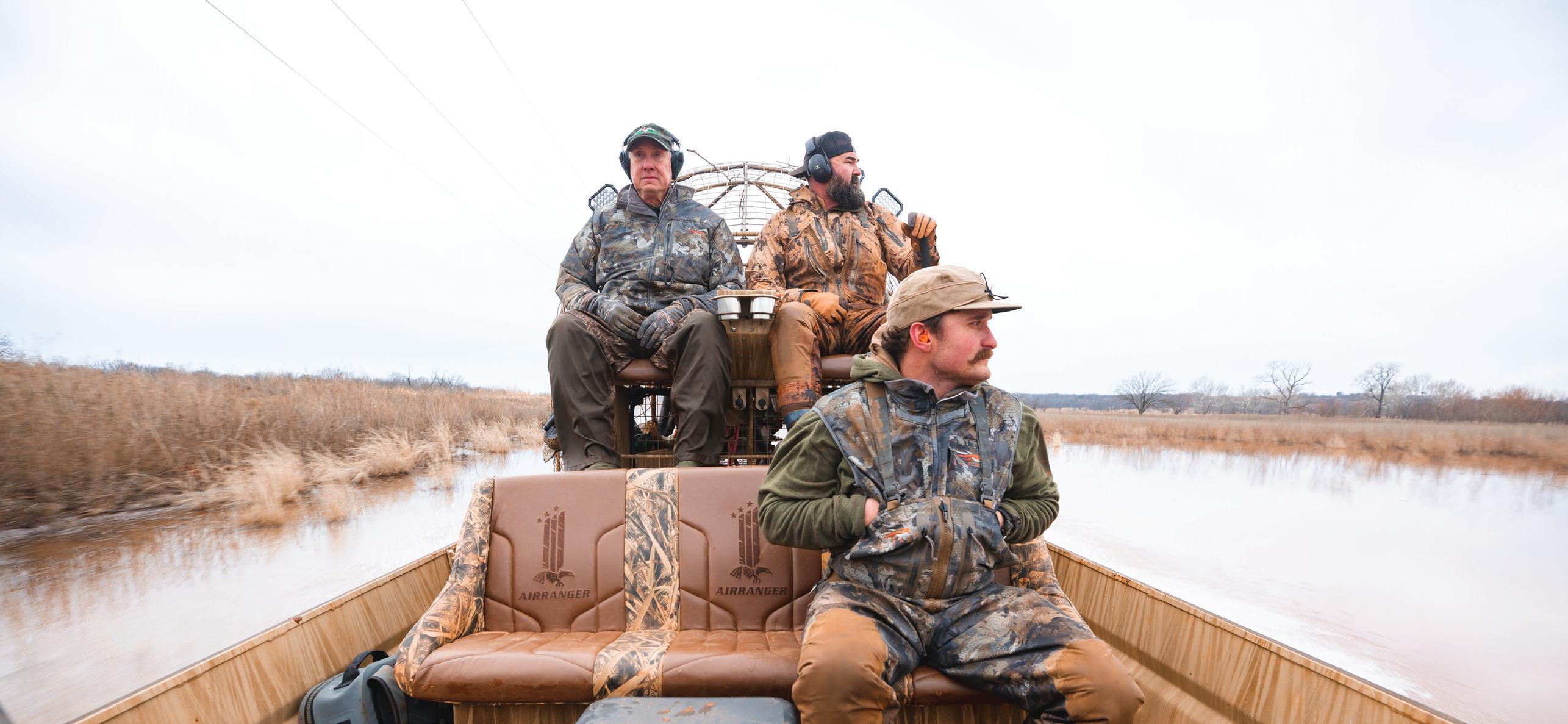
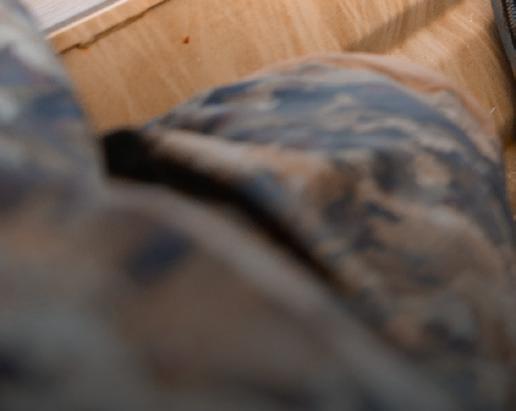
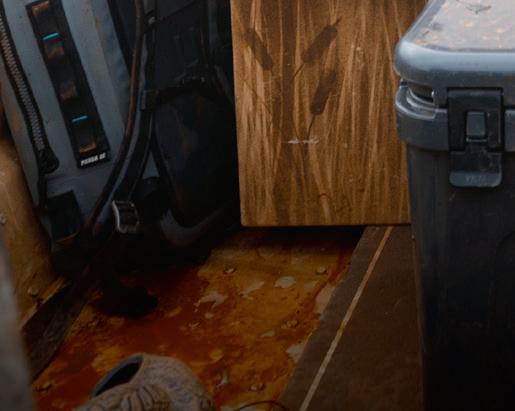
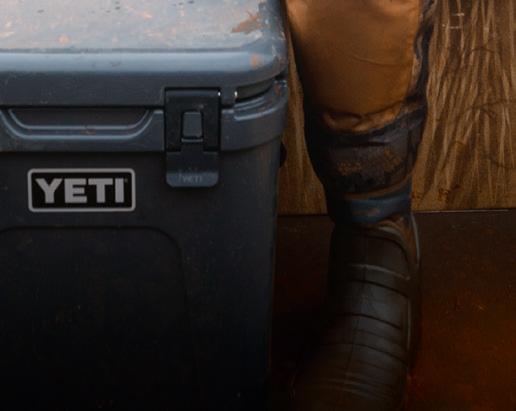
EVERY DESTINATION NEEDS A GOOD JOURNEY
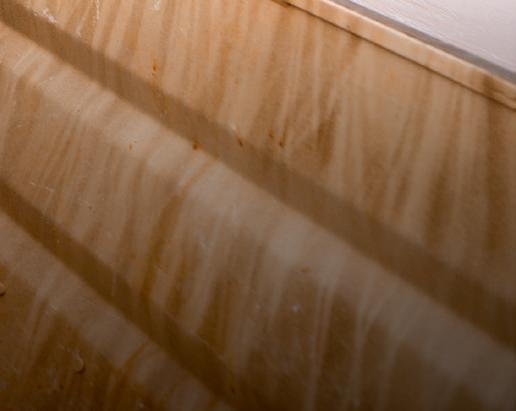
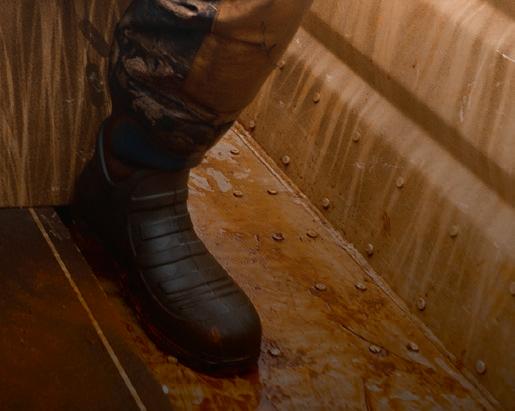






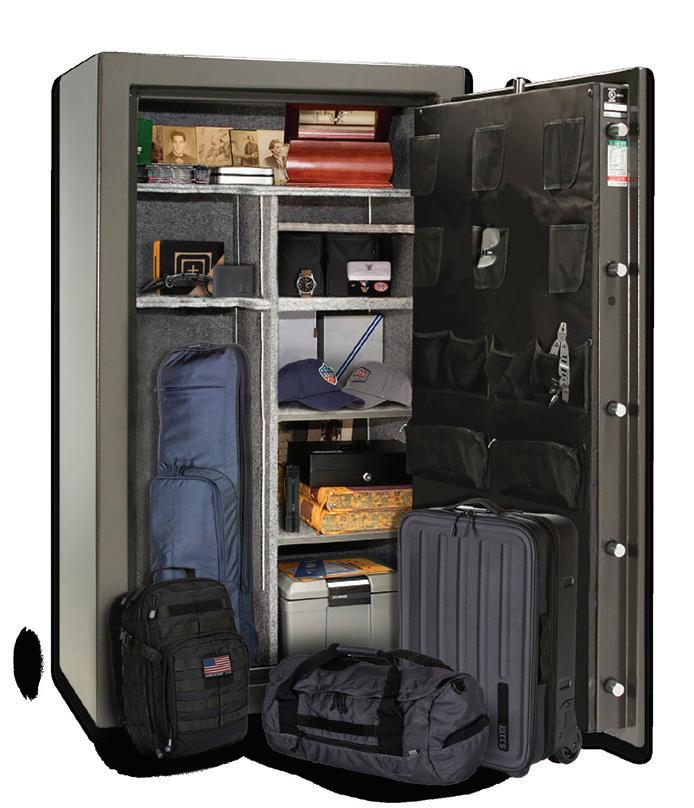




NOW, MORE THAN EVER, I find myself dedicating more of my time and energy to building up today's firefighter. CRACKYL is my letter to you, the firefighter. I want you to read this magazine and feel as though the stories and articles were tailored just for you.

We know we can't change the people around us, but we can most definitely change ourselves and the ways in which we deal with the tough days at work.
We jump on and off fire trucks all day and handle everyone's problems – yet nothing we do is about us. A firefighter's job is to be there for everyone else. As you read this issue, we hope you'll begin to evaluate your own mental and physical health, along with your overall well-being so you can set a benchmark and gauge where you are emotionally, physically and spiritually. Are you happy? Sad? Are you taking care of your health? What about your finances?
Striking a balance between our lives at the firehall and our lives at home can be a struggle at various points in our career. The trick is being able to recognize when you're in control of your life and when you aren't. For a bit of help, we've included articles such as: "Getting to Know You" and "Using Nature as Medicine."
As you can tell by the familiar face on the cover, we were lucky enough to connect with actor/director and producer Steve Lemme from the hit TV series Tacoma FD. We all know that humor – particularly firehall humor – is the best medicine and nobody is funnier than Steve and his coproducer/director and actor Kevin Heffernan. They dig deep into firehall life, pulling out the funniest antics and stories and bringing them to life. Laughter brings firefighters together because, while we all work hard, we play even harder! Enjoy our feature article about Steve and see what creative magic he uses to recreate firehouse life across North America.
I'd like to leave you with this thought: How can you do better? Take a moment to think about how you feel and ask yourself what changes could help you do even better. We want to hear about your discoveries and share your thoughts with other firefighters. We learn best from each other – we always have and always will.
Stay safe, and keep showing up!
EDITORIAL
PUBLISHER KORY PEARN
KPEARN@CRACKYLBUSINESSMEDIA.COM
EDITOR-IN-CHIEF LIZ FLEMING
DIGITAL EDITOR LEAH SOBON
COPY EDITOR MARTHA CHAPMAN
SENIOR WRITER LUKE VANDERMEER
EDITOR@CRACKYLBUSINESSMEDIA.COM
DESIGN
EDITORIAL DESIGNER SARAH ROSS
EDITORIAL DESIGNER NICOLE MANNELL
SALES
INTERNATIONAL DIRECTOR OF SALES & MARKETING BETH FLEETON BFLEETON@CRACKYLBUSINESSMEDIA.COM
INTERNATIONAL SALES MANAGER MATT RUMAS MRUMAS@CRACKYLBUSINESSMEDIA.COM
CONTRIBUTORS
JENNIFER ASHTON, ALI BOTHROCK, MATTHEW BROOM MARTHA CHAPMAN, ANTHONY DE BENEDICITIS, SARAH DIVINE, LIZ FLEMING, NOAH GENTNER, NEIL HENLEY, JOHN HOFMAN, BRITTANY HOLLERBACH, SARA JAHNKE, ALICE JOHNSTON, MARIA KOEPPEL, MEGAN LAUTZ, JOSE MENDEZ, ANASTASIA MILLER, GRAHAM NASH, TRENT NESSLER, ASHWIN PATEL, KORY PEARN, AARON QUINN, ALI ROTHROCK, LEAH SOBON, MICHAEL SCHOLTZ, MAUREEN STOECKLEIN, LUKE VANDERMEER, ANNETTE ZAPP
GEARING UP
PRODUCT RESEARCH GEAR LLC. JASON A. RAMOS
COMIC
CARTOONIST JEFF MAKSUTA
MARKETING PARTNER
FIRST ARRIVING DAVE IANNONE
FIRST ARRIVING CHRIS HEBERT
FIRST ARRIVING TIGER SCHMITTENDORF
CRACKYL Magazine is published four times a year by CRACKYL Media Inc. with copies delivered to firefighters across North America and beyond. No part of the content, including but not limited to editorial, advertising or photography, may be copied or reprinted without the permission of the publisher.
ISSN # 2563-612X
PUBLISHED AND PRODUCED BY: CRACKYL MEDIA INC.
SUBSCRIPTIONS
ORDER A PRINT SUBSCRIPTION FOR ONE YEAR FOR $39.89 CRACKYLMAG.COM/SUBSCRIPTION
TO ORDER MULTIPLE SUBSCRIPTIONS CONTACT: INFO@CRACKYLBUSINESSMEDIA.COM
SIGN UP FOR A DIGITAL SUBSCRIPTION CRACKYLMAG.COM
The opinions presented in our magazine are those of the authors of the articles. We enjoy the opportunity to present a variety of viewpoints but do not necessarily endorse them.
ON THE COVER: STEVE LEMME
PHOTO BY WARNER MEDIA
@CRACKYLMAG
Kory PearnPUBLISHER
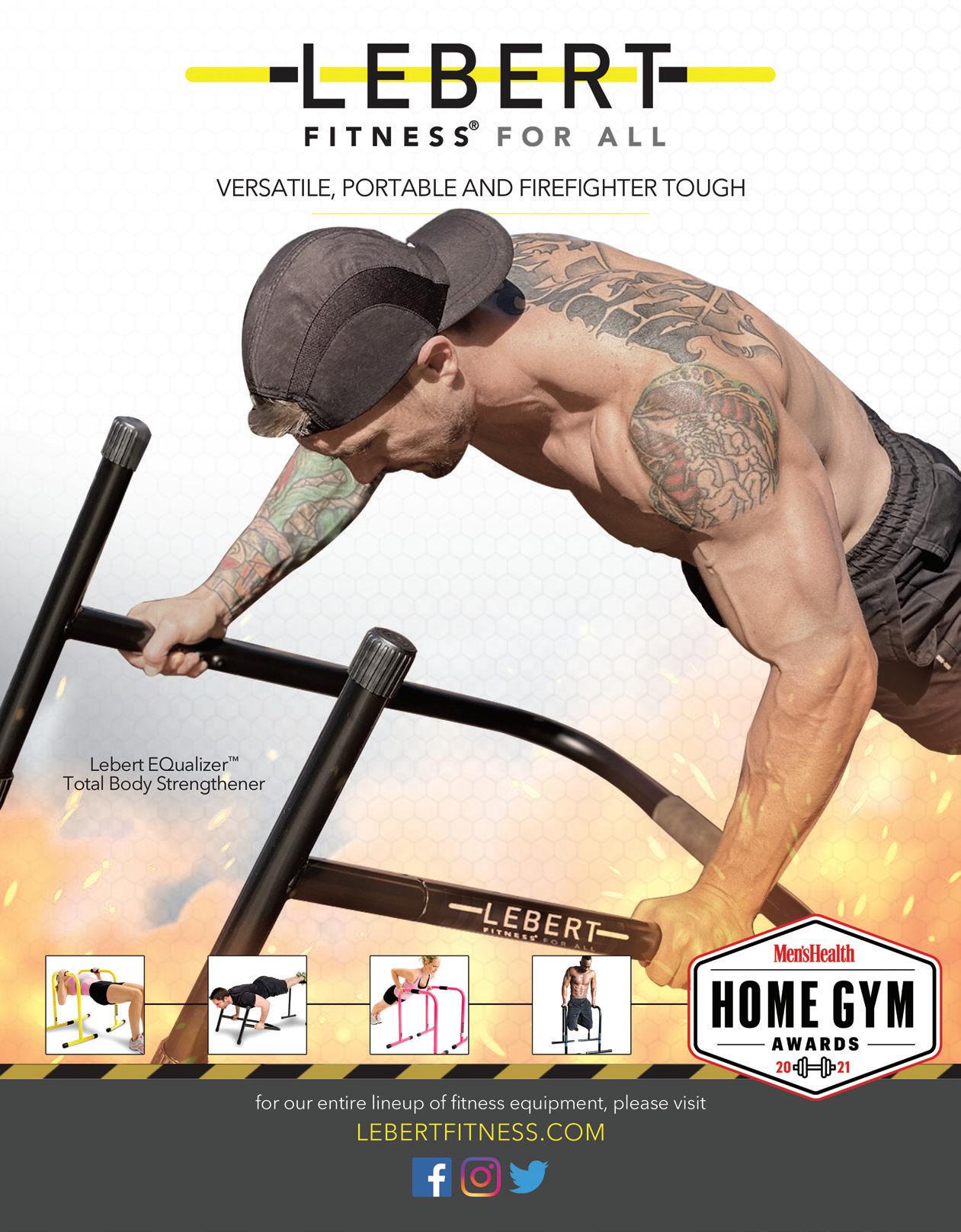


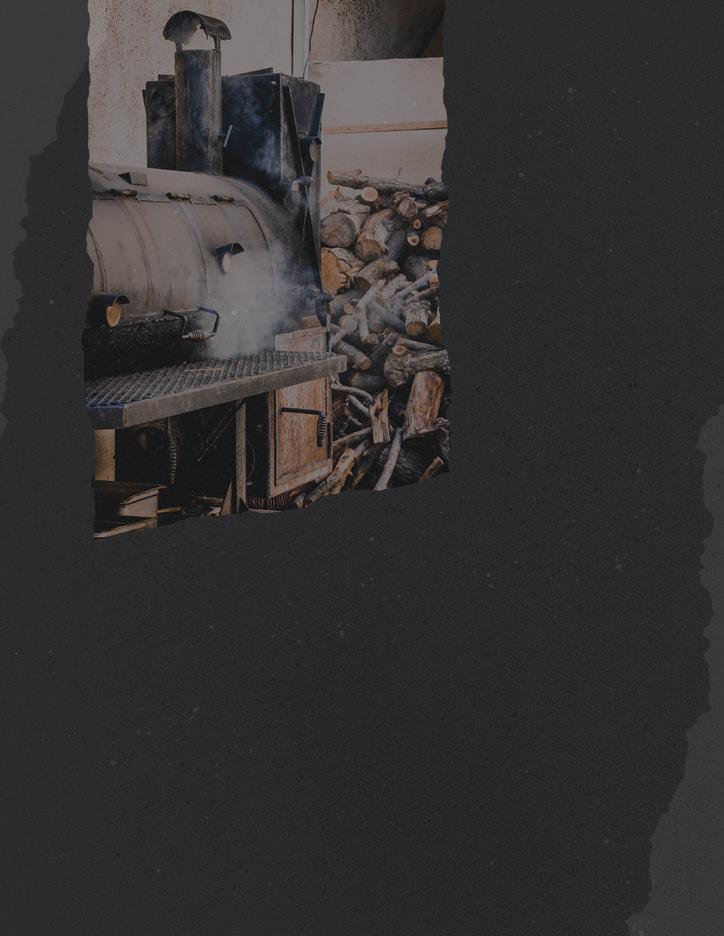



The inspiration behind the name comes from a feeling firefighters experience in the middle of a structure fire when a sudden calm comes over you and when you hear a fire crackling all around a smoke-filled room, but can’t see it. The sound of a fire crackling is imprinted on every firefighter’s mind, and it roots us in this exhilarating and unpredictable profession. We want CRACKYL to become a sounding board for firefighters throughout their careers.
Firefighters are notorious for sitting around the firehall, discussing their problems and offering advice. But the truth is, many of us don’t have the answers. We don’t know why we all fight about the same problems with our spouses, never seem to have enough money left at the end of each month, and just can’t get along with the co-workers who are the most like us.
At CRACKYL, we want to be the firefighter in the hall who has a lot of those answers and provides accurate, practical, and life-changing solutions to the problems we all face.

Although the name CRACKYL was chosen to reflect what a firefighter hears, the spelling also has a unique and specific meaning. The purpose of this magazine is to help firefighters create an immune system for the firehall and the home.
The human immune system is made up of “Y” shaped proteins called antibodies, which are responsible for fighting off illnesses and keeping us healthy. Much as the immune system is a separate function in our body, the letter “Y” functions separately in CRACKYL. It’s built into the masthead to symbolize the proactive health and wellness goals of the publication.
The yellow underline beneath the “C” in CRACKYL represents the need for caution and the importance of keeping firefighters in the caution zone of their lives. By staying safely in the yellow, we avoid any preventable tragedies represented by the thin red line. Much like a traffic light, yellow is our last chance to stop before running into a red.
We want CRACKYL to be available and accessible to every firefighter across North America and beyond. Whether you’re a volunteer firefighter or are paid to do the job, we have ensured that everything inside our magazine is tailored to you. As firefighters, we spend the majority of our time working together and at CRACKYL we want to extend our team to include you and yours. We are thankful for your support and look forward to continuing to serve you and your team.
Stay safe. THE CRACKYL TEAM

When I was a Junior in high school, I started thinking about what I wanted to be. Unfortunately, my dreams of playing in both the NBA and the English Premier Football League were fast disintegrating so I needed to face reality and think about my future. A few friends said, “You’re smart, you should be a doctor.” That settled it for me and I was soon heading confidently off to college as a Pre-Med major. Two years later, I was in the academic advisor’s office trying to change my major.
I had spent my first two years of college feeling anxious, uncomfortable and bewildered as I sat in my chemistry and physics classes. I’d thought this was what I wanted and it was certainly what everyone had told me I should do. I couldn’t, however, shake
the feeling that something didn’t feel right. Nothing excited me about going to class or learning the material, and I started having a hard time seeing my future as a physician. I loved the thought of helping people, but that wasn’t enough to motivate me to pursue this career. It was becoming increasingly obvious that I dreaded going to class, wasn’t engaging in the material, and kept choosing other things to do rather than schoolwork. In class, I spent all my time thinking about my intramural sports and after ten minutes of studying for exams, would quit and play video games.
Athletes often use the phrase “being in the zone” to describe how they feel when they are at their best and fully engaged. I was anywhere but in that zone.
Ultimately, I realized that I had to spend a few difficult weeks doing something extremely uncomfortable but ultimately rewarding – getting to know myself. I thought about my strengths and my passions, and considered what made me happiest. Eventually I started listening to that little voice inside my head telling me something wasn’t right and I knew I had to make a change.
My passion for learning returned when I enrolled in a psychology course. I began loving my classes and could finally picture a future for myself. Psychology provided an opportunity for me to explore my passion for helping others, and it energized me in a way that medicine did not. My admiration for my dad –who is a psychotherapist –was an important influence. Ultimately, I finished college
as a psychology major and one year later started graduate work in sport psychology which was the natural marriage of two of my passions.
If you have been questioning your career choice, ask yourself some of the same questions I wrestled with:
Did people tell you what career you should choose?
Has anyone ever told you how you “should” feel about something?
Have you ignored that little voice inside you when it was saying something important?
Instead of ignoring that voice, listen to it. William Goleman defines self-awareness as “the ability to understand your feelings and use them to guide your decision-making and

Self-awareness starts with paying attention to yourself. The more you listen to that voice inside you, the more you learn and grow. It’s time to start paying attention to your thoughts and feelings and really get to know yourself.
interactions.” That awareness of what’s happening and the impact it’s having on you will influence the way in which you respond. Self-awareness helps us learn from our mistakes, be honest with ourselves about our behavior, understand what frustrates or angers us, identify what makes us happy, develop strategies for coping with stress, and be present and intentional with our behavior. That involves understanding what activities make you happy, what coping strategies help you deal with stress, and how you can achieve your best work performance every day.
Have you ever been angry after returning to the fire station but been unsure about the source of that frustration?
Have you reacted negatively to someone on your crew when there’s been little or
no provocation? Do you have difficulty coping with stress?
Do you lose sight of activities that make you happy? As you learn more about yourself, you’ll begin to be able to identify what inspires or upsets you.
What makes you happy?
How can you increase your self-awareness?
The first step is to start paying attention to your thoughts and feelings. Start with a simple exercise at the end of every day, shift, or big event. Ask yourself two questions: What went well and what did I learn?
This common exercise, widely used by athletes and the military, encourages learning every day, from every experience.
What do you do when you approach an intersection and the light is green? You keep going. At a yellow light, you look for potential danger before deciding whether to speed up or stop. At a red light – you stop!
The process is the same in our daily lives. When do you experience green, yellow, and red lights in your daily life? When are you at your best? Which situations signify danger? When is your body telling you to stop? One of the best ways to increase self-awareness is to start paying attention to yourself.
Over the next few weeks, begin noticing your traffic lights.

When your light is green, it’s a signal that you’re engaged in activities that make you happy. Make note of those moments and activities so you can make more time for them. Yellow lights warn you to be cautious and you’ll feel your body responding accordingly. If something you’re doing causes you concern on a regular basis, pay attention and take note of what’s necessary for you to change that light from yellow to green. The red lights in your life are your body’s way of telling you that you’re doing something harmful – and you need to stop.
My first two years of college were full of red lights telling my body and mind to stop what I was doing. As soon as I started to pay attention to those traffic lights, a better road forward appeared.
As you become aware of your own traffic lights, consider these questions:
• When am I at my best?
• What circumstances and activities increase my happiness and performance?
• What strategies can I use to activate those situations?
• What can I do to get that feeling back when it disappears?
There are a number of different specialty areas within the fire service: rescue, maintenance, leadership, wellness, health and safety, training, and more. Some will suit your interests and strengths better than others, so take time to discover the best matches. In your off-duty hours, give yourself the opportunity to try different activities to see which speak to the authentic you. Do you feel like you’re in the zone when you’re playing a guitar, or doing some carpentry work, or painting or kayaking or hiking? Find what makes you feel best...and do it!
WHEN DO YOU EXPERIENCE GREEN, YELLOW, & RED LIGHTS IN YOUR DAILY LIFE?
Firefighters aren’t athletes – they’re firefighters. They come in all different shapes, sizes, and abilities and they’re all at different points in their careers.
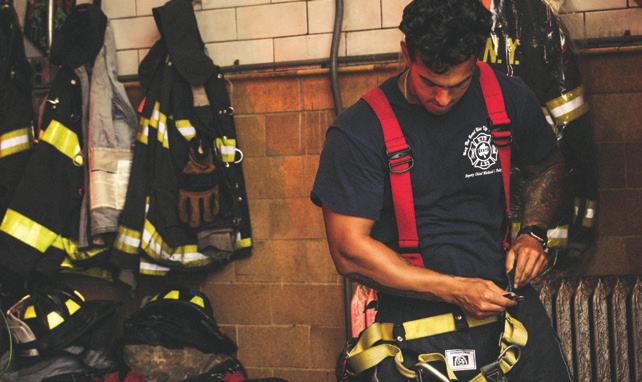
It’s no secret that firefighting is a physically demanding job and fitness plays an important role. Terms like “Occupational Athlete” or “Tactical Athlete” are often used by fitness professionals when discussing the type of physical training needed for optimal job performance. But the reality is firefighters aren’t athletes – they’re firefighters.
There’s a temptation to look for simple solutions to difficult problems but when certain training modalities claim that their way is the only way firefighters should train, nothing could be further from the truth. It’s like saying that “there is only one way to vent a roof” or the “smooth bore nozzle is the only way to go.” We need to step back and assess the needs of the individual firefighter, considering at what point he or she is in a career, and pinpointing the best training solutions for that point.
Firefighters go through four phases during their careers: Academy, Probationary, Firefighter, and Chief. Each phase has different priorities, and understanding these is essential for developing a specific, targeted physical training program.
Different career phases have different priorities, so we can’t simply assume there’s only one way to exercise. Research has shown that one third of all fire service injuries can be attributed to physical exercise. Can’t you just imagine some official discovering this information and creating a policy that declares “no exercise during work hours”?

We need to be smart about how we prescribe exercise. Words like “functional”, “multi-joint”, and “multi-planar” are just that – words, not prescriptions for healthy training. We all walk, squat, bend, and lift every day so our exercise routines should mimic those daily movements and be based on our current fitness goals and, most importantly, the career phase in which we find ourselves.
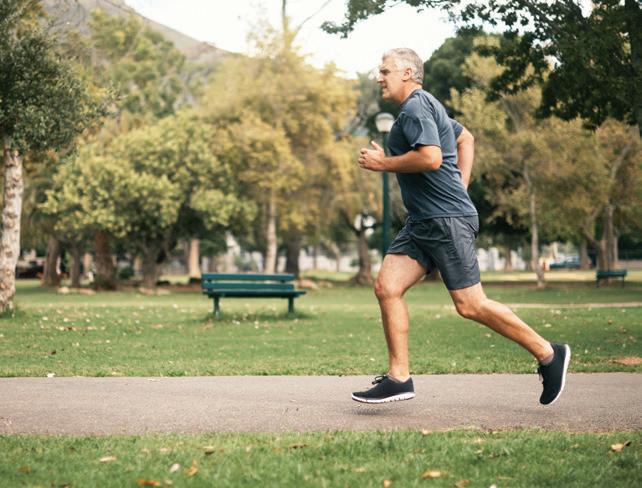
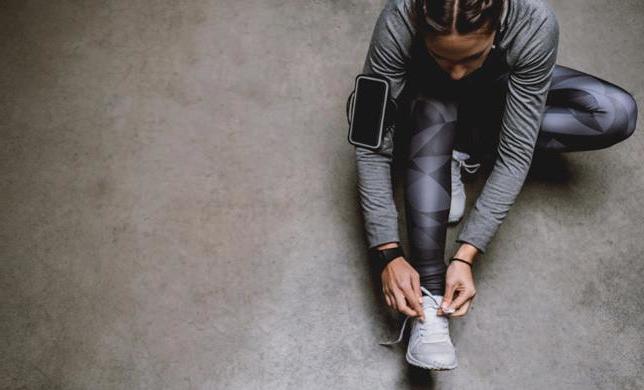
0.1 0.2
0.3
0.4
RECRUIT PROBATION FIREFIGHTER CHIEFPerformance Training
25-29
This phase has the closest association with an athlete because the priority is performance training. Many recruits enter the fire academy in below-average physical shape, and it is our job as fitness professionals to enhance their performance, without causing injury, to help them succeed in the academy.
A periodized program that encompasses all the physical requirements needed in the fire service will allow the fitness professional to develop the most effective means of training for both the class and the individual. It will also allow them to expose their recruits to different modalities that may be useful later in their careers.
Create a periodized program that will complement the drill ground and enhance the fire recruit’s ability to perform. Exercises should focus on activation, mobility and stability, strength, speed, endurance, and recovery. Randomization should be avoided.
Maintenance
30-35
While in the academy, fire recruits enhance their physical fitness and graduate in the best shape of their lives. Once they enter into their probation phase, they’re expected to maintain a certain level of fitness. The challenge is that while trying to learn a new job, maintaining fitness levels can slip
down the list of priorities. Learning engine operations, truck operations, EMS protocols, cleaning duties and inspections, in addition to handling the occasional dispatch call, can be overwhelming. Fitness drops to the bottom of the list.
The average weight gain is 28 lbs, largely thanks to poor eating habits.While in the academy, a recruit needs to consume a large number of calories to maintain a high level of energy. Following graduation, if that huge caloric intake isn’t adjusted, weight gain is inevitable.
To maintain their level of fitness, probationary firefighters should exercise a minimum of two days per week at 70 percent of their aerobic capacity. Believe it or not, just three months of no exercise can cause probationary firefighters to lose roughly half of their aerobic ability! An exercise program should take into consideration schedules at home and at work, and should be designed to maintain aerobic capacity. Still widely regarded as a good measure of physical fitness, a lack of aerobic capacity has been shown to be an accurate predictor of death linked to cardiovascular problems.
High-intensity intermittent training may improve both anaerobic and aerobic energy systems significantly, so we recommend performing intervals runs. Fitness 35
Once firefighters have completed probation, they progress into their jobs and begin to realize that they are out of shape and getting older! As we age, we lose flexibility, muscular strength and endurance, and our aerobic capacity begins to decrease. Testosterone production begins to slow down in males
and we start to notice more belly fat. Oh yeah, we’re probably married, have a mortgage, and have even less free time than we did in our probationary period. Then, one day during a routine call, we find ourselves out of breath. Just a few years ago, we were able to perform the task at hand without hesitation, but now, we’re winded and struggling for oxygen. The tough reality hits – and we realize we’re out of shape! Given that the NFPA reports that most injuries for career firefighters occur between the ages of 30 and 39, staying in shape is essential.
Getting the firefighter to move again is our main priority. It doesn’t matter if it is jumping rope, using an elliptical, or performing a circuit. What is important is starting to do something to establish healthy patterns and make fitness a priority. Over time, the exercise program can be adjusted to ensure that participants not only look and perform better, but feel better too. Encouraging movement is vital at this stage.
Anything! Walk, run, swim, bike…. just start making fitness a priority. Injury
Over the years firefighting takes its toll on your body. Low back pain, shoulder pain, and other physical injuries are very common, even if you exercise and take care of your body. It’s really only a matter of time before we all experience some type of back pain. Our priority at this stage, therefore, is injury prevention.
Because the job places so much stress on the body, we should incorporate movement patterns that focus on thoracic and hip mobility. Many firefighters have weak glutes and tight hip flexors; therefore, stretching and strengthening those areas is recommended. Pelvic stability diminishes over the years and it becomes difficult to maintain a neutral pelvis during various activities. Combat this by including exercises such as split squats and the “farmer’s walk” to help strengthen the lumbo-pelvic region. Finally, use a foam roller to loosen up tight muscles or and untie the knots.
Refrain from explosive-style movements such as box jumps or Olympic lifts, and focus on quality over quantity. The focus should be on getting you healthy for retirement.
“Vision without action is just a dream, action without vision just passes the time, and vision with action can change the world.”
- Political leader and philanthropist Nelson Mandela
Goal setting: it’s a topic guaranteed to make people roll their eyes and sigh deeply, but it doesn’t have to be that way.
The issue isn’t the goals we set, nor the desire we have to achieve them. It’s the context or framework in which they’re set.
Many of us set goals based solely on outcome: “I want to lose 20 pounds.”
“I want my knee to stop hurting.” Or worse: “I really have to ___”. Do these sound like goals you've had in the past? If you succeeded, I’d love to know how long you were able to sustain it. If you failed, then let me ask what made you fall short.
For many of us, outcome-based goals are a psychological disaster, constantly hanging over our heads like a dark cloud. We find ourselves either avoiding them like the plague through procrastination, or driven to complete them by sheer external pressure. “My doctor says I’ll have a heart attack if I don’t lose 30 lbs.”
“My wife tells me I should eat better and stop drinking.” Or “My friends keep bugging me to stop smoking.”
This is where outcome-based goals often fall flat on their faces – they’re either too short-sighted or involve external pressure that is unsustainable. Even if we’re motivated to reach the goal, we’re often overwhelmed and stressed about how to begin. The problem with outcome-based goals is that they don’t tie into the bigger picture – they’re just too small a slice of the large pie that is your life.
How do we avoid goal-setting pitfalls? Look at the bigger picture instead of becoming tangled in the weeds. If we change our narrow view of the task at hand, we can open our eyes and focus on the larger picture of our life. At this point, we can identify trends, processes and visions.
If you’ve ever had a dream about your future, it probably included a vision of your Self – with a capital S. This future you is probably someone stronger and more resilient, who has better habits and is a much happier person. It is the development of this image and the trajectory associated with it that reveals the roots of your goals.
“Process-oriented” goals enable us to enact bigger and more positive changes, including making lifestyle modifications that build better habits. We’re not talking about a crash diet that uproots your entire life and causes you to starve yourself for the sake of better “health,” only to temporarily lose a few pounds. Instead, small, subtle changes compounding over time will create large results that could be years in the making. A lifelong journey of refinement that takes you through various versions, not only of your goals, but also of you as a person: that’s the kind of change that makes a real difference.
If you’re confused – no worries. Here’s an example to demonstrate what I mean. My own process-oriented goal is sort of a personal mission or vision statement: “To live a healthy lifestyle and to be an asset in my career.”
Let’s divide it into two sections:
To me, this means prioritizing my health in all ways, including….
MAKING SMARTER DIETARY DECISIONS
This doesn’t mean that I have to change my diet completely and cut out everything all at once. Instead, it means starting with small changes and letting them snowball. Portion size is a small but important step towards healthier eating. The big takeaway here is that you don’t need to cut out certain foods completely and say, “I can’t eat this.” Instead, you need to be more aware of the decisions you make. "I still enjoy ice cream, but I save it for special summer occasions." The other major takeaway is that it’s okay to fall off the horse once in a while – no one’s perfect. Don’t beat yourself up. Instead, get back on the horse and keep trying.
BEING PHYSICALLY ACTIVE
You don’t have to buy an expensive gym membership and start training six days a week. Start with small activities to boost your overall activity. Go for a walk, get on your bike, and take the stairs instead of the elevator. These are all baby steps that will begin to build into big changes if you keep the momentum going.
PRIORITIZING MENTAL RESILIENCE
First responders are traditionally terrible at this, but we can get better. Instead of being a workaholic, constantly going out for drinks and covering up your lack of sleep with the oh-so-tempting cup of coffee that’s always brewing at the fire hall, start making small changes to recharge your batteries, de-stress and unwind in ways that are good for your physical and mental health. Try putting your phone down, practising better sleep hygiene, and employing some meditative practices.
SPENDING TIME WITH THOSE YOU CARE ABOUT
I’m not saying that you can’t go out for beers with your buddies, but if you do, maybe have one beer instead of four. Focus on making real, authentic connections and spending time with those you care most about – even if that simply means calling an old friend.
This second half of my goal means doing all I can personally and professionally to be the best that I can be.
I don’t have a hero complex. I simply want to be a part of a high-performance team – one that rises far above the minimum standards mentality in our industry. At the end of the day, we firefighters are tasked with protecting the lives of others and we must do everything in our power to meet that responsibility. As the old saying goes, “Would you want you to rescue you?”
I keep that asset component dangling in front of me like a carrot in front of a horse. It’s constantly in the foreground, influencing the decisions I make in every dimension of my life. It’s what makes the first half of my vision statement easier by making me ask myself: “If I don’t work out this week, am I still working at becoming an asset?” Or “If I don’t know the equipment on my truck, am I an asset?” My decisions are really made for me.
Find your vision statement (an inspirational statement of your ideal future), and in the process, you’ll discover your most important goals. Reaching and accomplishing each process-oriented goal will drive you closer to your vision, even as it changes and evolves over time. You’ll grow and morph with it as you become an even better version of who you want to be. Let the old you slowly fade and let the new you rise like a phoenix from the ashes.
STOP & SMELL THE ROSES.
OK, there may not be too many roses where you are, but the point is to take a moment to appreciate nature every day. Even a city’s inner core has birdlife and trees and sky, and each is a gift.

Sad to say, happiness can’t be bought, negotiated or forced. But break it down into little actions every day and you may find happiness creeping up on you. Even better? It needn’t cost you a dime. Here are some ideas to get started on your own personal happiness project.

EMBRACE THE STUPID TAX
CONCEPT.
I was beating myself up about dinging my car (and the resulting expensive repair bill) when a friend intervened. “Think of it as Stupid Tax,” she suggested. “You did something stupid, and just like a regular tax, it’ll cost you. Pay it, forget it and move on.”

BE A BLOOD DONOR.
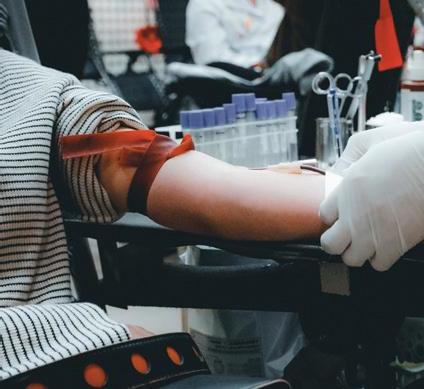
An hour of your time could change someone’s life.
NEVER STOP LEARNING.
High school or college may be a distant memory, but that doesn’t mean you can’t continue to learn. It will make your life richer and more diverse. What’s always interested you? Maybe now’s the time to learn more about it.

DO STUFF WITHOUT BEING
ASKED.
Little things like clearing the table, making your workspace a little neater and taking out the trash will make those around you value you more.
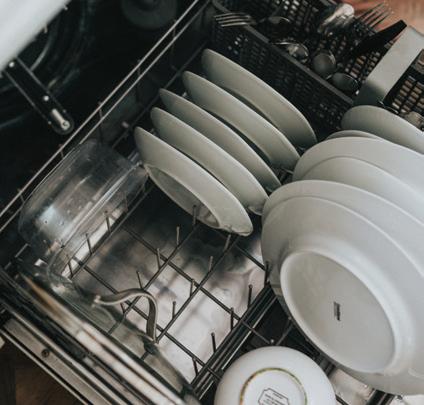
We all have debit and credit cards, but they aren’t much good when you want to help out a busker or a homeless panhandler. Have change at the ready – and give them more than you think you should.
TAKE A MINUTE TO BE GRATEFUL FOR SOMETHING SMALL.

PUT YOUR PHONE DOWN.
Unless you are on call, chances are that text or email isn’t urgent. When your phone’s not in your hand you don’t have to resist the urge to “just check it.” You’ll be more focused on your real life.

It’s official: author Larry Olmstead’s book Fans: How Watching Sports Makes Us Happier, Healthier and More Understanding says that people who support a sports team are less depressed, less lonely, less angry, less tense and more extroverted. Like you needed an excuse to cheer on your favorite team!
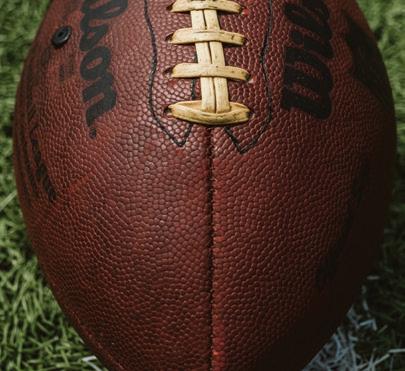
11

GIVE HUGS.
Hugging was just one of the sad casualties of COVID. But there’s nothing to stop you hugging those in your bubble. You never need an excuse to hug.

SAY THANK YOU.
READ TO YOUR KIDS.
You’ll help them build a life-long love of reading (and learning), plus enjoy some lovely quiet moments with them. You’d be surprised how many kids who are old enough to read by themselves love being read to.

15
IF YOU WANT SOMEONE TO LIKE YOU, GET THEM TO TALK ABOUT THEMSELVES.

FORGET MULTITASKING.
It’s considered a huge talent to be able to multi-task, shifting effortlessly from one project or task to another and back again. Actually, multi-tasking makes us very inefficient. When possible, focus on just one thing at a time and you’ll be more efficient and faster.


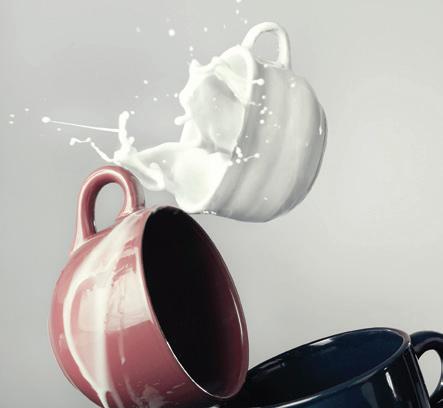
PAY
COMPLIMENTS.
We all appreciate a compliment. “Those ribs were great!” “I thought you handled that really well.” No need to be gushy. But you have just made someone feel a bit better about themselves, and there’s nothing wrong with that.
16 17
HOW BIG A DEAL IS IT, REALLY?
The next time you’re really annoyed at something, someone, or yourself, ask: how much will this matter a year from now? Even a month from now? Bingo: instant perspective.
REMEMBER: ENVY SUCKS.
Your neighbor's installing a swimming pool? That guy at work has a new truck? Don't envy them: envy can be corrosive and pointless. Studies have shown that having money doesn’t actually make people happier. It’s not getting what you want: it’s wanting what you have that makes you happy.
We all have problems, issues, sadness. But a positive outlook will actually make you happy. Be that person who brings oxygen into the room and watch your efforts pay off. And all of a sudden, you might just discover that you’re happy. Not a bad way to be.


When Wimpy was hungry, he’d hit up his old pal Popeye: “I’ll gladly pay you Tuesday for a hamburger today!”
While we wouldn’t take kindly to being called Wimpy, firefighters have big appetites and an occasional (maybe more than occasional) lack of funds, so we do share something in common with the scrounging cartoon character.
Our lives are busy – more so than most. While it would be great to head to a shift at the firehouse, anticipating that we’ll have ample time to make a salad from scratch and cook a nice steak, the reality is that a call will likely come in halfway through the preparations. The steaks will stay uncooked and the salad will wilt as we head off to save lives. The hard-earned money we put into making a healthy meal will go to waste and we’ll start to believe that a takeout hamburger and fries from a fast-food joint is the better solution.
The real problem is that our shifts don’t change, and neither do the demands on our time. Our “occasional” take-out habits stretch to five or even six days a week, and before we know it, we start to look as if we’ve just strolled out of the movie “Super Size Me”. And we all know
what happened to that guy when he ate exclusively McDonald’s food for a month!
Let's face the facts. When the public hears that a firefighter has died in the line of duty, they assume the cause of death was a fire. The unfortunate reality is that the leading cause of death for firefighters in the U.S. is heart disease. In fact, in 2018, there were 82 U.S. line-of-duty firefighter deaths – a staggering 33 of them caused by heart attacks.
It’s not hard to understand. Given the unpredictable nature of our jobs, quick and easy meals are a tempting option. But quick and easy doesn’t always mean healthy, and the numbers show that our eating habits are having a dangerous effect on our health.


Putting names and faces to tragic statistics highlights the severity of the problem. Lieutenant Kevin McRae was only 44 when he responded to a highrise building fire in Washington, D.C. He did his job well, but collapsed as he left the building and tragically died of a heart attack. Just the day before, he had taken his 18-year-old son Da’Von for a prom tuxedo fitting.
By Luke VandermeerDeputy Fire Chief James Tate Sr. was an accomplished and much-admired firefighter. He retired in 1989, but sadly died just nine years later, after suffering three heart attacks and waging a battle with cancer.
FAST FORWARD TO 2017 AND THE CREATION OF A PROGRAM CALLED “FOOD ON THE STOVE”, CREATED BY JAMES TATE’S SON, JONATHAN TATE.
Launched with the idea of giving to the people who continuously give to others, “Food on the Stove” has had a tremendous impact on the firefighting community of Washington, D.C. Even though the program has been around for only a few years and the implementation is still being tweaked, the goal is simple: to get healthier, cost-effective meals to firefighters so they can stay fit and protect the public. The name is a double entendre, of course. We’re all aware that the biggest cause of house fires is food left to burn on the stove!
Jonathan Tate started “Food on the Stove” with just five steaks, a few sweet potatoes and some broccolini for his fellow firefighters. He planned to have

a chef, a nutritionist and a cameraman there for the launch but even though those plans fell through, Jonathan was left with his healthy food and an incredible idea.
The food was cooked and much appreciated, of course, but what was really created that night was much bigger. Jonathan gained the support of his firehouse and his family and he credits much of his success to them. Healthy food can be given to our givers as long as we have the right support.
Many people believe that firefighters’ meals are funded by the government. Sadly, not true! The ingredients to make every meal are paid for by the firefighters and those costs can mount quickly. To help his healthy initiative gain momentum, Tate worked to secure discounts at local grocers, making it possible to buy healthy foods at reasonable prices.
On the Stove”, Tate’s team visited local firehouses to cook a healthy meal for each firefighter. Thanksgiving 2018 saw turkeys delivered to every firehouse in Washington, D.C. - 34 in all. Those who

received the free, healthy meal were then asked to pay the favor forward to other firehouses. Word spread, as did interest in healthier meal choices. Tate partnered with “Farm to Firehouse”, a local meal delivery service, making it possible for “Food on the Stove” to have local grocers and farmers source, package and deliver healthy meal kits straight to firefighters for less than $10 per person.
A typical meal includes peruvian chicken, sweet potatoes and vegetables. And here’s the best part: thanks to generous donations that cover operating expenses, these meals are delivered at no cost to the firefighters.
Despite the global pandemic, “Food on the Stove” has continued to grow. By joining forces with local chef Erik Bruner-Yang and his initiative “The Power of 10”, Tate has been able to both access healthy meals for his fellow Washington firefighters and help keep local restaurants afloat. Bruner-Yang’s initiative raises funds on a weekly basis that enable restaurants to keep staff on the payroll. Through the help of generous donors, “Food on the Stove” purchases these meals and provides them to firefighters.
WHAT’S NEXT FOR JONATHAN TATE? HIS DREAM IS TO PURCHASE THE VERY FIREHOUSE IN WHICH HIS FATHER SERVED AND TURN IT INTO A FOOD RESOURCE CENTER, WITH A MARKET AND RESTAURANT FOR THE PUBLIC AS WELL.
The common theme here is giving. There’s an old saying: “If all you do is take, you’ll never have enough. If all you do is give, you’ll never run out.” Every day, firefighters give their time, energy and even their lives. “Food on the Stove” and its associated companies have found a powerful and healthy new way to give back to them. It sure doesn’t look as if they’ll be shutting down the kitchen anytime soon.
No need for firefighters to ask to pay Tuesday for a hamburger today. Thanks to “Food on the Stove”, Jonathan Tate will bring them a healthy meal today – for free!
IF ALL YOU DO IS TAKE, YOU’LL NEVER HAVE ENOUGH. IF ALL YOU DO IS GIVE, YOU’LL NEVER RUN OUT.
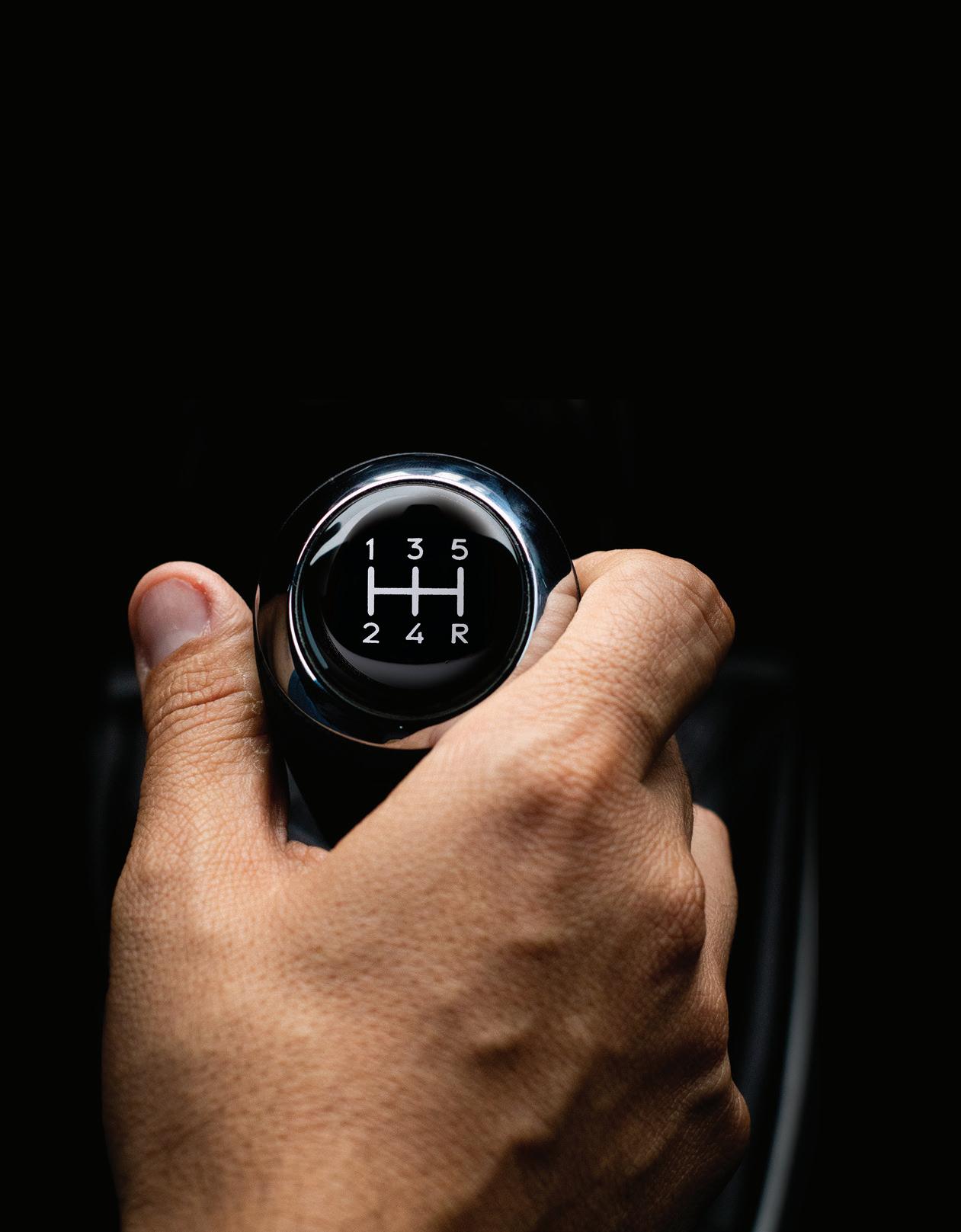 By Liz Fleming
By Liz Fleming
THERE’S ALWAYS PLENTY TO KEEP US BUSYAT THE FIRE STATION, AT HOME AND MAYBE EVEN AT A SIDE-GIG. HOW CAN WE STAY MOTIVATED TO GET EVERYTHING DONE? INSTEAD OF LETTING A NEVER-ENDING LIST OVERWHELM YOU, TRY THESE RESULTS-ORIENTED STRATEGIES:
A widely-recognized technique for self-motivation, chunking is the process of taking a big task and breaking it down into bite-sized pieces.
U.S. Navy SEALs facing physically or mentally demanding situations use chunking to avoid being daunted by the size of a task. Instead, they break it down into bite-sized chunks to focus on, one by one.
We can apply chunking to our daily tasks by separating them into bite-sized pieces to avoid becoming overwhelmed by the whole.
Our brain’s willpower system is designed for efficiency. We have unlimited willpower, but our brains can rebel, if enough willpower has been expended on a given task for one day. Faced with a gargantuan task, our brain hits the stop button.
If that same job is broken down into a series of smaller tasks - or chunks – that can be tackled individually, the brain suddenly provides the necessary willpower.
Struggling with a project that’s larger than you think? Chunk it!
CHUNKING
Our belief in our willpower will greatly affect how much we generate. If we believe that our willpower is limited, it will be. If, on the other hand, we believe our willpower is unlimited, we’ll have access to far greater reserves.
Research shows that our daily stock of willpower far exceeds our daily demand for it, but our brain tends to set limits to conserve and use it efficiently. When you know those unused reserves are there, you can convince your brain to loosen its restrictions, which will boost your confidence and your ability to push through difficult tasks.
Low-level thoughts are short-term and specific, usually starting with “How”: How will I get into better shape? How will I lose weight? How will I find time to get to the gym? By contrast, high-level thoughts are long-term, more general and focused on the reasons behind our actions, often beginning with “Why”: Why do I want to get fit? Why do I want to lose weight? Why do I want to use the gym?
Research shows that people who spend more time on high-level thinking are able to exercise greater willpower than those who concentrate on low-level thoughts.
To be sure, we need low-level thoughts to plan our actions; however, too many people limit themselves to those low-level thoughts about their most important goals.
It takes conscious effort to focus on high-level thoughts when we don’t need them to carry out our plans. What we do need them for, however, is to boost our motivation. Higher-level thoughts create a sense of purpose and meaning, and motivation stems from that.
1 3 5 R 2
CONFIDENCE
The more confident we are about our ability to accomplish a task, the more willpower we will have to accomplish it. If the mind doesn’t believe a certain task is do-able, it simply won’t waste precious motivation on it.
Our brain eagerly assigns willpower to tasks we feel confident about achieving, but is stingy with those we’re iffy about. This is another reason for chunking: it creates smaller goals that we can be confident about reaching.
As we get small wins – making it through one chunk of a difficult task at a time – our confidence grows, and so does our willpower. The greater our confidence, the less willpower we need to accomplish the task.
BELIEF
HIGH-LEVEL THINKING
4

IDENTITY
By aligning our identity with our goal, we reduce the amount of willpower needed to achieve it. If, for example, our goal is to be fit and more active, we should try to view ourselves as someone who is already fit and active, and incorporate that into our identity. Our mind will then assign more willpower to achieving and maintaining our goal.
One effective way to align our self-image with our goal is by changing the language we use to describe ourselves and our behavior. Rather than talking about getting back in shape, we can talk about maintaining our fitness. Identifying with our new self-image by reading fitness magazines, talking about fitness, and embracing our goal will motivate us to make it part of our identity, and we’ll require less willpower to stay on track with our fitness activities.
TRY THIS
Take a sheet of paper and write down all the reasons you can think of for getting fit, or losing weight, or going back to school, or saving money - whatever you need motivation for. Think it out, reach down deep, and spend some time working on it. This exercise will give you a frame of reference for the higher-level thoughts that will help motivate you as you seek to improve your life.
IMAGINE PAYDAY ROLLING AROUND ...AND FEELING NOTHING. NO SIGH OF RELIEF. NO DREADFUL ANXIETY. NO WORRIES. NOTHING.
Here’s the good news. It’s possible to enjoy life free from those gut-wrenching, paycheckto-paycheck challenges. It probably wasn’t money that drew you to this job: nevertheless, if managed well, your firefighting salary can enable you to both live well and achieve longterm financial success. You can exchange financial stress for financial success by taking command of your cash flow.
We’re used to hearing the term "cash flow" used in a business sense. Every public company in the United States has to file a “Statement of Cash Flow(s)” (a document detailing the amount of cash that comes into and goes out of the business) with the Securities and Exchange Commission.
Positive cash flow means there is excess cash that can be re-invested in the company or returned to shareholders. Negative cash flow, on the other hand, leads to a reduction of cash on hand or an accumulation of debt.
Your household operates in precisely the same way. If $1,000 is deposited into your checking account and you spend $900, you have positive cash flow. If you spend $1,100, you have negative cash flow. And that negative cash flow is paid for through debt – often high-interest credit cards.
Now, ask yourself this: If a business managed its cash flow the way you’re handling yours, would you want to invest in it? If the answer is no, it’s time to make some changes.

You are the Chief Financial Officer of You, Inc. and it’s time to start to take command of your cash flow and conquer your financial stress.
The basic budget equation begins with income, subtracts expenses, and leaves you with the difference – your cash flow.
Negative cash flow moves you further away from your goals, while positive cash flow moves you closer. In order to achieve that positive cash flow, you have two choices: increase your income or decrease your expenses.
Most of us choose option one. Increasing your income should make things better, but strangely, that strategy doesn’t always work. Have you ever received a raise and then watched your lifestyle demands increase to swallow it? As writer and philosopher Ben Franklin noted in his 1758 essay The Way to Wealth: “What maintains one vice, would bring up two children. You may think perhaps, that a little tea, or a little punch now and then, a diet a little more costly, clothes a little finer, and a little entertainment now and then, can be no great matter; but remember, ‘Many a little makes a mickle.’ Beware of little expenses. A small leak will sink a great ship.”
Don’t rely on increasing the income side of the equation alone to solve your financial challenges. You’ll also need to plug and patch cash flow leaks to keep your financial ship afloat.
Start with creating a budget – your financial pump panel. Your money comes in, your budget tells it where to go, and you are left with the residual. As renowned author and leadership expert John Maxwell says, “A budget is telling your money where to go instead of wondering where it went.”
Plug budget leaks by avoiding impulse spending, cutting autopilot expenses, and optimizing your significant expenses.
Amazon’s one-click purchase system, for example, makes it easy to spend, but after the fifth click of the day those purchases really start to add up. American tycoon and philanthropist Warren Buffet says one of the best pieces of advice he ever received came from Tom Murphy, former CEO of Capital Cities/ABC Inc. “Warren,” said Murphy, “You can always tell someone to go to hell tomorrow.” Likewise... that Amazon purchase can always wait another day. Pay particular attention to autopilot expenses (e.g. subscription services) and hidden fees (e.g. account fees). These budget busters are often
forgotten so if they aren’t delivering value to your life, cut them out.
Lastly, optimize your largest expenses. Housing, transportation, and insurance consume most of our income. Find creative ways to reduce your costs and don’t be afraid to make drastic changes. Car payments never made anyone rich, so consider selling a vehicle. You’ll find investing that additional positive cash flow – equal to what your car payment used to be – can make a huge difference in your financial picture.
According to Experian, the average new car payment is $554 per month. If you invested that same monthly amount from age 30 to age 65 and earned an eight percent return, you would accumulate more than $1.2 million over that 35 year period. Is having a new truck sitting in your driveway worth $1.2 million? Probably not.
Now that your cash flow leaks have been plugged, you can put your income, your most valuable asset and most powerful wealthbuilding tool to work.
If you are a firefighter with an income of $75,000 per year, you will earn $2.25 million over a 30-year career. If you invest just 15 percent of that, you could grow a $1.4 million nest egg.
When you create positive cash flow by spending less than you make, every incremental dollar earned can go directly towards goal accomplishment. Are you working to pay off debt? Are you planning to start a business? Are you investing for retirement? Every extra dollar earned gets you closer to your goal. Working overtime is far more enjoyable when the money gained is generating financial success instead of warding off financial distress.
So....have we got it all figured out? Unfortunately, not quite. Even if you’ve taken steps
to create positive cash flow, money stress can still occur. Sometimes we simply feel stuck. We’re earning plenty of income but going nowhere.
As motivational speaker Tony Robbins puts it, “Progress equals happiness.” If you want to remove stress and create happiness, you need to strive towards a goal.
Set SMART goals (specific, measurable, achievable, realistic and time-oriented) concerning your finances. Write them down. Put them in your notes app. Pin them to the refrigerator. Keep your goals visible and present in your mind because you’re more likely to strive towards and achieve what you see.
Remember that your goals are your best guess at your desired future. If life changes, those goals can be modified. We all know life can be uncertain, so we can’t allow our budgeting and planning to create a false sense of security. The point

is to keep moving in the right direction and let your budget give you the flexibility to zig when life zags, making sure you never get knocked too far off your path to success.
Money management is stressful. If you aren’t sure where your next meal will come from, anxiety is well-founded! If your basic needs are taken care of, however, don’t allow your shortterm-focused survival brain to continually override your longterm-focused analytical brain.
Every firefighter understands financial stress. You aren’t alone. Be proactive, not reactive. Create a budget, analyze your cash flow, patch the leaks, and set goals. The money stress won’t suddenly disappear: in fact, it may never entirely go away. But, by taking command over your finances, you will begin to notice that you are less anxious, more focused, and better prepared to deal with life’s uncertainties.
BEWARE OF LITTLE EXPENSES. A small leak will sink a great ship.
The world’s first one-sizefits-all tourniquet, the T-RING fits all digits. Designed by a physician, the T-RING provides immediate hemostasis while applying a fraction of the pressure of other tourniquets. Its bright red color and unique design make it faster and safer to use and nearly impossible to forget on a digit. thetring.com
The ATV Swim Vessel is designed to enable you to include full range-ofmotion swim strokes, stationary leg kicks, banded resistance and rowing, low-impact step training, stretching and heated-water aerobics in your workout routine. Target different muscle groups for swimming, upright aerobic fitness and seated strength conditioning simply by changing your position. Every ATV model offers hydrotherapy massage seats for pre-workout warm-ups and post-workout recovery.
atvswimspas.com
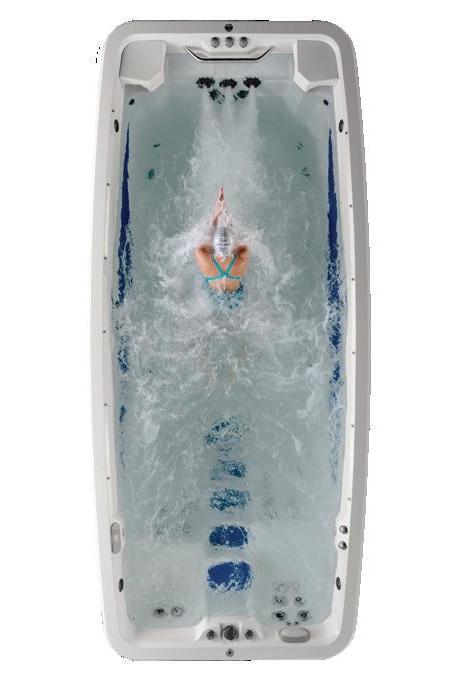
When you’re on the go, far from an electrical outlet, the Obsidian Hybrid Kit is the answer to all your power needs. Encompassing the very best of the Obsidian Solar panel collection (Obsidian Portable Solar Kits, Integration Kit, and Solar Side port) into one complete package, this kit will enable you to harness the power of the sun wherever your travels may take you.
zampsolar.com/pages/obsidian-series-hybrid-kits

Blaklader pants aren’t made for just any craftsman. Their cotton canvas base covered by extended CORDURA® leg shields, adjustable knee pads and reinforced utility pockets, side pockets, ankle cuffs and belt loops make them the pants of hammer-wielding warriors on any jobsite.

blaklader.ca
Engineered to be worn on the outside of everyday turnout gear for fast, immediate access, the patent-pending serrations make the LIFELINE FIRE™ incredibly effective. Far more than a wire or glass cutter, the LIFELINE FIRE™

When you’re diving deep into muck and sludge you need the powerful Casio Master of G Mudmaster on your arm. It’s designed with multiple gaskets on the pipes that guide buttons and shafts to ensure that mud stays out, impacts are absorbed and function is enhanced.
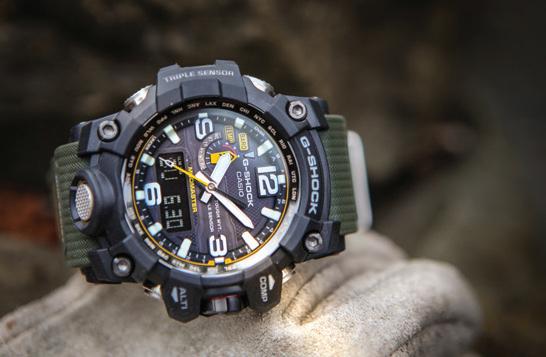
gshock.com/watches/master-of-g/gg1000-1a
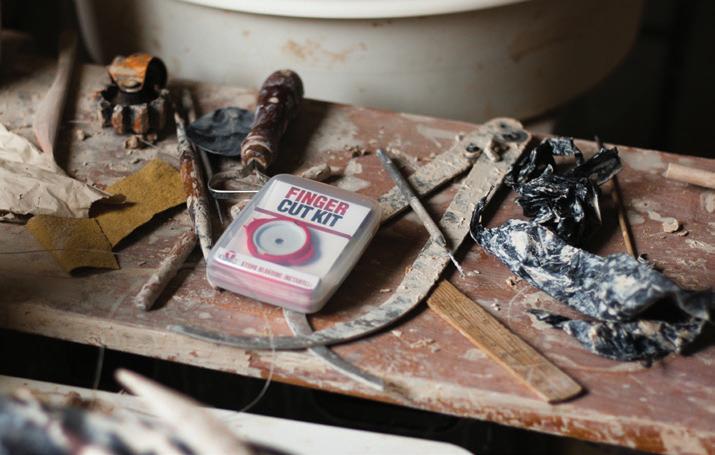
With all the functional features of the original 3 DAY ASSAULT Pack, this newest CL version includes the signature 3-Zip design to provide ready access to the pack's contents as well as wide compression straps to cinch things down to minimize bulk when not fully loaded. In addition to a built-in laptop sleeve, this pack features two zippered accessory compartments to provide quick access to smaller essentials.

mysteryranch.com/3day-assault-pack
Garden year-round with the Bounty Elite, upgraded with nearly 40 new features. Take the guesswork out of growing with the Bounty Elite’s 9-pod configuration and 24” of height. Grow plants naturally in water with no need for soil or mess. aerogarden.com
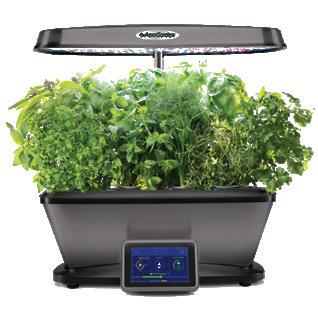
Designed to keep you hydrated through your every workout, Cerasport is great for your daily five-miler or circuit training, yoga session or spin class. Mix one stick with 16 oz of water for the perfect balance of carbohydrates, sodium, chloride and potassium you need to power through.
Created along with doctors from Johns Hopkins University, this rice-based rehydration formula is scientifically proven to rehydrate better than a sports drink made with simple sugars, allowing the body to absorb the electrolytes and fluid easily and with maximum efficiency without the stomach distress. All natural, non-GMO, vegan friendly and certified gluten free. ceraproductsinc.com

The most demanding racers and tourers know that the SCHUBERTH C4 PRO combines cutting-edge technologies with top-grade quality. Its compact shape, sleek interior fittings and optimized acoustics make this an extremely comfortable flipup helmet. No wobbling and very low noise levels, no matter what speeds you hit. Compatible with the invisible SC1 communication system. schuberth.com/en

The Kestrel 500 Weather Meter is lightweight, handheld, and offers data logging capabilities – a completely portable weather station and meter. Measure every environmental condition as well as wind direction, crosswind and headwind/tailwind. Drop-proof, dust-proof, waterproof and able to withstand extreme conditions without damage, this meter logs over 10,000 sets of time-stamped data and includes a built-in dual color backlight and an extra-strong polycarbonate lens. An improved tripod mount and waterproof data transfer cable make the innovative Kestrel 5 Series user-friendly and reliable. kestrelinstruments.com

Become the ultimate home pizza chef with a backyard Ooni pizza oven. Designed to heat up to over 950˚F in just 15 minutes, the Ooni is perfect for making restaurant-quality, ultimate-crust pizza in just 60 seconds. Choose wood-fired or gas-powered convenience – and have perfect pizza every night!
ooni.com
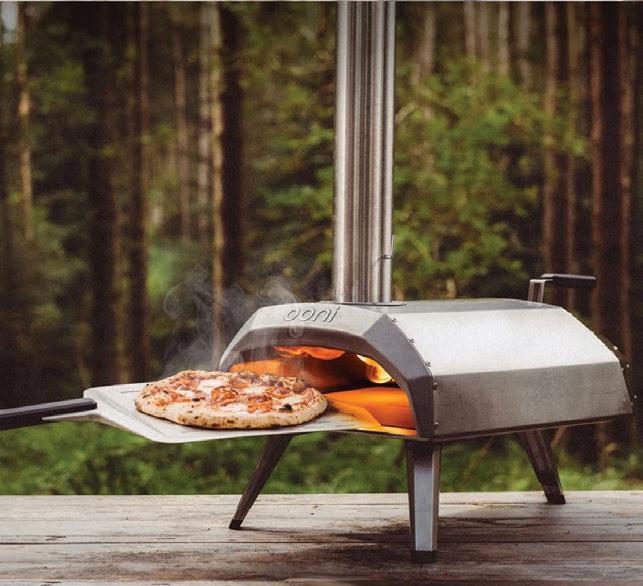
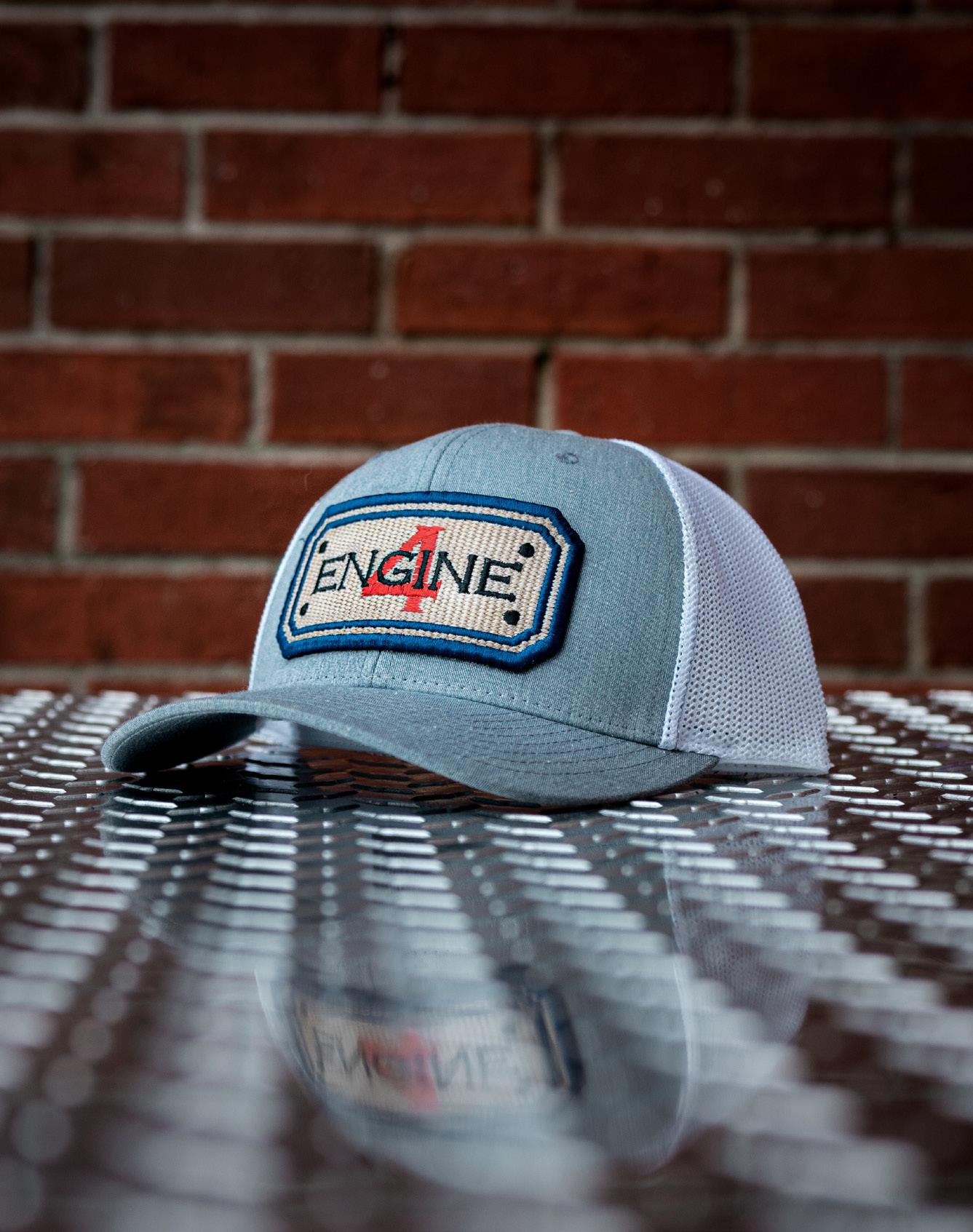

WE’VE ALL HEARD IT AND MOST OF US HAVE SAID IT – “GETTING OLD IS A BITCH.” HELL, IT’S EVEN THE TITLE OF A POP SONG BY THE BAND LOCAL NOMAD. WHY DOES IT RING SO TRUE?

If there’s one thing we all want more of in our lives, it’s time. We want more time with loved ones, more time to accomplish our goals, and more time simply to enjoy living. The great irony, of course, is that being granted this wish means getting older and we’ve just agreed that getting older is a bitch. As time marches inevitably forward, we start to notice changes in our bodies we’d probably rather ignore. We might feel more winded after a run that once would once have been easy. Maybe those twelve bags of groceries we lugged into the house felt a little heavier than they used to. On the job, we might notice a bit of strain when carrying equipment, or – even more challenging – when carrying a person to safety.
These changes might be easy to discount at first, but the reality of being human is that eventually, we begin to wonder why our efforts to beat the clock are having less effect. Tweaks in our diet or an update to a gym routine can be powerful weapons against the aging process, but the reality is, no one is able to outrun Father Time. And what weapon does that old man turn against us? Hormones!
Brenda Rempel, an MD specializing in endocrinology and metabolism, explains that without hormones, “humans would not grow, maintain a constant temperature, produce offspring, or perform basic life functions.”
Rempel goes on to say that our endocrine system is a control panel of glands which include the hypothalamus, pituitary, thyroid, adrenal, pancreas, and gonads (reproductive organs). These glands all secrete hormones –chemical messengers that travel from cell to cell in our bloodstream, initiating a variety of responses.
As we age, these hormones change, and our bodies react in different ways. Rempel suggests that the natural process of aging modifies the endocrine system, causing alterations in production, secretion, and the breakdown of specific hormones. One of the main culprits is growth hormone, which is produced in the pituitary gland and declines in its secretions by an average of 14 percent per decade of life. Early in life, this hormone promotes normal growth, but as we age, the reduction causes
both loss of muscle and the thinning of bones – a double whammy for those who perform a physical job like firefighting!
This hormone slow-down hits men and women differently, and each experiences a gender-specific set of challenges as a result.

FATIGUE AND CHANGES IN OUR SLEEP PATTERNS AS WE AGE CAN LEAVE FIREFIGHTERS FEELING A LITTLE LIKE DANNY GLOVER’S CHARACTER MURTAUGH IN “LETHAL WEAPON”
Menopause is the natural change in a woman’s body that takes place as ovarian functions start to decline. The process usually starts when a woman enters her forties, and ovulation becomes less frequent as the ovarian follicles are depleted. Rempel explains that over time the female sex hormones (estrogen and progesterone) levels drop off and women stop menstruating. Menopause signals the official end of a woman’s reproductive years, and if that isn’t enough, here’s another kicker – the deficiency in estrogen can lead to hot flashes, fatigue and sleep disturbances.
Men have their own challenges. Rempel explains that men undergo a physical process as they age called andropause. Though a little less rigorous than menopause, andropause does reduce the levels in a man’s endocrine system. The reproductive life expectancy for a man’s system is longer than a woman’s, and their sperm production is preserved even after the onset of andropause, but the quantity, quality and
motility can be affected. That’s right boys, thanks to andropause, you might not be as potent as you once were and a decline in testosterone can lead to symptoms including fatigue, sleep changes, low libido and emotional changes.
And what other effects do all these hormonal changes have on a busy, physical lifestyle? Fatigue and changes in our sleep patterns as we age can leave firefighters feeling a little like Danny Glover’s character Murtaugh in “Lethal Weapon” – like you’re getting too old for this s#*t! The good news is that if Murtaugh made it work and got the job done, so can we. It’s a matter of listening to our bodies a little more and respecting our limits to keep ourselves and others safe.
Not ready to accept aging just yet? Are you trying to be more like Mel Gibson’s Riggs rather than Danny Glover’s Murtaugh? You’re not willing to say you’re too old for this s#*t? Well, we have a hormone for that!
Dehydroepiandrosterone (DHEA) is an adrenal hormone that Rempel says has been reported to have anti-aging properties. DHEA enhances immunity, allowing us to keep that enviable Riggs-like feeling of being indestructible. Unfortunately, this hormone peaks in our mid-twenties and
ultimately reduces to about five percent of its original level, while the cortisol hormone (which suppresses DHEA) remains constant. That imbalance eventually changes how our immunity works. The question is – how long will the DHEA levels hold out for each of us, allowing us to continue to push our bodies and tell ourselves we’re not too old for the job? In the end, that’s a personal choice every firefighter needs to make. No one knows your body like you do.
If you’re reaching a point where you’re starting to feel a little sluggish (on and off the job) and are looking for something to blame – here you go. Point the finger at your hormones. While we can certainly work hard and condition our bodies to age slowly rather than quickly, in the end we’re all pre-programmed to turn those pages, wind down and keep ourselves safe for whatever the next chapter holds. If you want to push yourself and be a Riggs, go ahead! Hold out as long as you can! But in the end, we all have to be ready for the Murtaugh phase of our lives. Simply knowing that we’re all driven by biology makes it easier to reflect on our careers, to take pride in a job well done and to be happy with the rest of what life has to offer. There’s no shame in one day saying “I am too old for this s#*t.”

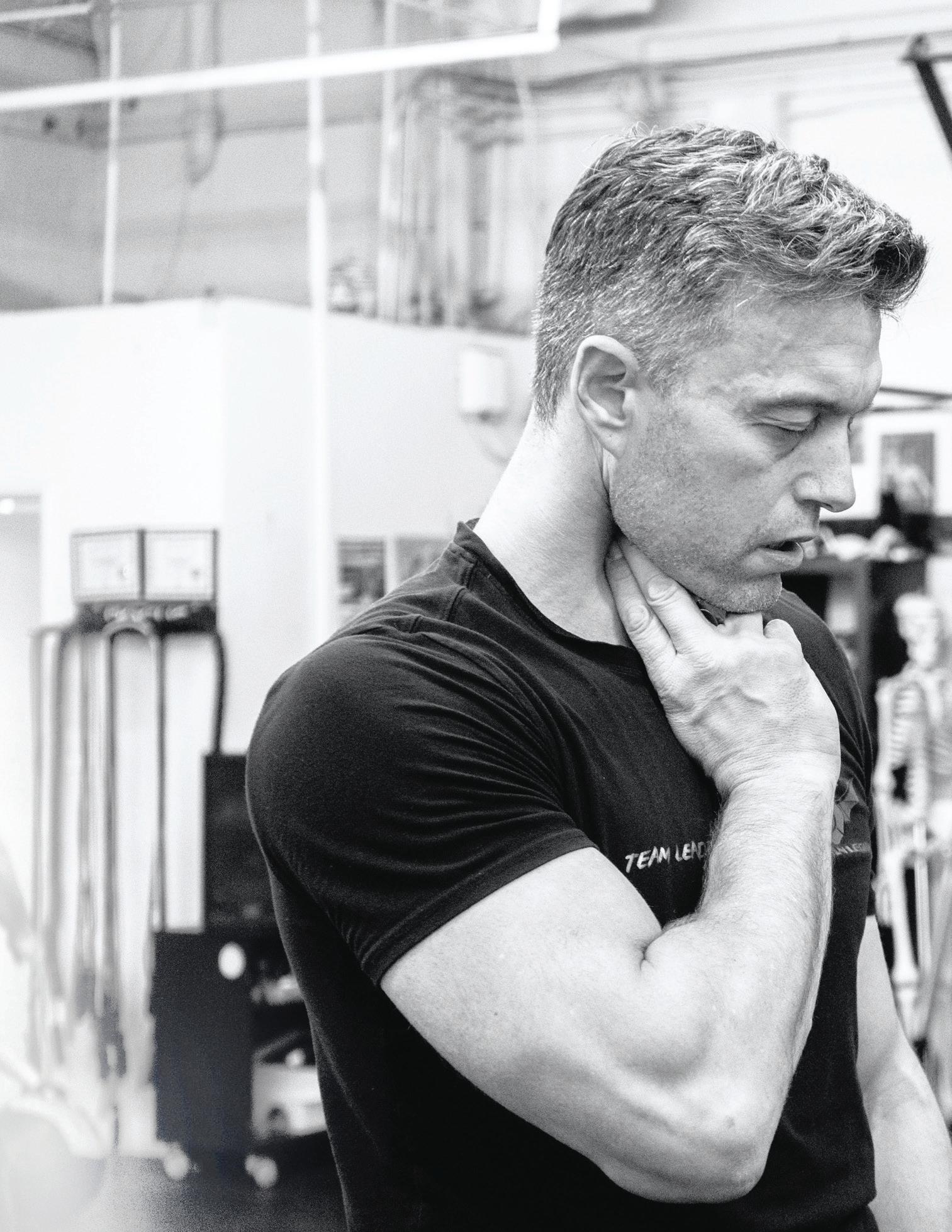
The physical demands of firefighting are enormous. As an athlete serving your community, you have to always be response ready, so it’s imperative that your physical training plan prepares you for the rigors of firefighting.
But workouts shouldn’t leave you feeling beaten up or broken down.
Some of the most common sources of pain and injury that I see in the firefighters I work with are the result of workout programs intended to help them stay healthy. Although they were eager to be as fit as possible, these firefighters were performing high intensity workouts at a volume and frequency that just didn’t support their response readiness.
In his book “Fire Department Incident Safety Officer”, Dave Dodson compares “arbitrary aggressiveness” to “intellectual aggressiveness” in firefighting operations. He defines “arbitrary” as “decisions based on random choice or personal whim, rather than any reason or system”. On the other hand, the intellectual approach requires recognizing predictable dangers and taking steps to reduce risk.
This same comparison can be applied to firefighter fitness. Many of the physical training programs available to firefighters are arbitrary in nature and don’t account for the predictable dangers that set us up for injury and sub-optimal performance. An intellectual approach to firefighter fitness involves the evaluation of exercise intensity on any given day, as well as the creation of a physical training schedule that supports occupational performance.
Varied Intensity Training (VIT) is a mindful approach to planning your physical training schedule around one or two high intensity peak performance days each week, taking into account the demands of firefighting. I believe VIT is critical to maintaining long-term health and wellness for firefighters.
Tactical athletes require a comprehensive physical training plan to foster the physical skills, attributes, and energy reserves necessary for tactical response. This brings us to our comparison of intellectual vs. arbitrary physical training. We must account for occupational exertion, mental/emotional stress, sleep deprivation and other variables that can have a negative impact on our health and wellness. A workout schedule should be set up in a way that emphasizes recovery and response readiness and incorporates the following four VIT specific training days:
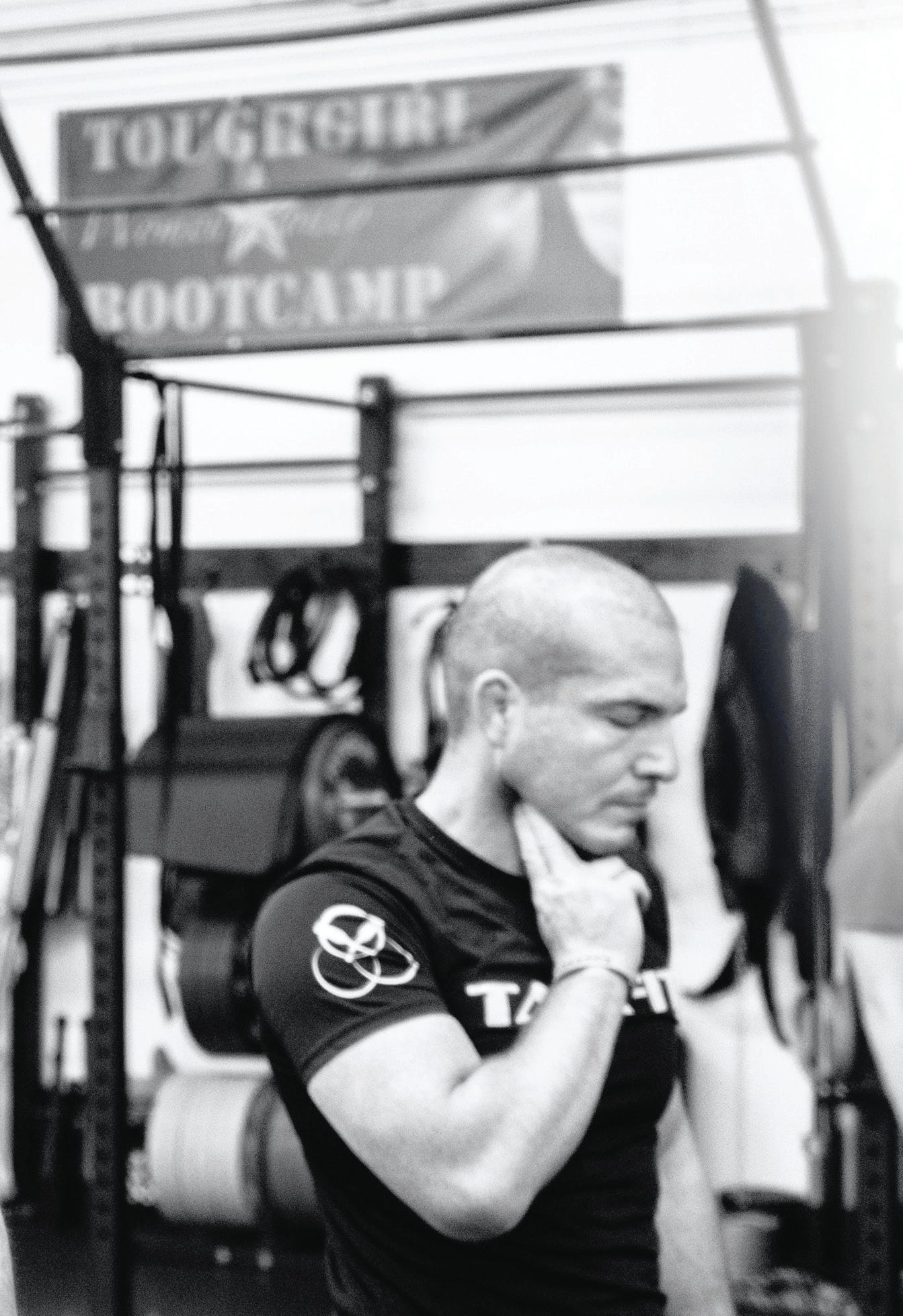
The focus of this day is to address mobility limitations in your body while preparing for the specific Moderate and High Intensity workouts that lie ahead. The No Intensity Training Day should feel light and easy, with a Rating of Perceived Effort (RPE) between 2 and 4. Keep your heart rate below 40 percent maximum while you concentrate on exploring your movement and evaluating muscle soreness and movement restrictions. This mindful approach to recovery is an important part of improving quality of movement and preventing injury. Examples of activities best suited for this training day should include joint mobility, light stretching, walking and swimming.
The focus of this day is to release tension in your body and help muscles return to normal resting length after Moderate and High Intensity workouts. This should feel like deep, but not difficult work with an effort between 4 and 5. Keep your heart rate between 40 to 60 percent maximum. Examples of activities best suited to this training day include soft tissue work, yoga, jogging and cycling.
The Moderate Intensity workout day is the start of your strength focus. This Moderate day will allow for an incremental ramping up of your training output each cycle, and prioritizing the practice of solid form. This will ultimately set you up for success on each High Intensity peak performance day. This should feel like hard, difficult work with an effort between 6 and 8. Keep your heart rate between 60 to 80 percent maximum. Examples of activities best suited for this day in your schedule include resistance and circuit training as well as moderate recreational activities such as climbing, mountain biking and rowing.
The High Intensity workout day is your peak performance time. All of your focused efforts in No, Low, and Moderate Intensity training have prepared you for optimal performance. Train as hard as your technique allows, pushing yourself to maximal effort and learning to recover quickly. You’ve prepared for this – now it’s time to turn yourself loose and go all out. This should be extremely difficult work with an effort between 8 and 10. Keep your heart rate between 80 to 100 percent. Examples of activities best suited to this day include metabolic conditioning, sprinting, and other forms of high intensity interval training.
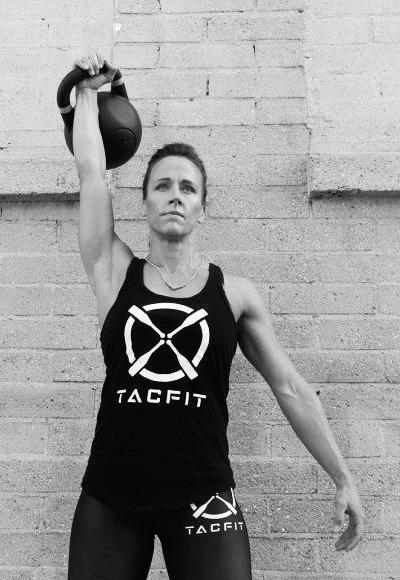
It’s important to incorporate these training days into your workout schedule, ramping up and recovering after each high intensity peak performance day. On the right are two options for schedules that work well for firefighters, depending on their work shifts:
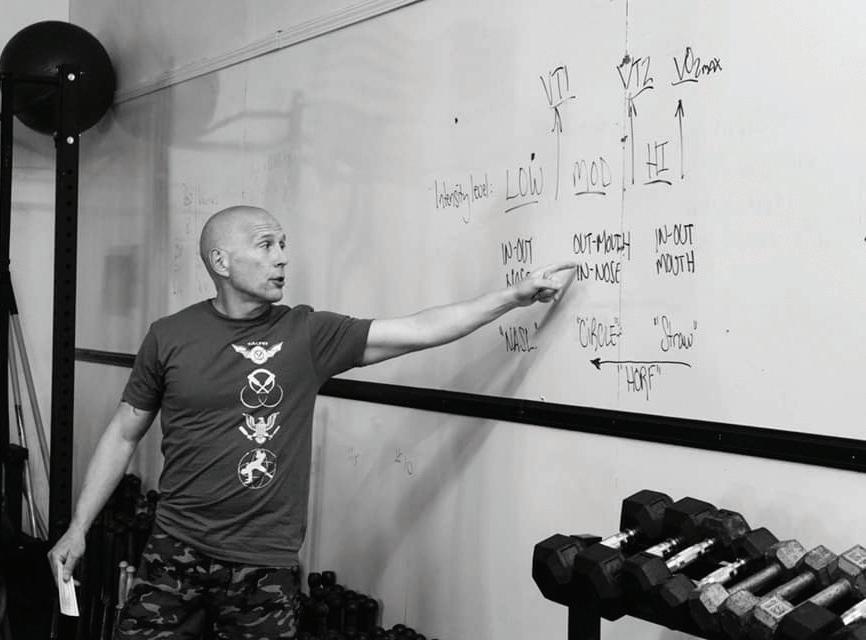
This plan represents the ideal balance of work and recovery, using No, Low, Moderate, and High Intensity training days consecutively, while being flexible enough to enable you to adjust to the rigors of shift work. It’s best to perform Moderate and High Intensity training the day before or the morning of your shift if you’re able to maintain response readiness post-workout. We encourage you to add a No or Low Intensity day whenever you’re feeling worn down. If you add a day or two of extra recovery, just pick up where you left off when you’re ready for the next Moderate or High Intensity training session.
The 4-Day Wave applied to a normal shift schedule would look like this:
This will be your baseline schedule, but you can make adjustments as needed depending on how you feel each day. Adding more high-intensity activities could be counter-productive in the long run and might compete with the high demands of firefighting (training, calls, shift work, etc.) Add as much recovery to the training plan as needed to make sure that you’ll feel great on your peak performance days and will always be response-ready on shift. If training at high intensity on workdays has a negative impact on your response readiness, adjust this schedule in a way that works better for you.

This plan provides a consistent training schedule from week to week. This plan incorporates No, Low, Moderate, No, Low, Moderate and High Intensity training days consecutively. We’ve found this to be the optimal training schedule both in recruit academy and for firefighters working in a more traditional administrative assignment. The 7-Day Cycle applied to the Recruit Academy Schedule would look like this:
The 7-Day Cycle applied to the Recruit Academy Schedule would look like this:
The intensity of the occupational training in recruit academy is high. It’s important that the physical training plan challenges the recruits while placing an emphasis on injury prevention and recovery. It’s important to find the minimum effective dose of High Intensity Training required to achieve the desired adaptation in support of our performance as firefighters. It’s never about the workout, but rather about the adaptation to the workout. Take a look at your current workout program and see if there’s an opportunity to apply the 4-Day or 7-Day training cycle to your plan. Try it for a couple of weeks to see how VIT can keep you fit and ready for whatever life tosses your way!

HER RESUMÉ INCLUDES FIGHTING FIRES, RUNNING MARATHONS, AND TELLING THE NEW YORK METS TO EAT THEIR VEGETABLES.
MEET A WOMAN WHOSE PERSONAL AND PROFESSIONAL LIVES MAKE THE PERFECT COMBO.

It’s not uncommon for firefighters to have a second gig – in fact that’s one of the attractions of the career. But it’s not always common to find a firefighter with two careers that truly overlap and complement each other. And one who feels equally passionate about both.
When Maureen (“call me Mo”) Stoecklein spoke to CRACKYL about a life that combines her two great passions, firefighting and nutrition, she was in the quiet bay of the fire station in Canton Township, Mich. Mo reflected on a life where work and personal interests merge.
“I was born in Southfield, a suburb of Detroit, and have spent most of my life here in Michigan. As the middle of three kids – I’m the girl between two boys – I was always encouraged by my parents to be an achiever, and they raised us with a can-do attitude.”
Sports, fitness and strength training have always been a big part of her life, including volleyball and softball at Madonna University. Mo has also completed an ironman distance triathlon and, as she puts it, “a bunch” of marathons.
After three years as a dietician, at age 28 she decided she wanted a more physical job. Mo was drawn to firefighting by the fact that it involves teamwork and, like nutrition counselling, is a helping profession.
But her interest in nutrition never went away. In 2013, Mo started working as a consulting dietician at Barwis, a training facility for Olympic, professional and amateur athletes. “From there I began working with the owner of the New York Mets, Jeff Wilpon, helping with his personal nutrition goals.” So when the Mets were looking for a team dietician, Mo was the perfect choice. She went on to work with them from 2017 to 2000 – requiring some serious schedule juggling with her firefighter shifts.
“I would fly to wherever they were playing – so it was a lot of traveling. I had to shift my focus when dealing with the players, because I wasn’t used to working with clients who are looking for top performance over only, say, a 10 year career. As firefighters, we must keep in top physical shape for 25 years or so.” The players’ youth and occasional (and relatable) cravings for chicken fingers and chips were some of the challenges she learned to deal with.
When COVID locked down the Clubhouse, limiting who could go in, Mo decided she just couldn’t continue doing both jobs. But she remembers her time with the Mets as an interesting dynamic with lots of lessons. (Not to mention it was “really, really cool.”)
Firefighters have their own obstacles when it comes to eating properly. Mo cites lack of sleep and high levels of stress as two main challenges. “In an ideal world, everyone would be open to receiving nutritional information, whether they’re an injured athlete or anyone dealing with pain.” Mo is concerned that firefighters don’t always reach out for help – much less realize how important it is to do so. “But they typically are disinclined to admit fallibility and have to agree to do it on their own terms.” At the firehall, as the schedule and run volumes permit, Mo leads her teammates
on each shift in a functional fitness training session and a yoga/stretching session.
And what about your diet? “If there’s one thing you can do to improve your nutrition, I’d say: eat more fresh fruits and vegetables. We get so focused on fats or carbs or all the diets out there, but just more fruits and vegetables are so good for you.” Portion control, she says, is another important consideration.
“As for me, I really do keep tabs on what I eat. Let’s face it, five slices of pizza will make me feel sluggish.” So breakfast might be overnight oats, lunch a veggie omelet and half an avocado with a slice of whole grain toast, and dinner a lean protein with tons of veggies and some rice or quinoa.
“I’m a purposeful grazer, and snack on fruit, Greek yogurt, peanut butter or maybe cottage cheese.” Her big weakness, she confesses, is sweets – especially chocolate. “I don’t eat it often but I also don’t deprive myself if I want something sweet. Dark chocolate is good for you, right?” she laughs.
Mo’s healthy lifestyle interests neatly dovetail with those of her husband, Fire Chief Chris. They met when he was a firefighter, which, as she says with a smile, makes for a good love story. “What do we talk about at home? Not work!”
The couple keeps busy with Chris’s kids Evan (18), Alaina (16) and Anthony (13); and both Mo and Chris support a motorcycle-riding charity called the Axeman, a group of firefighters who raise funds for child burn victims, including supporting a summer camp.
Along the way, Mo has even been featured as one of just four American women in a Brawny Paper Towel International Women’s Day Campaign commercial, sharing her credo that
Clearly a thoughtful and organized planner, Mo is keeping an eye on her future. “In June 2022 I will be retiring from the department – and just about turning 50. I’d like to have my own consulting business working especially with police and firefighters, and incorporating all aspects of wellness.” Even before COVID, Mo was doing presentations with a physical therapist and a yoga instructor, and eventually plans to get back to that. “And we’ll be making time for trips to Florida –the Keys or South Florida. Coming from Michigan, we really love getting away from winter!”
To view a photo of Mo working out with her teammates, and see the inspiring Brawny Paper Towel commercial featuring her, please visit vimeo.com/157396795. Read Mo's article on nutrition in this issue of CRACKYL on page 40.
“THERE ARE NO LIMITATIONS TO WHAT YOU CAN DO – ONLY THE LIMITATIONS WE SET UPON OURSELVES.”


no.1 no.2 no.4 no.6
Make the marinade by combining all ingredients in a medium saucepan and bringing the mixture to a boil.
Turn down the heat and simmer for 10 to 15 minutes, until the mixture reduces to just over a cup.
2 to 3 lbs beef eye of round roast, thin-sliced against the grain
Pepper Poppin’ Marinade
● 2 cups Dr. Pepper
● 2 jalapenos, sliced
● 2 tbsp kosher salt
● 1 tbsp Worcestershire sauce
● 2 tsp black pepper
● 1 tsp garlic powder
● 1 tsp onion powder
Chill, baby. Refrigerate the marinade until it’s completely cold. Put the sliced beef in a gallon-sized zip top bag and add marinade.
Massage the meat with the marinade and refrigerate for 8 to 12 hours, or overnight.
no.3
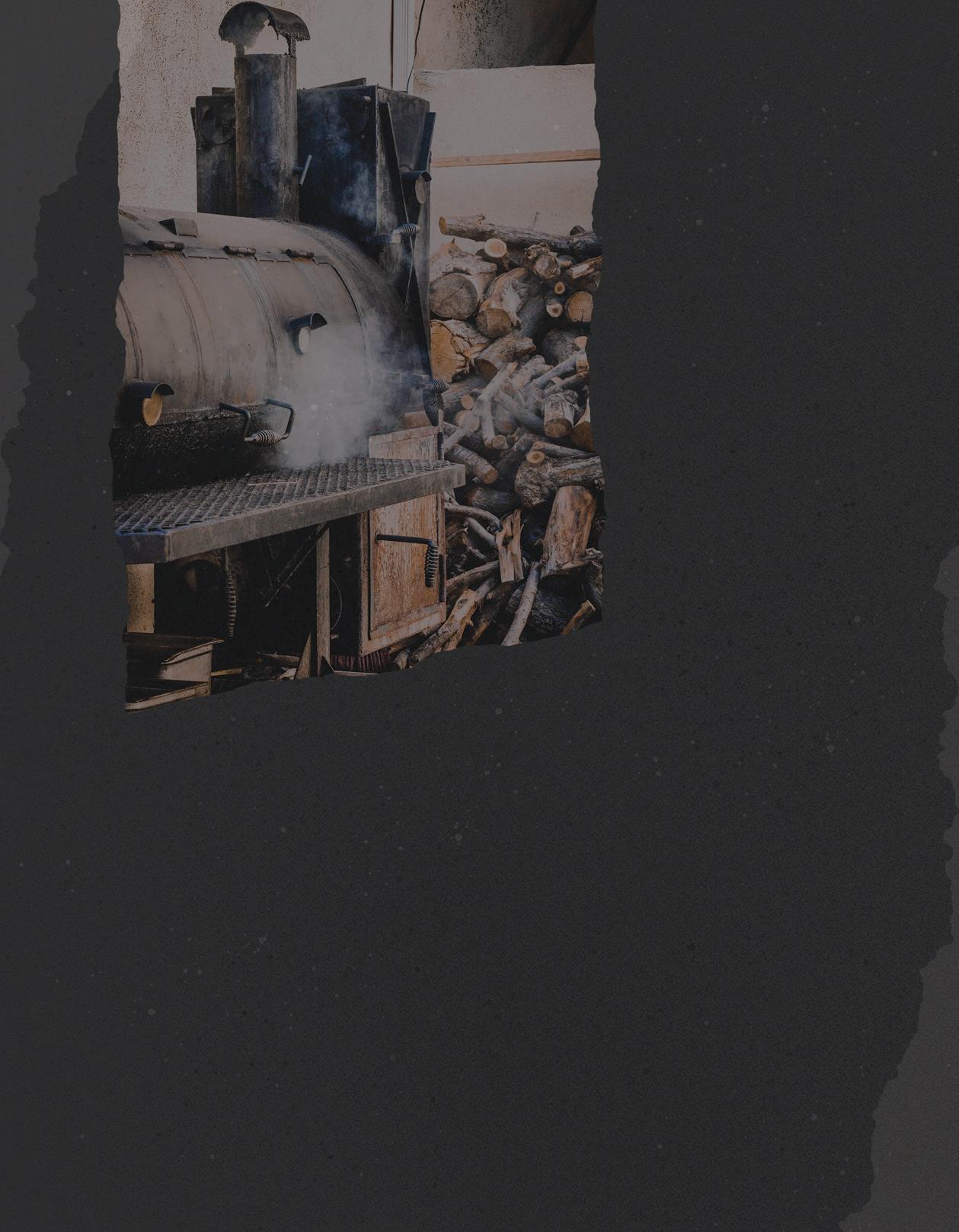
no.5
Preheat the smoker to approximately 170 degrees F, using whatever hardwood you like best. We think a combo of maple and cherry work really well.
Smoke, smoke, smoke that meat!

After removing the meat from the marinade, dry each strip on paper towels. Place the dried strips on the grill grate, jerky rack or cooling rack and smoke for 2 to 3 hours. Note: if your pieces are thick, they might take up to 4 to 5 hours so check often for consistent drying. Jerky should be firm but still slightly pliable. It should never be soft but if it breaks when you bend it, it’s overcooked.
Zip and steam!
While the jerky is still warm, put it in a gallon zip top bag, leaving it partially unsealed so the steam will keep it moist.
Jerky will last 3 to 4 days on the counter, or 2 weeks in the fridge, or no time at all if your fire hall buddies drop by!
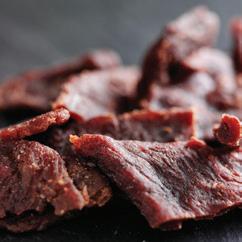
 By Maureen Stoecklein, RD
By Maureen Stoecklein, RD
Detoxes and cleanses are popular but commonly misunderstood concepts that involve eliminating foods or food groups for a given period of time. Popular detoxification programs such as juice cleanses, sugar detoxes, elimination diets, fasting and taking fiber supplements usually involve eating a minimal amount of food.
But I recommend that you think twice before you try one. Limiting food intake can have a negative impact on your performance and recovery as a firefighter.
People often try a cleanse hoping for a fresh start, a renewed sense of control over eating, or quick weight loss. But before jumping on the bandwagon, you need to understand that very little research supports these practices. There is little to indicate that they effectively remove toxins — or provide any benefits at all. By contrast, a healthy, well-balanced, and performance-based plan that includes plenty of fruits, vegetables, whole grains, lean proteins and adequate hydration will
promote gut health and support the body’s own detoxification systems.
Detoxification is the process nature designed to utilize nutrients and remove toxins, both internal (lactic acid, urea, waste) and external (pesticides, chemicals in tobacco products or alcohol, air pollution) from the body.
OUR BODIES ARE EQUIPPED WITH BUILT-IN DETOXIFICATION METHODS THAT USE THE SKIN, GUT, LIVER AND KIDNEYS TO REMOVE WASTE PRODUCTS NATURALLY.
Toxins are excreted through our urine, feces, respiration and, thanks to sweat, skin. We all have the ability to detoxify our bodies by employing factors including diet, lifestyle, activity level, sleep hygiene, and our overall environment.
Although detox diets can result in initial weight loss due to inadequate calorie intake,
THE DISADVANTAGES OF DETOXES AND CLEANSES
• Muscle loss
• Lack of macronutrients needed for performance including protein, complex carbohydrates & healthy fats
• Inadequate calorie intake causes weakness, dizziness, fatigue and nausea
• Rebound overeating & increased craving
• Blood sugar fluctuations
• Deficient intake of gut-health promoting fiber
• Dehydration - short-term weight loss resulting from loss in water weight
• Lowered metabolic rate – the body becomes less efficient at utilizing calories for energy
they typically lead to weight gain down the road, once a normal eating pattern is resumed. About 20 percent of the calories consumed on a daily basis are used to fuel our brains. The food choices we make have a direct impact on our mood and, ultimately, our brain functions. Low calorie consumption will leave you feeling mentally and physically exhausted, making our tasks as firefighters even more taxing. Diets and detoxes are not sustainable eating programs and more research is needed to determine their long-term effects on chronic disease prevention, aging and weight loss.
For now, taking charge of your health, making consistent, high-quality, nutrientdense food choices and drinking plenty of water is the best way to cleanse your system while keeping your digestive system regular.
Find out more about firefighter and nutritionist Maureen Stoecklein in our profile of her on page 36.
• Drink plenty of water. Try to drink at least half your body weight in ounces of water daily
• Cut back on processed, prepackaged & fast foods
• Eat 8 to 10 different fruits and vegetables daily. Choose a variety of brightlycolored fruits such as oranges, berries, melons, cherries, apples & purple grapes. Be sure to include colorful veggies such as bell peppers, purple cabbage, spinach, carrots, tomatoes & green beans. Fruits and vegetables are prebiotic fibers that act as fertilizer to stimulate and feed the healthy bacteria or probiotics in the gut
• Include at least 35 to 40 grams of fiber daily. Boosting your fiber intake by eating vegetables, fruits, nuts, whole grains & seeds will promote regularity
• Eat plenty of lean proteins: protein-rich foods contain glutathione, an important enzyme for detoxification in the gut
• Increase your intake of cruciferous vegetables: broccoli, garlic, brussels sprouts, onions and green leafy veggies all help support natural detoxification pathways
• Eat more fermented foods foods such as yogurt, sauerkraut, kefir and kimchi as probiotic foods like these help promote a healthy gut
As ingrained in the fire service as the leather helmet, giving each other a hard time is a rite of passage, especially during the probationary or rookie year. Teasing, pranks, horseplay and jokes are accepted and expected forms of welcoming a new firefighter to the crew, and a means of strengthening bonds between veteran members. It’s part of our culture.
While inappropriate behaviors that cross the line into hazing are problematic, the less damaging social interactions are a staple in fire stations across North America in rural and urban settings. Although classic “ribbing” has its benefits, the introduction of other bonding behaviors including compassion, empathy, and vulnerability can further strengthen a crew and prime the fire service culture for greater diversity and better community spirit.
Seen as ways to include new members, pranks, teasing, and ribbing are the foundation of crew bonding in the fire service. When done well, goodnatured teasing teaches the newest
members to place the team before the individual with a healthy dose of humble pie.
ACCORDING TO RESEARCH, LAUGHING TOGETHER CREATES A CONNECTION BETWEEN ONCESTRANGERS-NOW-BROTHERSAND-SISTERS THAT LEADS TO RESILIENCE – AN ESSENTIAL TOOL FOR HANDLING JOB STRESS WELL.
The pressures faced by probationary firefighters in the station can even serve as preparation for the extreme situations faced on the job, and is such a strong part of the fire culture that recruits expect to be pranked or teased as a requirement for joining the team.
Without a doubt, bonding with crew members is key to life in the fire service. Crews face extreme conditions, respond to uncertain calls, and witness human suffering together. To respond well in the face of adversity and be able to focus on the task at hand for the larger mission,
firefighters must inherently trust each other. “Living as a team to perform as a team” is the unofficial mantra, and trust is forged based on one’s ability to handle being the butt of the joke. Though humor is a wonderful platform to create bonds, it might be time for the fire service to consider adding other tools to its team building repertoire – tools including compassion, vulnerability, and empathy.
Firefighters have no shortage of compassion. They recognize the suffering of others, are quick to help in any way they can, feel concern for their patients and want to alleviate their pain. While their compassion for the public may be endless, there seems to be less at work in the station. Although some cultures are changing, sharing emotions, including pain and hurt, often results in ridicule and being labeled weak. In fact, showing compassion for crewmates rather than belittling them creates strong bonds between firefighters. Studies show compassion for crewmates increases the value of the work relationship and strengthens bonds in the organization.
Creating a culture of compassion may seem daunting at first, but much like learning a new technique for forcible entry, training and repetition soon make it second nature. It could begin with simply noticing suffering - much like keeping your head on a swivel on the fireground, being aware of crewmates and their attitudes and moods. If a shift is noticed, take a moment to ask and listen to what they share. If you’re not the best person to speak with a crewmate, share your concerns with someone who might be, such as a close friend or officer.
Going hand-in-hand with a culture of compassion is becoming more empathetic. Although the terms are often used interchangeably, compassion refers to an action that alleviates suffering, while empathy refers to the ability to understand and share the feelings of another person. While you may never have experienced your own home burning down, you can certainly put yourself in homeowners’ shoes as they watch their home disappear. Valuing empathy around the station creates connections between firefighters as they connect as humans. Everyone’s been a rookie, made a mistake on a call and experienced the rush of their first structure fire or the devastation of losing a patient. When veterans are empathetic with young firefighters during tough times, they create bonds that can last a career.
The linchpin in a successful culture of compassion and empathy in the fire station is a willingness to be vulnerable, which involves an acceptance of uncertainty, risk, and emotional exposure. In the fire station, it means sharing feelings at the risk of being judged, asking for help at the risk of being denied, and being the first to engage in new behavior to create a supportive culture. Being vulnerable enables the trust cycle to move, creating strong bonds. Showing vulnerability is like taking part in an emotional trust fall with a coworker – it allows both parties to lean and be leaned on. These positive exchanges inspire confidence in a relationship, which translates to team strength on the fire ground.
The unbreakable bonds forged in the fire service make the field unique. Relationships span careers as fellow firefighters become family. Traditional fire service culture dictates that these relationships are formed as a result of hazing, showing mental fortitude by slogging through menial chores and good-naturedly accepting being the butt of practical jokes. Research shows, however, that vulnerability, compassion, and empathy are just as effective in solidifying bonds and can lead to prosocial coping skills and better personal relationships beyond the station. Knowing you can trust your crewmates for social support
may lead to your asking for help instead of turning to negative coping mechanisms. You’ll be better able to serve the community by connecting and caring for patients and citizens.
THE MOVE FROM THE TRADITIONAL FIRE STATION CULTURE TO A NEW FORM IS NOT A PUSH FOR MAKING THE FIRE SERVICE “SOFT.”
It’s not about doing away with the concept of “paying dues” to earn your place on the team, nor about lowering expectations to make it easier for new recruits. Rather, it’s about raising the bar to recognize that accountability for job performance and compassion for each other as humans can coexist. Tests of mettle are a necessary and welcome challenge in training, creating resilience and the ability to perform well under pressure. Vulnerability also creates resilience through repetition of discomfort, while empathy and compassion lead to better performance.
THE NOTION OF CREATING A MORE POSITIVE AND WELCOMING CULTURE AND MAKING THE FIRE SERVICE A HEALTHIER ENVIRONMENT FOR ITS MEMBERS ALLOWS FOR BETTER FIREFIGHTERS AND MORE ENGAGED FAMILY MEMBERS, FRIENDS, AND PUBLIC SERVANTS.

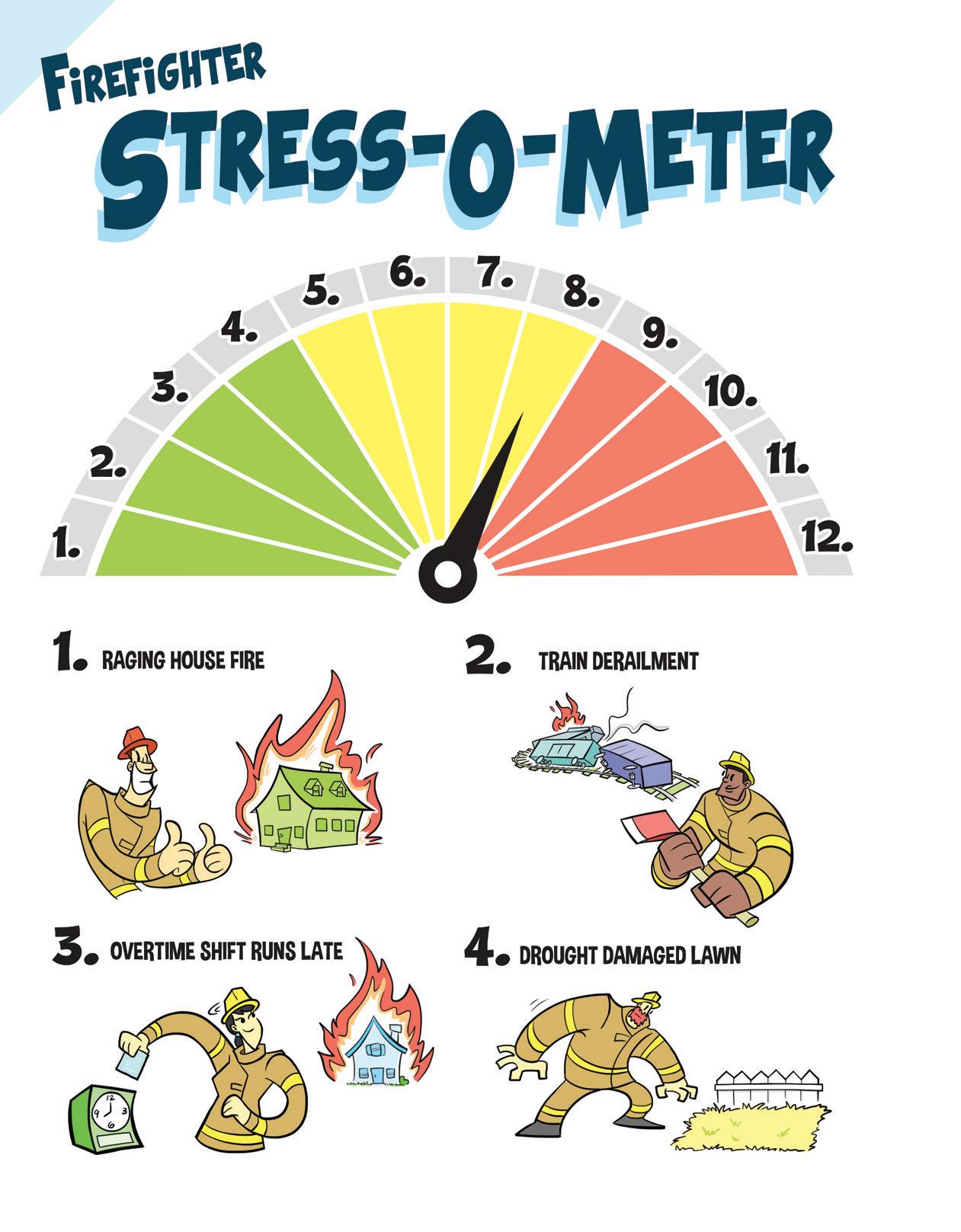
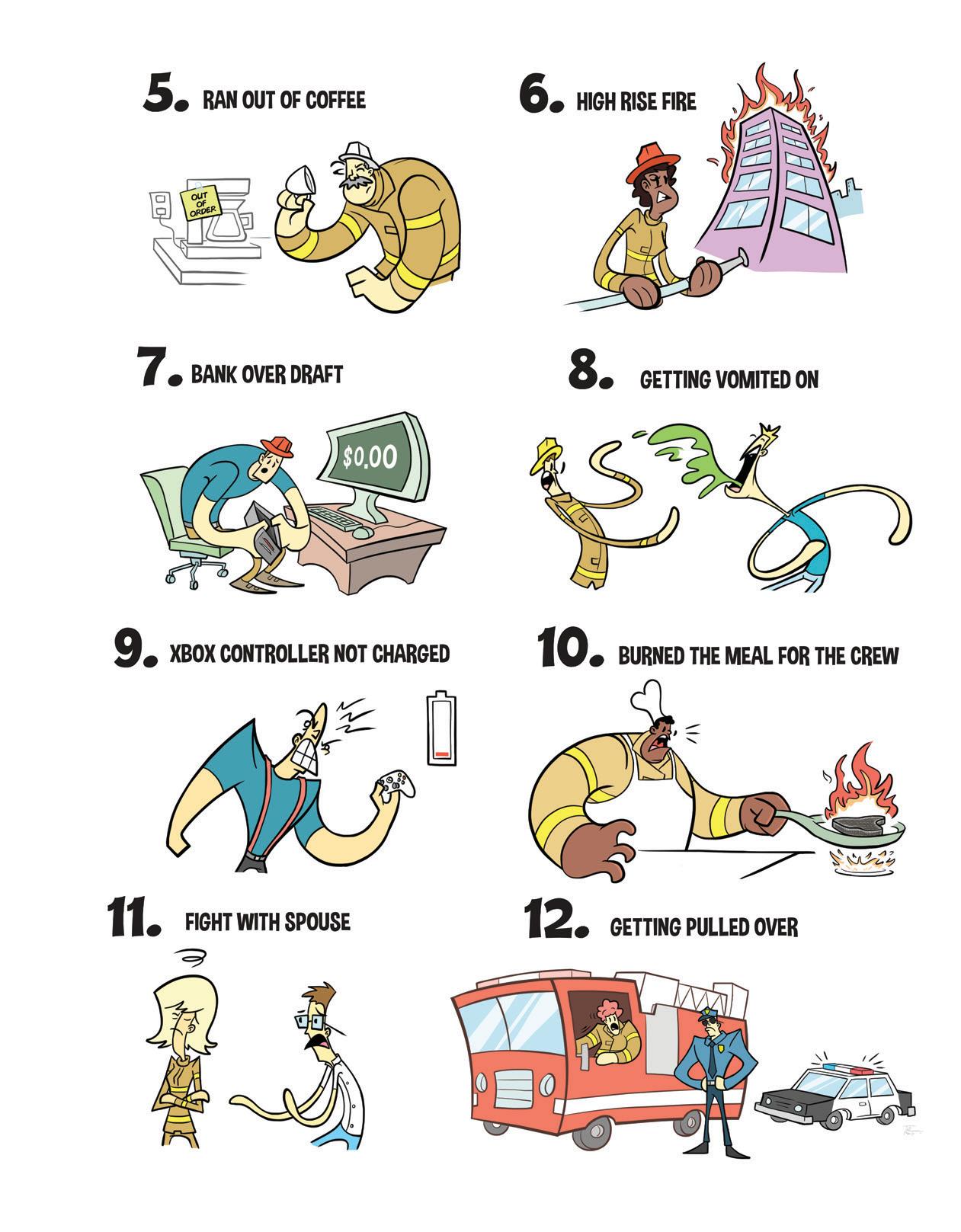
HONESTLY MEGAN, I DON’T KNOW WHERE TO START,” SAID THE CAPTAIN OF ONE OF THE BUSIEST STATIONS IN NORTH AMERICA.
“EATING HEALTHY FEELS IMPOSSIBLE WITH THIS KIND OF SHIFT.”

Busy shifts, limited dinner funds and food preferences are some of the challenges firefighters face, so the usual options are spaghetti, burgers or a bacon-wrapped pork loin – if the chef is feeling fancy and if the shift hasn’t resorted to fast food because it was impossible to get back to the station. It’s no secret that firefighter dietary practices lack nutrient quality.
In terms of health risks, cardiovascular disease is the cause of 45 percent of line-ofduty deaths, while cancer is responsible for 27 percent of all-cause mortality in firefighters.
The typical firefighter diet is a likely contributor to these health risks. Dinners are cultural and eaten as a shift with a competitive vibe in some stations that pushes some firefighters to see who can eat the most or the fastest. Dinners tend to be high in calories, fat and unrefined carbohydrates. There’s always ice cream in the freezer, just in case community friends haven’t already dropped off something sweet. Breakfast might be a donut or a breakfast sandwich on the go.
Not every
Many firefighters have made the effort to clean up their own eating habits and try to convince their shiftmates to make the same changes. For shifts that do fall into the typical firefighter diet, however, a dietary overhaul is in order!
Fiber is an indigestible form of carbohydrate found in fruits, vegetables, whole grains and legumes that is particularly effective at sweeping lowdensity lipoproteins (LDL) – or “bad” cholesterol – from the blood for elimination in the stool. Fiber also slows the digestion of foods, providing a feeling of fullness, and allowing for better nutrient absorption. High fiber foods such as vegetables often take more room on a plate, tricking the brain into thinking the body is getting more food and edging out higher fat or unrefined carbohydrate options.
Most Americans are lucky to eat 15 grams of fiber daily but the American Heart Association recommends almost double that – 25 grams per day for women and 38 grams per day for men. The difficulty is that, apart from whole fruit and some snack bars, it’s hard to carry fiber-rich foods on the go. Consider bringing a bag of apples to put on the kitchen table and try to get at least one serving of vegetables at dinner, if not two. Oatmeal or a smoothie with flaxseed are good, fiber-rich breakfast options.
Omega-3 fatty acids are polyunsaturated fats including alpha-linolenic acid (ALA), eicosapentaenoic acid (EPA) and docosahexaenoic acid (DHA). ALA is found in mostly plant-based foods, while EPA and DHA are found mostly in fish and other seafood. These powerful Omega-3s are often associated with major health benefits, from combatting heart disease to improving brain function. Coldwater fish such as salmon, mackerel, tuna and sardines contain the highest levels of EPA and DHA.
Studies show that diets high in omega-3s may be associated with a reduced risk of cognitive decline and dementia and may have a modest impact on depression.

For you to reap the benefits, the American Heart Association recommends eating two 3.5-ounce servings of fatty fish per week. Hate fish? You should substitute 1,000 mg of combined EPA and DHA is suitable under the supervision of a physician.
For firefighters, the amount of protein consumed in a day is rarely a problem – timing is. Most of us tend to eat less protein in the morning and double it at dinner time. Evenly distributing protein throughout the day is a better way to promote muscle gain when weight training, and to mitigate muscle loss when dieting. Ideally, your total protein intake should be distributed evenly every three to four hours, but this might not be possible at a busy station. At each meal, do your best to get a good protein source, which could include beans, lentils, tofu, dairy, eggs, poultry, fish or lean beef. A protein shake is a good option on the go, but try to limit them to one per day to allow room for real food.
Megan Lautz is a Registered Dietitian & Personal Trainer with a Masters in Sports Nutrition for Montgomery CountyFireRescue(inMD.USA). Megan’s mission is to help firefighters perform better, recover faster and live longer. For more from Megan, visit @rescue.rd on Facebook or Instagram.
Slowing down the pace at which you eat can determine how much food you consume. Those who take their time eat less, find meals more enjoyable and eat an average of 25 percent less in snacks three hours after a meal. If this is unrealistic on shift, focus on slowing down at home. Keep pace with the slowest eater at the table or try using chopsticks. On shift, try eating half of your meal at a normal pace then slow down for the second half. If the tones drop, at least you’ll have eaten something to hold you over until you get back to the firehouse.
YOU PROBABLY RECOGNIZE STEVE LEMME FROM THE MEGA SUCCESSFUL “SUPER TROOPERS” MOVIES AND THE 90S COMEDY “PUDDLE CRUISER”. EVEN THOUGH HE'S NEVER SET FOOT IN A FIRE ACADEMY, HE HAS BECOME THE FACE OF FIREFIGHTING FOR VIEWERS ACROSS NORTH AMERICA.

Lemme (along with Kevin Heffernan) is the creator, executive producer, showrunner, head writer, lead actor, director and main character Captain Penisi in the firefighting comedy “Tacoma FD''. Battling fires is the focus, but the station hijinks are what makes this hot series a must-watch, not only for firefighters, but also for anyone looking for a good laugh. Steve is a huge supporter of firefighters and had lots to share about his passion for “Tacoma FD” during his conversation with CRACKYL digital editor Leah Sobon. If there was ever a question about Lemme’s passion for his projects, rest assured – there is no one better suited for this role.
So how did Lemme end up in another role that required a mustache and a witty, sarcastic, and at times, edgy sense of humor? The quick answer is a deep respect for first responders, and in this case, firefighters specifically. As Lemme explains, “The firefighters are a catch-all. The cops handle crime and the firefighters handle everything else. They’re just an amazing group of people, given some of the horrible things they have to deal with. And while cops are catching some heat right now, nobody dislikes firefighters.”
The team members from “Broken Lizard” (creators of “Tacoma FD”) go back more than three decades, but it’s the relationship between Steve Lemme and co-producer Kevin Heffernan that makes this comedy such a hit.



RIGHT:
MIDDLE RIGHT: REALISM AND ACCURACY ARE TOP PRIORITIES WHETHER IT'S ABOUT COSTUME DESIGN, PROPS OR A FIRE TRUCK!
BOTTOM RIGHT: LEMME AND HEFFERNAN DURING THEIR NOTORIOUS ELEVATOR SCENE. DRAWING ON OVER 30 YEARS OF FRIENDSHIP ADDS UNPARALLELED HILARITY TO THIS DUO'S CHARISMATIC DYNAMIC.
 TOP
GABRIEL HOGAN, STEVE LEMME, KEVIN HEFFERNAN AND EUGENE CORDERO ENJOYING SOME LAUGHS BETWEEN SCENES.
TOP
GABRIEL HOGAN, STEVE LEMME, KEVIN HEFFERNAN AND EUGENE CORDERO ENJOYING SOME LAUGHS BETWEEN SCENES.
"The best friends I ever had were the ones I was forced to spend time with. The relationship Kevin and I have is complex in that we have known each other for 30 years. I have seen his ass crack a million times. He thinks I chew gum loudly. I think he eats and drinks loudly. He thinks I'm too concerned with looking and smelling good. I hate that he won't moisturize. He can't stand it when I'm crass. It annoys me that he thinks I'm crass while he's writing fart jokes into every script. He gets mad that I get mad about fart jokes and then write sexual innuendo jokes. He thinks sex is gross. I'm romantic. He only shows affection to his wife at his parties if he's gotten
enough compliments on the burgers he's grilled; only then will he kiss his wife. So you see, a lot of our material is our personal relationship. We are great friends and we are using this show as therapy.”
The seasoned dynamics between Lemme and Heffernan have carried the show to its third season, scheduled to air this fall.
Ever wondered how they come up with their ideas? It’s simple: they ask firefighters.

“There is no shortage of material. Firefighters would come (to the set), and every single one of them would tell you five stories. The people we have met in the profession are gracious, appreciative, and generous with the ideas that they give us.”
When coming up with themes for each episode, Lemme and Heffernan ensure that they stay true to actual firehall dynamics. They get solid input from an expert advisor and retired Lieutenant firefighter, affectionately known as Cousin Bill. Bill Heffernan, from West Haven, Conn., is Kevin Heffernan’s cousin. Lemme explained that when they first started the show, Bill would occasionally come to the set and offer ideas and solutions. Cousin Bill eventually became “Tacoma FD’s” technical consultant. He’s always able to give them lots of stories – but it’s up to Lemme and Heffernan to find a way to take each one and make it funny.
Finding humor in emergencies, while representing firefighters, takes an incredibly cautious and respectful creative process, something that
Lemme and his writers take very seriously. They work exceptionally hard to make sure that laughter remains the common ground for everyone watching their show.
“In Hollywood, there is a lot of irresponsibility. People think if they just make fun of one person it won’t make any difference. But there are people out there who are going to feel it. You can alienate people. It’s not what we’re about (at “Tacoma FD”). We know that there are people watching who are real, so it’s something we take very seriously. Our approach has always been to be respectful of the profession, we don't want firefighters to see us as inept. But we do have to make people laugh because people want that – whatever they’ve been through. I don't think there is anyone who would say, ‘I don't like to laugh.'
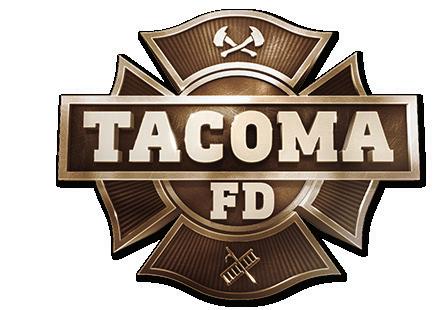
Laughter is something we can all come together on. Now that we have delved into the world of firefighting, we know they see some really terrible stuff. And we know that there are things they take with them from that job that they cannot undo or unsee. Something we discovered pretty early on – which is something we didn’t intend or anticipate – is that laughter is the part of life that’s important. It’s something that keeps people going in hard times. And first responders need that to deal with the hardships of the job.”
Lemme has learned more about the fire service than he ever expected, which is no surprise considering how immersed the entire cast and crew is in fire culture. He reflects on how valuable being an on-screen firefighter has been to him, even when he is off-set.

“Now after making this show, I'm so hyper-aware of the firefighters around me. And I am constantly looking: is that a ladder truck or the engine? Which one is the captain? How many have mustaches? Could the women carry me? It’s amazing. And I’m constantly learning about the firefighting profession – every aspect of it.” He goes on to say, “When I go to station houses now, I see it through this new lens. This job is a way of life and the people who are on those shifts are experiencing a closeness and a shared experience that is totally unique.”
So how did a guy who’s never stepped foot in a fire academy
convince actual firefighters – the toughest audience imaginable – that “Tacoma FD” would be something that they would not only relate to but also enjoy?
“First and foremost, we try to be really conscious of what firefighters might think as they are watching a show. The goal was to make everybody laugh, but because we respect the firefighting community so much – the most important thing we wanted to do was make sure firefighters would like it. You don't know if they're going to watch, but if they do, you want to make damn sure they don't call bullshit on you. One thing I've really enjoyed is that when we're filming driving scenes in the engine, people pull over left and right. The cops who are escorting us don't need to do anything. You feel like people really respect and know what firefighters do.”
With a steady momentum and growing fanbase, “Tacoma FD” is showing no signs of slowing down. The passion of Lemme and his castmates, together with their dedication to firefighters and the profession, will keep this comedy's representation of one of the toughest and most rewarding professions in the world at the forefront for anyone needing a laugh or a new series to binge-watch.

“Unless you are in it (the profession), you can't know. We have been fortunate enough to get to know firefighters and first responders…they are truly incredible people. It takes an iron will to be a firefighter.”
EVER WONDERED HOW THEY COME UP WITH THEIR IDEAS? IT’S SIMPLE: THEY ASK FIREFIGHTERS.

There’s a strong correlation between exposure to nature and positive health outcomes. But how much nature do you need to lower your stress level, lift your spirits and protect your health?


Measuring a dose of nature is decidedly more difficult than measuring a dose of cough syrup or taking an aspirin. Important factors include the length of time you spend outdoors in a natural setting, how you experience the world of nature, and what is referred to as "intensity," meaning how much nature you’re experiencing. Maybe you’re gazing at a single tree or you might be hiking in a mighty forest. It’s a wide spectrum, but researchers are now beginning to close in on some “minimum nature requirements” for healthy living.
Let’s start with the smallest, quickest dose. According to Finnish researcher Kalevi Korpela, “Within 200 milliseconds people react positively when they see images of nature.” That seems like a worthwhile investment of time! It takes only a moment but you’ll notice that your pulse rate will begin to lower as your mood starts to shift to a more positive place. The good news, according to Korpela, is if you don’t have a view of the mountains, a park or even a backyard to gaze at, you can still tap into this well of positivity by simply viewing images of nature.

There may be additional benefits from taking in those views over time rather than just in an instant. Evidence shows that viewing nature scenes has a cumulative effect on reducing mental fatigue throughout your day. Even though the Korpela study focused on viewing real nature, given what it revealed about natural images, it seems worth pausing throughout the day to absorb some positivity from whatever source of nature you can find, real or not.
What type of nature experience is best? Research suggests that some people may prefer long walks in locations further from home, while others prefer regular shorter visits to parks in the local area. That seems to leave us with a wide range of choice! The important finding in this study really seems to be the significance of just getting outside where you can experience nature.
And what if you have a little more time to spend in nature? A recent study found that benefits became apparent as soon as subjects spent more than 120 minutes per week and plateaued somewhere between 200 and 300 minutes per week. If you do the math, that works out to as little as 17 minutes per day. The research also showed that it doesn’t matter how you spend the time you spend in nature – a very interesting point.
What if you’re unable to get outdoors on a regular basis? If a crushing work schedule or a lack of access to nature areas near your home mean you’re struggling simply to find a tree or a patch of grass, there are some great strategies for bringing the outdoors inside. Use live plants and flowers to turn your home into a natural oasis to help you rejuvenate. It’s widely recognized that plants help induce a positive frame of mind, which in turn helps enhance creativity, improves mental processing and allows big picture thinking. Just having some plants around your fire station can improve a team’s mood and performance.
WITHIN 200 MILLISECONDS PEOPLE REACT POSITIVELY WHEN THEY SEE IMAGES OF NATURE.
A second option is to use nature imagery – and there are hundreds of sources to choose from. On Instagram, a few of my favorites are @nathanaelbillings, @chrisburkard, @jimmychin and @natures.moods, while some of the nature websites and wildlife photographers I admire include Oscar Keserci (oscarkeserci.com), Nathaniel Merz ( nathanielmerz.com ), Jonathan Zaharek ( jonathanzphotography. com ) and Vistas Life Coaching team member Tim Manske (tmanskephoto.com). They all provide incredible views to enjoy on your phone or computer.
In a related but different vein, nature sounds can also have a calming and restorative effect. You might simply have to open a window to let in the sound of birds and rustling trees. But if opening your window only fills the room with the sound of passing cars, then perhaps tuning into recorded sounds of nature is the way to go. The app Nature Space (naturespace. org) offers amazing “3D” recordings, some free, or the full catalog will cost you just a few dollars.
So...put your bare feet in the grass, skip a stone across a pond, or climb a trail to a new perspective. When you aren’t able to get outside, bring nature to you through pictures and sounds and care for living plants that you can touch and smell. It all adds up and it’s all important.

In Japan, the ancient practice of “shinrin-yoku” is now guiding modern practitioners to good health. Shinrin translates to “forest” and yoku to “bath” and the practice simply means immersing yourself in nature. Happily, for the already-exhausted among us, forest bathing doesn’t involve any strenuous activity (or even taking your clothes off). Shinrin-yoku involves finding a quiet spot in a natural setting. If you’d like to meditate there, fine, but all that’s really necessary is that you open your senses to your surroundings. Listen to the birdsong, feel the warmth of the sun on your skin and the breeze in your hair. Smell the earth beneath your feet, then crush a leaf between your fingers and smell the oils it releases. Look around you, notice bugs, rocks, grass, tiny flowers, interesting twigs - anything that catches your attention. Breathe deeply and feel how differently fresh air feels in your lungs. Close your eyes, tip your face upwards and feel the warmth of the sun as you move deeply into the natural world.

DIVERSITY refers to people of different ages, cultural backgrounds, physical abilities, genders, religions, personalities, educational backgrounds, skills sets, sexual orientation, and more.

Actions to Create an Inclusive Department:
• Empowerment: Encourage your team to learn new skills, bring ideas to the table, and solve problems. Provide opportunities for growth.
• Respect. Treat others as you want them to treat you. Learn from different points of view and seek to understand. Handle disagreements in a constructive and professional manner.
• Equity. Different people need different things to reach the same goal or demonstrate a skill. As long as the job gets done and safety protocols are followed, it is okay to make adjustments for differences such as height or strength.
Benefits to a Diverse & Inclusive Department:
• Strengthens our organization
• Builds better communities
• Helps with recruitment and retention
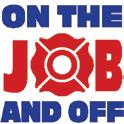
• Enables effective communication
• Helps us meet our mission

INCLUSION is an environment where all individuals are treated fairly and respectfully, have equal access to opportunities and resources, and contribute fully to the department’s success.
• Accountability. Take responsibility for your decisions and performance. Have pride in your successes, learn from mistakes, and be open to criticism in areas you can improve.
• Acceptance. Make room for everyone in your department. Each individual brings skills, knowledge, and experience that can benefit the team.
• Camaraderie. Lift up instead of tear down. Remember that we are all on the same team. Help each other out.
• Courage. Stand up for what you think is right, even when it means taking a risk. Try to find others who can support you.
No one wants to leave the sunny shores of Cuba to return to frigid mid-winter Toronto, so firefighter Shayne Magley was planning to enjoy every minute of the flight home before reality set back in. Settling into his seat, he plugged in his headphones and turned off the world around him, relishing the comfort of the additional legroom he’d paid extra for. Nothing was going to ruin the afterglow of his incredible vacation
It was well into the three-and-ahalf-hour flight when Shayne felt something hit the back of his seat, and heard horrible retching. He peeked back to see a man throwing up and turned back around. Air sickness wasn’t uncommon, nor were gastro problems after a trip to a foreign country, so Shayne opted to preserve the poor man’s privacy and plugged back into his music.
Five minutes later, the man was still vomiting and Shayne noticed a clearly-concerned woman standing in the narrow aisle. Guessing she was the sick passenger’s wife, Shayne offered his seat to her. Spotting a flight attendant, he told her that he was a firefighter and could help if the situation became an emergency.

He settled into his new seat at the rear of the plane, a bit more cramped than in his previous spot, but glad to be far from the commotion.
It wouldn’t be a long respite. Less than ten minutes later, an announcement came over the P.A., asking for anyone with medical experience to come to the front of the plane. Shayne made his way forward to a scene of total chaos. Panicky flight attendants, nearby passengers, and the sick passenger’s wife were all struggling to help the patient.
Shayne could see the man, by now covered in vomit, was unconscious,
pale, sweaty and clearly laboring to breathe. Quickly assessing the passenger’s airway, he saw that it was occluded by vomit. To make matters worse, the patient’s head had slumped forward, creating a disastrous airway situation.
After checking for a pulse and finding it weak and fast, Shayne reached under the man’s arms and pulled him into the narrow aisle, placing him on his left side to begin correcting his airway. Glancing up quickly to assess where he might get help, Shayne saw a sea of eyes watching and noting his every move. As he re-assessed the patient, he asked the closest flight attendant to grab the plane’s first aid kit, desperately hoping that it would include some airway adjunct. Shayne had to find a way to help this man before he choked to death.
Needing more space, Shayne pulled the man onto the floor by the emergency exit, in front of his original seat. Just as Shayne moved the patient onto his left side again,
the flight attendant appeared with a first aid kit – a disappointing collection of old equipment including a pair of gloves.
Shayne pulled on the gloves and began to clear the man’s airway manually. The man’s respirations began to increase, so Shayne moved on to vitals. He grabbed the ancient stethoscope and blood pressure cuff and worked fast. The blood pressure was well below normal ranges. Frustrated, Shayne stared at an IV kit he couldn’t use because, though he’d seen it done many times before, he wasn’t trained in IV cannulation.
Shayne grabbed the oxygen and applied it, hoping for a miracle. Instinctively, he grabbed the patient’s legs, raised and then pumped them towards the patient’s core. He knew compression stockings help with orthostatic blood pressure issues and was hoping that the movement might mimic some form of natural venous blood return.
Suddenly, he felt a tap on his shoulder and turned to find a fellow passenger offering to help – a concerned-looking man who introduced himself as a doctor.
Grabbing the IV kit, the doctor asked Shayne to prime the bag and get everything ready. The two worked quickly to secure the IV and re-assess the patient. After some fluid resuscitation, the man’s eyelids fluttered. Slowly, he began to wake and groggily ask what had happened.
When the plane landed a short time later, the patient was able to sit up with some assistance and was fully conscious, in spite of his near brush with death.
Shayne couldn’t believe that a quiet flight home from a fabulous vacation had turned into one of the most dramatic experiences of his life. He’d been minutes from having to deal with a VSA, all alone.

And as Shayne began to calm down, the patient became more like a passenger again. When the plane landed and came to a stop at the gate, the passengers who had watched the entire event, barely daring to breathe, stood and cheered as EMS escorted the passenger from the plane.
The applause was also for Shayne and the doctor. They were both shocked by how long the ovation lasted and Shayne finally left the aircraft, head spinning, but with a smile on his face. He hadn’t stepped up to help in hopes of recognition but because, no matter how inconvenient the circumstances might be, a firefighter has to act.
Despite the ovation, a multitude of handshakes, and a genuine thanks from the doctor, what Shayne appreciated most was the gratitude shown by the passenger’s wife. As EMS was removing her husband, she told Shayne, “This is why we moved to Canada – because of people like you.”
SHAYNE HAD TO FIND A WAY TO HELP THIS MAN BEFORE HE CHOKED TO DEATH


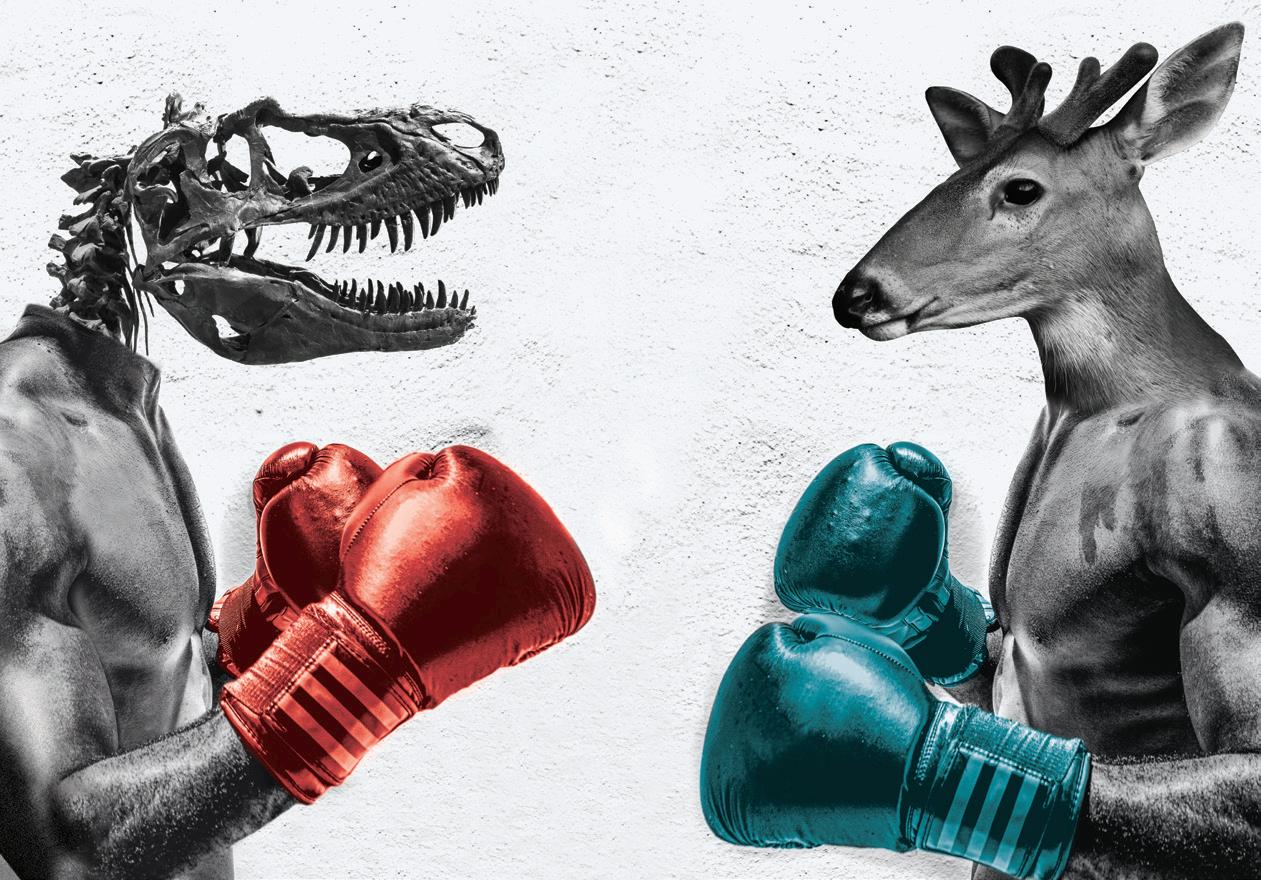
YOUNG BUCKS believe they learned it all in the academy and don’t need to listen to those with experience.
DINOSAURS stubbornly refuse to follow new protocols and talk about how real firefighters used to do things.
I’m sure virtually every officer has heard some version of these complaints, because every fire house has the same issues: conflicts and tensions arising from generational differences. It’s a dynamic that plays out in all kinds of workplaces, but if allowed to fester in a firehall can cause dire consequences.
There are five generations in the U.S. workforce today: the Silent Generation (aged 74 to 89), Baby Boomers (54 to 73), Gen X (42 to 53), Millennials (24 to 41) and Gen Z (under 23). According to the NFPA (National Fire Protection Association), each of these groups is represented in the ranks of U.S. firefighters, professional and volunteer. In the career service, half of all firefighters are between 30 and 49, with the next largest group being 20 to 29 year olds. In the volunteer service members tend to be younger, and rural locations have the highest proportion of 50+ firefighters. But all departments are composed of a mix of generations.
I’m not going to repeat the generational stereotypes because they’re often wrong and only serve to fan the flames of frustration. Understanding why conflicts arise is the real key to an effective and functional workplace. It’s important to realize that conflicts occur in

all workplaces but seem to spark more easily and are more prevalent in the fire house, thanks to the emphasis that’s placed on the importance of teamwork on the job, the extended periods of time we spend together in close quarters, and the high stress situations we experience on a regular basis.
When we examine the root cause of many fire house conflicts, we often find that the issues have more to do with life stages and positions within the organization than with any perceived stereotypes. Newer team members often feel their voices aren’t heard, while long-standing team members perceive that their experience is being ignored.
Newer employees are looking for opportunities for career advancement while those who have been around longer are looking for respect and for their experience to be acknowledged. Because there have been drastic
changes in the techniques and technology (like hydraulic ladders that have changed the way our job is done over the last several decades), members of the “old guard” remember when the job wasn’t so easy. This might lead them to think new personnel aren’t truly paying their dues. On the flip side, there’s a much greater focus on health and safety today, as well as a greater understanding of the carcinogenic risks of the job and the dangers of obesity.
The coming of AIDS created a cultural shift in what is considered acceptable behavior. There are firefighters who might remember when, as a badge of honor, you wanted to be covered in blood after medical calls. I remember a retired firefighter reminiscing about smearing more of a patient’s blood on his face before getting off the ambulance in the early 80s, in the hope of being perceived to be “cooler.”
That would be unthinkable today – for much the same reason that overhauling

THERE ARE FIVE GENERATIONS IN THE U.S. WORKFORCE TODAY:
without an SCBA should be. I personally remember not using an SCBA while overhauling a burneddown garage, because the lieutenant had laughed at me and said that he had never bothered to wear one and was fine. To him, the SCBA was an example of the newer firefighters being “soft” and this attitude was one of the many things I’d learned in the academy that I was supposed to ignore. In reality, the importance of using an SCBA was entirely based on new research and key to helping prevent cancer. While the lieutenant knew far more about the applied aspects of the job, I knew more about the safety protocol, because I had been more recently exposed to the rationale for these new procedures. We both had things to learn from each other, despite what he might have thought.
Younger firefighters are often getting used to working in a new organization, trying to chart a career trajectory,
and struggling for the first time to juggle family responsibilities with work. We all deal with work-life balance issues, of course, but those in the fire service are particularly
to the organization,” it may simply be because they’re wrestling with other obligations. They may suddenly focus on their salary or on the need for a raise because their

NEWER TEAM MEMBERS OFTEN FEEL THEIR VOICES AREN’T HEARD, WHILE LONG-STANDING TEAM MEMBERS PERCEIVE THAT THEIR EXPERIENCE IS BEING IGNORED.
challenged as we often have to cope with 24 to 48 hour shifts. If those pressures are combined with the family demands of raising newborns, toddlers or teenagers, dealing with elderly parents, coping with a new marriage or recovering from a freshlypainful divorce, tensions can mount.
When colleagues seem to display a different level of “commitment
situation has recently changed. This shift could make them appear immature and subject to criticism from colleagues who perceive a demand to be rewarded instantly. While it’s true that a firefighter’s personal life shouldn’t influence his or her work, it’s easy to understand the needs. Those in leadership roles have probably lived through similar life events and can remember having the same concerns.
Resolving ongoing conflicts is often a matter of acknowledging that these feelings exist, trying to address the underlying issues, and getting the department to unite around a common cause. It’s easy for leadership and the “old guard” to forget that they were exactly like the younger firefighters not too long ago. It is also easy for the younger firefighters to forget that even if protocols have changed, the techniques the older firefighters know were very effective on the job for a long time and that they have valuable wisdom to share. Everyone in the department has gone through the academy, met the requirements of the job, and has something to contribute. Ours is a job that helps people and it’s what many kids grow up dreaming of doing. All firefighters, regardless of age, can contribute if we keep in mind that we are all trying to reach the same goal: protecting public safety.
Tourniquets are applied in emergency situations where there is a potential risk to life. When putting direct pressure on a limb injury fails, a tourniquet might be required to stop the bleeding.
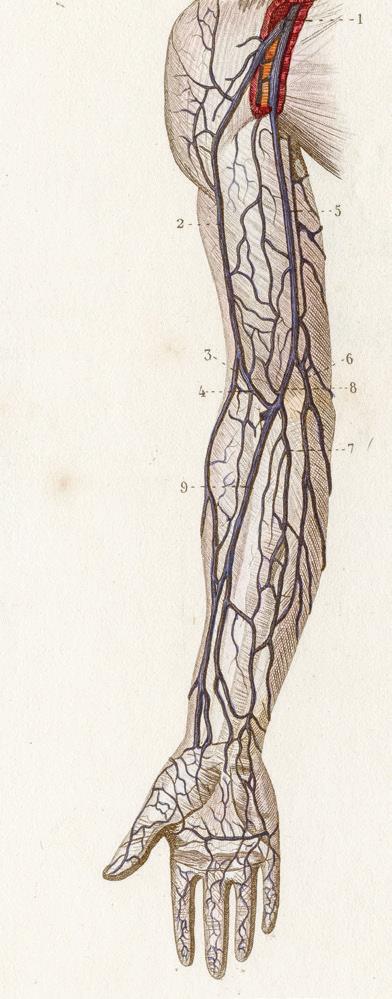
Tourniquets can be expensive, and many people will not see the value of having a first aid kit that has one in it.
IF YOU HAVE INJURED YOUR ARM OR LEG SEVERELY, THE VALUE OF A READY-TO-GO TOURNIQUET CAN BE THE DIFFERENCE BETWEEN LIFE AND DEATH.
Deep tissue injuries or amputations present the risk of exsanguination (bleeding out). When we lose too much blood our bodies can go into hypovolemic shock. Getting the bleeding controlled and activating 911 are your best chances at surviving a severe limb injury.
Keep calm – with some clever preparation, you can turn nearby items into an effective tourniquet.
STEP A
Using material from clothing, cut a strip of cloth approximately 12-14 inches long with a width of at least two inches to create the band. Cut out a second strip to use as an anchor.
STEP B
Find a strong stick, about eight inches long to act as the windlass rod (the crank). Very dry sticks might break under pressure and waterlogged sticks will bend. Aim for the middle ground if you have time to be selective.
STEP C
Wrap the band around the limb, crisscrossing at the top. Insert the windlass rod and cross the material over top of the rod.
STEP D
Twist the rod until the bleeding slows or you notice the pulse distal to the injury is now absent. This indicates that your tourniquet is tight enough. Anchor your windlass rod with another strip of material.

STEP E
a b c e d
Maintain the tourniquet until help arrives. A tourniquet is a painful tool – but the benefits outweigh the discomfort as a human can bleed out from an arterial leg wound, such as the femoral artery, in less than five minutes
DO NOT APPLY A TOURNIQUET TO THE JOINT - DEPENDING ON THE LOCATION OF THE WOUND AND ITS PROXIMITY TO THE JOINT, IT MAY NEED TO BE PLACED JUST ABOVE THE JOINT
TOURNIQUETS SHOULD BE APPLIED ONLY TO TREAT LIMB INJURIES - DO NOT USE A TOURNIQUET ON THE TORSO OR NECK. FOR WOUNDS NOT LOCATED ON THE LIMBS, EVEN AND DIRECT PRESSURE IS BEST
If you can put pressure on your wound with a clean dressing, apply immediate direct pressure. If you are not an EMS professional, call 911.
If you are alone and you do not have help, you need to act fast to ensure that you minimize blood loss. Sit down, put pressure on the wound, and begin to assemble your tourniquet.

Take your tourniquet out of its wrapping and apply it around the affected limb landmarking your application site at least two to four inches above the injured area (follow the package directions).
Note the time of application and watch for signs that the tourniquet is applied tightly enough. Tourniquets should not be removed prior to a medical assessment.
When I sat down to create CRACKYL and considered what the magazine would mean to me, I thought about successful, happy firefighters enjoying their retirement years. Isn’t that the goal?
So many of us put in 30 to 40 years of frontline service in the hopes of making it to retirement in one piece. We each create our own work/life balance strategies – some good, some not so good – and hope to finish our time as firefighters without regrets or resentment.
CRACKYL embodies this ideal. When we choose to become firefighters, we take on other people’s tragedies and emotions and have to decide every day whether to add those burdens to our own or, instead, work hard to balance mind and body.
As you look through these photos of firefighters enjoying their well-earned retirement, we hope you can imagine yourself in their place: happy, healthy, and living a fulfilled post-fire life.
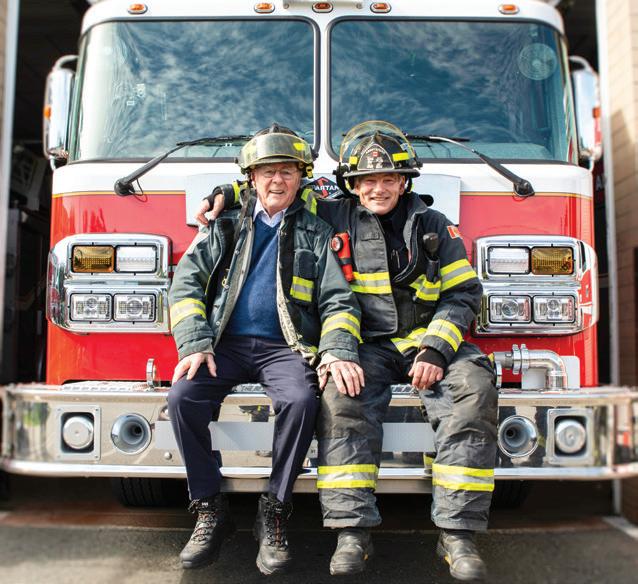
KORY PEARN
PUBLISHER CRACKYL MAGAZINE
CRACKYL: What was your favorite part of the job?
TERRY DANCY: I loved the camaraderie within the fire service and the public education interaction in the community.
CRACKYL: What one word best describes your firefighting career and why?
TERRY DANCY: I’d use “exhilarating”. You never knew what a day or night would bring as we served the community. No matter what the problem was, you had to have an answer. The physical and emotional challenges always pushed you to do your best.
CRACKYL: What do you miss most about being on the job?
TERRY DANCY: Driving the fire truck – I spent most of my career as a driver/operator. I also really miss the humorous moments with the members in the department.
CRACKYL: What was your best and worst fire station meal?
TERRY DANCY: My favourite meal was BQ pork loin roast basted with garlic and red pepper jelly, with a side of broccoli with cheese sauce and a loaded, baked potato. The worst had to be undercooked Kraft dinner with hot dogs and canned beans.
CRACKYL: Any words of advice for current firefighters on the job?
TERRY DANCY: Always remember to maintain your professionalism and integrity in any given situation. Always put the public/community first and treat others with dignity and respect (both outside the firehall and within it).
I remember my Dad’s words of wisdom: “Son, when you point a finger at someone, remember there are three pointing right back at you…”
CRACKYL: What do you wish you could tell your rookie self?
TERRY DANCY: Enjoy the rollercoaster ride of experiences, because retirement comes way too fast!
CRACKYL: Any words of advice for current firefighters on the job?
PAUL PAYLOR: Attitude is everything. If you decide that today is going to be a great day, you’re halfway there. Integrity is important so keep your word and remember the golden rule.
CRACKYL: What do you miss most about being on the job?
PAUL PAYLOR: I really miss the people we helped, and the people we worked with.
CRACKYL: What was your favorite part of the job?
A.J. FRANK: I loved the people at the station. I had fun crews on Engine 2 and worked for some great officers. We ruled the world and were one big family. The Battery Street Boys Club will always be my home.
CRACKYL: What one word would best describe your firefighting career and why?
A.J. FRANK: Exhilarating! Every day was new and different.
CRACKYL: What do you miss most about being on the job?
A.J. FRANK: Every day I was able to bring my dog(s) to work (SAR K9s RULE!), drive a fire engine around “Belltown,” hang out with some great people and help the people of Seattle. A note about the SAR dogs: Ohlin went to the Pang Fire and 9/11, Zara went to Hurricane Katrina, and Kersee found two people at the OSO landslide.

CRACKYL: What was your favorite fire station meal and what was the worst?
A.J. FRANK: I did a lot of cooking for the guys and the worst meal I ever made was a chicken curry that was sooooo verrrry HOT. I was talked into using the curry mix we had at
the station but because I was unable to read the instructions (they weren’t in English!) I put it ALL into the pot. Only one person of the twelve at the station could eat it – but she thought it was great!
As for my best meal – it was just about anything you could get on the table by 1800 hours! I was also pretty good at fried chicken wings and fried rice.
CRACKYL: Any words of advice for firefighters currently on the job?
A.J. FRANK: Be safe, have fun, and keep training on and off the job. And remember: the Department will only know you based on your actions. DON’T sit on your ass or rest on your laurels. Find a great crew, be a hard worker and treat everyone with respect. You can rest when you get home!
CRACKYL: What do you wish you could tell your rookie self?
A.J. FRANK: Dill School isn’t that hard, probation isn’t that hard and 36 years will go by faster than you think.
If you don’t have your health, you have nothing.
Wear your mask, sit down on the rig, wear your seat belt, use your gloves, glasses, and gown, wash your hands, treat everyone with respect and kindness and stay safe.
WHEN FIREFIGHTER PAUL PAYLOR WAS IN HIS EARLY
AT
PRACTICE PESTERED
THE BELLEVUE, WASH. FIRE DEPARTMENT. HE LISTENED, WAS HIRED, AND RETIRED 49 AND A HALF YEARS LATER AFTER A GREAT CAREER.
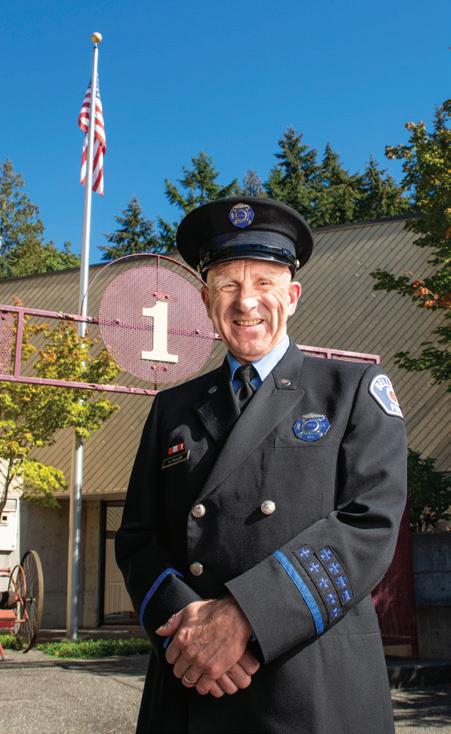 A.J. FRANK, WHO SERVED FOR 39 YEARS, WAS NOT ONLY THE DRIVER OF ENGINE 2 AT A VERY BUSY COMPANY IN DOWNTOWN SEATTLE, BUT ALSO A USAR DOG HANDLER FOR THREE K9’S.
A.J. FRANK, WHO SERVED FOR 39 YEARS, WAS NOT ONLY THE DRIVER OF ENGINE 2 AT A VERY BUSY COMPANY IN DOWNTOWN SEATTLE, BUT ALSO A USAR DOG HANDLER FOR THREE K9’S.
CRACKYL: What was your favorite part of the job?
KYM LEROY: Helping others and making a difference.
CRACKYL: What one word would best describe your firefighting career and why?
KYM LEROY: Unpredictable – every day on shift was a different adventure.
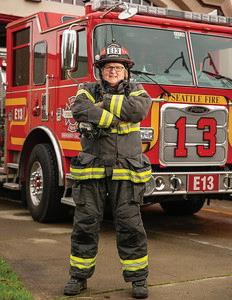
CRACKYL: What do you miss most about being on the job?
KYM LEROY: I miss the backing of the other firefighters who want nothing other than to be helpful and supportive. They’re just like a family but better!
CRACKYL: What was your favorite fire station meal and what was the worst?
KYM LEROY: The best was any meal served with camaraderie and laughter. The worst was “Atomic Chili” that made people sweat and turn red from head to toe.
CRACKYL: Any words of advice for firefighters currently on the job?
KYM LEROY: Get involved right away, then nurture and grow relationships.
CRACKYL: What do you wish you could tell your rookie self?
KYM LEROY: Don’t be afraid to take “good” chances. Be yourself. Put yourself out there.
CRACKYL: What was your favorite part of the job?
A.D. VICKERY: I really enjoyed helping people with medical emergencies and was happy to see the Fire Service evolve to save more than just property.
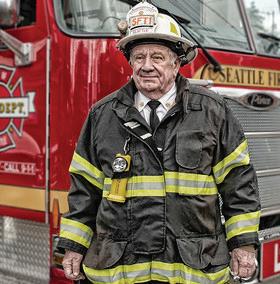
CRACKYL: What do you miss most about being on the job?
A.D. VICKERY: I miss the co-workers who made up the team.
CRACKYL: What was your worst fire station meal?
A.D. VICKERY: We had a recruit attempt to make oxtail soup but he didn’t know you had to defur the tail first!
CRACKYL: Any words of advice for firefighters currently on the job?
A.D. VICKERY: You’re only as good as you are at your most tired. Get your sleep when you can. You only get one chance at an alarm. Do your best!
CRACKYL: What do you wish you could tell your rookie self?
A.D. VICKERY: Take every opportunity your department has to offer. You’ll never regret trying or learning something new.
CRACKYL: What was your favorite part of the job?
JANEEN RUGE: I loved teaching new people in the mentorship program.
CRACKYL: What one word would best describe your firefighting career and why?
JANEEN RUGE: Fantasticallychallenging, new and different every day.
CRACKYL: What was your favorite part of the job?
MARK MICELI: The people I worked with.
CRACKYL: What one word would best describe your firefighting career and why?
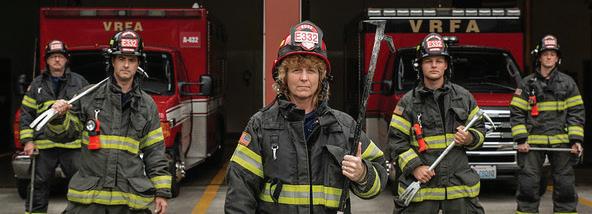
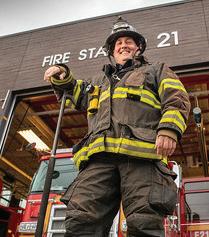
MARK MICELI: Adventure.
CRACKYL: What do you miss most about being on the job?
MARK MICELI: My work family and friends.
CRACKYL: What do you miss most about being on the job?
JANEEN RUGE: The great crews.
CRACKYL: What was your worst fire station meal?
JANEEN RUGE: A firefighter who swore he didn’t know how to cook was asked to make spaghetti. He must have put the noodle box into the pot because the end result was full of
boiled cardboard. He was never asked to cook again!
CRACKYL: Any words of advice for firefighters currently on the job?
JANEEN RUGE: Have fun and be proud of what you do.
CRACKYL: What do you wish you could tell your rookie self?
JANEEN RUGE: Don’t take yourself so seriously.
CRACKYL: Any words of advice for firefighters currently on the job?
MARK MICELI: Try to leave the job at the station. Work as hard at enjoying your time off as you did getting a fire service job.
CRACKYL: What do you wish you could tell your rookie self?
MARK MICELI: Buy Google! Buy Amazon!
OVER THE COURSE OF 24 YEARS OF SERVICE, FIREFIGHTER MARK MICELI SAVED THE LIVES OF SEVEN DOGS. THE FIRST FEMALE FIREFIGHTER WITH THE CITY OF AUBURN, WASH., FIRE DEPARTMENT, CAPTAIN JANEEN RUGE WAS ALSO THE FIRST FEMALE CAPTAIN IN THE VALLEY REGIONAL FIRE AUTHORITY, SERVING A TOTAL OF 21 AND A HALF YEARS.CRACKYL: What was your favorite part of the job?
RUSS ARAKAWA: The feeling of having made a difference in somebody’s life.
CRACKYL: What one word would best describe your firefighting career and why?
RUSS ARAKAWA: Fulfilling.
CRACKYL: What do you miss most about being on the job?
RUSS ARAKAWA: The firehouse camaraderie.
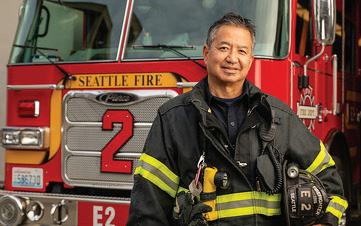
CRACKYL: What was your worst and best fire station meal?
RUSS ARAKAWA: The worst was an inedible salty fried chicken dinner but the best was chili verde, a recipe so good that it was passed down through Station 2.
CRACKYL: Any words of advice for firefighters currently on the job?
RUSS ARAKAWA: Learn as much as you can. Don’t criticize the mistakes of others. You’ll never be finished learning. Expect to make mistakes, and learn from them.
CRACKYL: What do you wish you could tell your rookie self?
RUSS ARAKAWA: Remember that your actions, on and off duty, represent all of us in the fire service.
CRACKYL: What was your favorite part of the job?
MIKE SHARP: Being on the nozzle of a working fire hose!
CRACKYL: What one word would best describe your firefighting career and why?
MIKE SHARP: Unexpected. I never expected firefighting to be my career and had no idea that it would be so rewarding and inspiring.
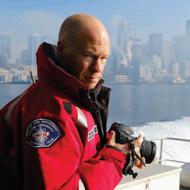

CRACKYL: What do you miss most about being on the job?
MIKE SHARP: The troops.
CRACKYL: What was your favorite fire station meal?
MIKE SHARP: Prime rib Christmas dinner with all the families in attendance.
CRACKYL: Any words of advice for current firefighters on the job?
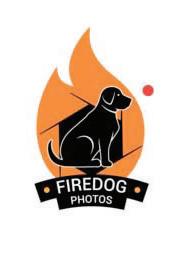
MIKE SHARP: Communicate openly. Check in with the troops often, enjoy the good times and understand the the impact events have on them.
CRACKYL: What do you miss most about being on the job?
MIKE SHARP: I’ll really miss the people we helped, and the people we worked with.
CRACKYL: What do you wish you could tell your rookie self?
MIKE SHARP: Never miss an opportunity to learn, teach and improve.
FIREFIGHTER RUSS ARAKAWA SPENT 30 YEARS WITH THE SEATTLE FIRE DEPARTMENT IN THE SUPER BUSY DOWNTOWN STATION 2. DEPUTY CHIEF MIKE SHARP RETIRED FROM THE CITY OF SEATTLE FIRE DEPARTMENT AFTER 31 YEARS OF SERVICE.CRACKYL: What was your favorite part of the job?
MONTEITH MCQUADE: The community and fellow members were the best. Even a bad day at the fire station is really pretty good. It’s what we make of it and spending time with friends a couple of times a week is always enjoyable.
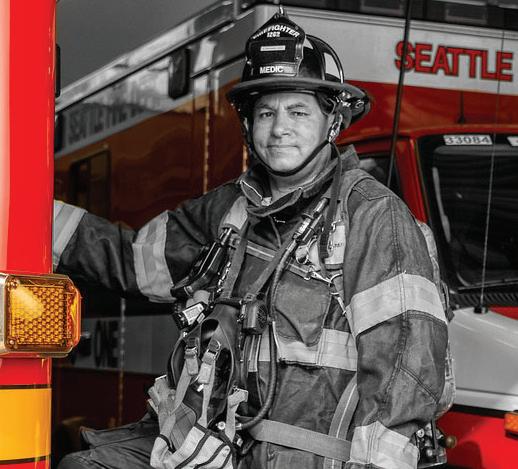
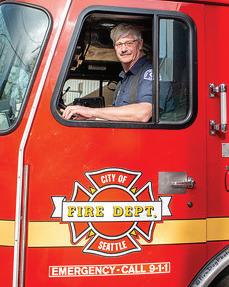
CRACKYL: What one word would best describe your firefighting career and why?
MONTEITH MCQUADE: Complete. Early in my career I was rambunctious and the senior members had to try to keep me in bounds. Near my sunset, I believe I’d become a member of the department who was willing to raise my hand if we strayed too far from tradition. I believe I had become a person whose opinion carried some weight and could be counted upon as a resource.
CRACKYL: What do you miss most about being on the job?
MONTEITH MCQUADE: Meeting the members who came through the station. Most members of the SFD had a life before the fire department. Getting to know what people did and what their
current passions and projects were was always time well-spent. Years later we might be working together and it was a nice “ice breaker” to get the day rolling if I could remember something about them. I can’t think of any other profession where architects, lawyers, nurses, electricians and plumbers all work together to accomplish a task. Each one of these talents might be drawn upon on any call and all that experience made for good discussions.
CRACKYL: What was your favorite fire station meal and what was the worst?
MONTEITH MCQUADE: My favorite was any meal that I didn’t have to cook – preferably hot. Most meals were certainly better than anything I might have prepared for myself at home! The amount of effort that goes into a firehouse meal is seriously underestimated. The standouts for me were Rick Murphy’s clam linguini, Caesar salad, and garlic bread.
The worst was chicken and dumplings that came out like an undercooked loaf of bread with vegetables and gravy. I never saw any chicken and it was certainly not the rich and creamy soup the cook had envisioned. It was probably the only time we ordered pizza right after the evening meal.
CRACKYL: Any words of advice for firefighters currently on the job?
MONTEITH MCQUADE: The respect we give to others reflects on us. You control what reputation you’ll earn during your career. Appreciate that background and culture changes the way a person approaches a situation. Don’t simply label someone a “wingnut” until you walk in their shoes.
CRACKYL: What do you wish you could tell your rookie self?
MONTEITH MCQUADE: Listen more and talk less. Be kind and careful with your words – you never know when you may have to eat them!
CRACKYL: What was your favorite part of the job?
ANDRE MCGANN: I loved all the great friends I made and the crew camaraderie we enjoyed.
CRACKYL: What one word would best describe your firefighting career and why?
ANDRE MCGANN: Experience. When you add up your 32 years on the job, you’ve had huge opportunities.
CRACKYL: What do you miss most about being on the job?
ANDRE MCGANN: I miss the friends, but still work at keeping those relationships alive. It just takes effort.
CRACKYL: What was your worst fire station meal?
ANDRE MCGANN: Beans and weenies or French dressing chicken were both bad. Hard to say which was worse…
CRACKYL: Any words of advice for firefighters currently on the job?
ANDRE MCGANN: Always remember – it’s their emergency, not yours. Don’t internalize or take it home if at all possible. And don’t be afraid to seek help if you find yourself hanging onto those hard runs.
CRACKYL: What do you wish you could tell your rookie self?
ANDRE MCGANN: Start financial investing early. This will help you with many more options later in life!
FIREFIGHTER MONTEITH MCQUADE GAVE 33 YEARS OF SERVICE TO THE CITY OF SEATTLE FIRE DEPARTMENT. SEATTLE PARAMEDIC ANDRE MCGANN WAS HIRED IN 1989 AND SERVED FOR 32 YEARS.In a 1962 episode of the classic TV comedy The Dick Van Dyke Show, writer Rob Petrie (played by Dick Van Dyke), discovers a bank book hidden by his stayat-home wife, the adorable Laura (Mary Tyler Moore).
“What’s wrong with the money in our joint account?” he asks her.
“I want some money of my own. That’s important to me,” Laura replies.

The money she has saved came from Rob, of course, as she has no income of her own. The way Laura figures it, if she hangs onto it long enough it magically morphs into her money.
MANAGING YOUR TWO-INCOME HOUSEHOLDAh, money. If there had been banks (and credit cards) in the Garden of Eden, Adam and Eve would probably have squabbled over it, just as couples do today. And since so many households today, unlike Rob and Laura’s, have two incomes, the complications just pile up.
To get the inside story, CRACKYL spoke to seasoned financial advisors who told us that financial planning helps you take into consideration your assets, incomes and expenses to help you reach your goals, whether that means sending your kids to college, buying a recreational home, or retiring.
A lot of financial management has to do with your age and stage, and there’s a huge difference between couples in first versus second marriages. First-marriage couples tend very much to consider the money “ours” and put all revenue – even inheritances – into a joint account. These tend to be expensive years, with home-buying and childrearing, and many of those expenses are shared.
THIS DOESN’T MEAN, HOWEVER, THAT ONE PERSON SHOULD BE IN CHARGE OF THE FINANCES. IT’S IMPORTANT FOR BOTH PARTNERS TO KEEP AN EYE ON THAT ONE ACCOUNT AND TRACK YOUR EXPENSES.
Sometimes when one individual is the major breadwinner, he or she will keep their partner in the dark. But spending decisions should be discussed, even if you’re uncomfortable with that. Be open with the reality of your bills and your income. And watch out for credit card debt. Talk about what you buy before you buy it and sit down at least once a year with a financial advisor – even if you feel you have “no” money. It may help bring openness and honesty to your situation.
One advisor we spoke with noted that older couples as well as those in a second marriage have a very different attitude to money. It’s more common in these situations for each partner to have a separate account, and to contribute to a joint account for household expenses. Both partners may be earning, they may have children from previous marriages, and their priorities may be very different. Often, for example, each parent will take sole responsibility for paying for his or her children’s education. And with annual college fees ranging from $30,000 at a state college to $70,000 at a private college this can be a massive outlay.
Suze Orman, personal finance expert, author, TV personality and self-titled “The Money Lady,” adds another outlook.
“SO MANY TIMES, THE PERSON (IN THE COUPLE) WHO MAKES THE MOST MONEY IS THE ONE THAT THEY BOTH FEEL HAS THE MOST POWER. MONEY DOESN’T DETERMINE IF YOU ARE THE MOST POWERFUL OR NOT. YOU HAVE TO HAVE MONEY OF YOUR OWN. THE LAST THING YOU WANT TO DO IS ASK PERMISSION.”
Person A brings home $7,000 per month and Person B $3,000 for a total of $10,000; and the monthly household expenses are $3,000. Splitting the joint expenses 50-50 (i.e. $1,500 per person), would mean A chips in just 25 percent of their take home pay, while B has to cough up 50 percent. Orman strongly advises that you should use a percentage of your respective take home incomes to decide who pays what.
Under that scenario, $3,000 in household expenses is 30 percent of the A and B’s combined household income of $10,000. Therefore, each person should contribute 30 percent of their take home pay: A would pay $2,100 and B $900 for a total of $3,000 per month.
Should you get your kids involved in financial decisions? There’s no need to overwhelm them with details but starting in their early teens, it’s wise to include them in some discussions. You could talk about the cost of a one-week vacation vs a two-week getaway, and what you might do with the money saved (or the sacrifices you’ll be making in order to afford it). There’s nothing wrong with having them be a part of the discussion on the financial aspects of applying for college, since kids may have some pretty ambitious – or even unrealistic – dreams. We all need to learn that there are consequences to choices.
Whether you are on your first, second (or third!) marriage, you two need an emergency fund. Unemployment, illness, a dying car or a leaky roof can happen at any time. According to the money advice site Investopedia.com, most financial advisors recommend three to six months of household expenses in uninvested cash. To figure out your magic number, keep careful track of all expenses for three months (which will also provide an interesting snapshot of where your money is going). Then start contributing, perhaps to a designated account. The sum you need may seem daunting, but keep chipping away at it. If each of you put only $5 aside every day, by the end of the year you’ll have $3,650, itself a nice start.
And how did TV couple Rob and Laura on The Dick Van Dyke Show sort out their money confusion? Turned out Laura was secretly squirreling money away to buy Rob a sports car. He finds that even more adorable, she forgives him for being nosy, and they both live happily (married) ever after.
For more financial tips and wisdom, visit nerdwallet.com and sofi.com

Country music brings people together. Songs about real-life troubles and bigtime celebrations, all peppered with a bit of satire and some catchy, addictive melodies – country music plays in the ears and the hearts of millions.
With new talent coming on stage at a breakneck pace, a musician has to stand out from the crowd. Anthony Nix’s musical successes have put him beside the talented musicians and artists who work with top country stars including Kane Brown, Vince Gill and Thomas Rhett. He’s a writer and a performer, playing in bars, on local parade floats and at huge concerts. Nix balances his time between Tennessee and Wisconsin and says all audiences are important to him, regardless of their size or location.
Raised in Wisconsin, Anthony Nix knows a thing or two about living the life of a country song. “Today, I have this little dream house, a fixer-upper in the woods. It sounds like a fairy tale, but I have a river in my backyard and a bridge that I built with my son. I don’t think I could find this place twice in one lifetime.”
Nix’s story is one of survival, perseverance, pain, and hope. Lots of country singers might touch on these topics, but he draws from his own deep pool of life experiences to tell stories that resonate with his audience. “I didn’t have a normal upbringing. I was adopted, expelled from high school, survived cancer, and am now a single dad.”
Like many young Americans, Nix felt called to join the military after 9/11. He was planning to join the fire service after completing his hitch, but just after he turned 21, life dealt him a blow that would change many of his goals and aspirations. Diagnosed with nonHodgkins lymphoma (a type of blood cancer), Nix had to leave the military to come home for treatment and then surgery to remove a section of his left lung. Nix understands survival, having lived a story that would bring chills to anyone’s spine. It’s no surprise that he values helping people in his community.
It took Nix a long time to get comfortable with his post-cancer recovery. He loved to sing but didn’t know if he would be able to do it the same way he had previously. Nix is extremely thankful to his doctor, whom he describes as “amazing,” who went above and beyond when it came to rehabilitation and post-surgical recovery.
“I became a cardio junkie. I slowly got back into it and learned what I could and couldn’t do. I will never be as strong as I was, but I run and work out quite a bit. If I don’t maintain my fitness, I could fade out.”
“But after the surgery, I wasn’t physically able to do what I wanted and needed to do as a firefighter, so I went into sales for 15 years. I hated it – it wasn’t me, not who I am. Suddenly, my music career started to take off, I became a little better known and I was able to leave that sales job. I bought my house and got to know the people in town and the fire chief. He wasn’t trying to recruit me, but told me he was having a hard time finding firefighters. I’d never thought the opportunity would come back around.”
Humble and always surprised by the attention and feedback he receives from his fans, Nix prides himself on dividing his time between country music, his role as a parent and – as if his plate isn’t full enough – his dedication to volunteer firefighting.
“THE BROTHERHOOD, THE CAMARADERIE...I DON’T THINK I’LL EVER STOP. PEOPLE WONDER HOW I CAN CONTINUE, ESPECIALLY AS A VOLUNTEER, BUT I WILL LITERALLY ALWAYS FIND A WAY TO BE A PART OF THIS FIRE DEPARTMENT. I’M FINALLY DOING SOMETHING I’VE ALWAYS WANTED TO DO.”
Working for his local volunteer fire service has, in a powerful way, taught Nix a lot about his community and the value of serving others. He’s one of almost a million American volunteer firefighters who represent their towns with pride. Nix loves the way his fire service gets involved in town functions and acknowledges how important it is for the community to rally behind their volunteer firefighters. Whether it’s raising money for new equipment or serving ribs at a town function, Nix makes it a priority to be a part of every facet of the fire service. This is a field he never sees himself leaving, despite his increasing popularity on the country music scene.
“Making music was always the way I decompressed. I love it, and it’s a passion, but it’s also work – a lot of work. Now, when I come home after working a shift with the fire department, I’m more relaxed. I’m not doing the paperwork and contracts and hand-shaking and all the crazy meetings with record companies.

I guess firefighting is now almost my decompression from life.”
With multiple singles on the air waves and available across all major streaming services, Nix has an army of fans. His most recent single, “The Story,” bridges the gap between he said/she said, acknowledging the importance between hearing both sides of the story. His casual and comedic approach to music has people humming and singing along almost instantly.
“ ‘The Story’ is not what people think it is. I’m a single dad and I have been through breakups but this song is actually about how, in my experience, every time I met somebody, she’d talk about how someone had been mean to her. There was always a story. ‘The Story’ isn’t my story – it’s the line I always got when I met someone.”
Nix’s music and lyrics come from a well of personal experience. During the pandemic, in the absence of normal shows and concerts, he has spent a lot of time writing music.
“I write all my own music and I write for other artists, as well. That’s how I got my foot in the door. I work with Kane Brown’s band, and with Thomas Rhett and Vince Gill. I write stories about my life – and they’re true. It’s a weird story, but you can either be a statistic or you can overcome it. I didn’t want to be a stat, so I kept going.”
With new singles, big shows, and a fully loaded year on the docket, Anthony Nix is proving to be unstoppable, despite every obstacle that life has thrown his way. Perseverance and passion continue to fuel both his journey in country music and his role as a volunteer firefighter. His small town in Wisconsin has become his home and he says he would do anything to help his local station and build support for volunteer firefighters.

“I’M TRYING TO FIGURE OUT A WAY TO USE MY MUSIC TO HELP RAISE MONEY AND AWARENESS OF FIRE DEPARTMENTS AND VOLUNTEER FIRE FIGHTERS.
They’re farmers and construction workers. They’re not in sales, or marketing. I want to help all the small local towns raise awareness and recruit people. I think people just don’t know they can be a volunteer firefighter.”
With the town and fire department at his back, Nix knows that his family extends far beyond those he lives with. Being a country singer puts him in a position to do something special for his own fire department, so he’s donating royalties from his song “Around Here.”
No matter how famous he becomes in the world of country music, being part of the firefighting family in his local volunteer fire department is what’s most important. For Anthony Nix, it’s the fire that burns within.
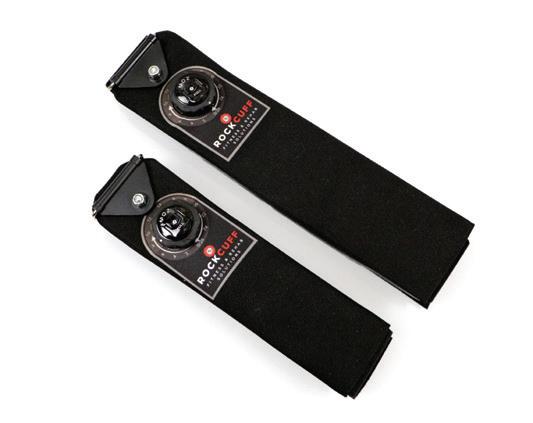

is the oldest new trend to hit the performance training and sports rehabilitation world.
Discovered by Yoshiaki Sato of Japan in 1966, BFR or "occlusion training" was, by the 1980s, being used by leaders in the fitness and performance world including Arnold Schwarzenegger, Franco Columbu and Sergio Olivia. The technique remained relatively unknown outside the bodybuilding arena until 2014 when physiotherapist Johnny Owens began using it with his patients at the Center for the Intrepid, a National Armed Forces rehabilitation facility at Brooke Army Medical Center in San Antonio, Texas.
The Center for the Intrepid was the first facility to use BFR with armed forces personnel who had suffered severe injuries and amputations. Since then, significant research has shown the efficacy and benefits of this type of training. In a recent systematic academic review it was shown that using BFR for as little as three to six weeks can enable an athlete to increase 1 RM (rep max) for leg press, bench and squat, increase power output (sprint speed, vertical jump), size and isokinetic and isometric strength. Studies have also shown that BFR training can increase both size and strength in patients who are post-op and having difficulty restoring normal strength and function despite aggressive rehabilitation.

It’s a simple strategy. Apply a cuff to the arm (around the brachial artery) or leg (around the femoral artery), tighten it up to a prescribed pressure and perform exercises. An important note: these are the only places (brachial and femoral artery) where you should place a BFR cuff.
When the cuff is inflated or tightened, arterial inflow of blood to the exercising muscle occurs, but venous return is prevented. Much like a balloon, the muscle has only so much capacity for blood; therefore, as it becomes engorged with blood flowing in but not leaving, capacity is eventually reached. As the muscle becomes engorged, no more oxygenated blood is available so the muscle becomes fatigued as it continues to exercise. This fatigue causes the muscle to recruit more motor units (MU) which means that a greater percentage of the muscle is activated (increased MU recruitment = increased strength = hypertrophy). This is the localized effect of BFR. As exercise continues, lactic acid builds up causing PH to decrease and creating several systemic effects, including:
• Increase in respiratory rate
• Stimulation of pituitary to release growth hormone (GH)
• Stimulation of the liver to release insulin growth factor 1 (IGF-1)
• Suppression of myostatin (when myostatin is released, it inhibits muscle growth)
The release of GH and IGF-1 helps muscle and bone growth to happen more quickly than with traditional training. The levels or concentration of GH and IGF-1 released are similar to what you would expect from high intensity training (80 percent or > 1 RM) or from using anabolic steroids. The suppression of myostatin also adds to an increase in muscle growth and strength. The combination of the localized and systemic effects creates a greater recruitment of the muscle as a whole as well as increases in strength and power, soft tissue repair and muscle size.
The best part? All of these gains are achieved at 20 to 30 percent of 1 RM (rep max) – at very light weight. Ordinarily such responses, both systemic and localized, can be achieved only with 80 percent or higher 1 RM. The BFR method offers the same gains with far less stress on the joints, making it ideal for recovery days and allowing for continued strength and endurance building.
One huge misconception is that a BFR cuff must fully occlude in order to work. Studies show that as little as 30 to 40 percent limb occlusion is all that’s needed to create the desired effect, making the cuffs an easy addition to a fitness routine.
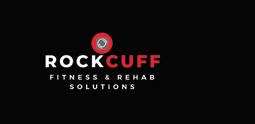

Traditionally in rehabilitation, the full-occlusion cuffs are expensive ($5,000-$7,000), less efficient and must be used under medical supervision. We now know that we can safely use less expensive cuffs ($200-$300) that will not fully occlude. The cuff I use personally, as well as in the clinic and in the gym with my athletes, is the Rock Cuff. There are other models, but in its price range, I find the durability and versatility of the Rock Cuff makes it best for the job.
Once the cuff is placed on a limb, one full turn of the dial equates to 50 mmHg pressure. For upper body exercises, using cuffs on the arms, I start at 100 mmHg (two turns) and for lower body (cuffs on legs) I start at 150 mmHg (three turns).
As with any form of exercise, you need to take precautions and be aware of contraindications including the use of blood thinners, the presence of active malignant tumors, a history of blood clots, nerve or venous compression issues, etc.
Training correctly is key to getting the BFR results you want. To achieve the optimal localized and systemic effects of BFR requires a specific rep and set sequence.
CARDIO 30/30/30 30/15/15/15
Apply pressure, do 30 reps, rest 30 seconds, do 15 reps, rest 30 seconds, do 15 reps, rest 30 seconds, do 15 reps and release pressure. Repeat this for 2 to 6 sets.
Apply pressure, do 30 reps, rest 30 seconds, do 30 reps, rest 30 seconds, do 30 reps and release pressure. Repeat this for 2 to 6 sets.
On a bike or elliptical, ride 5 minutes without pressure, apply pressure and ride for 5 minutes, release pressure for 5 min, apply pressure for 5 minutes. Repeat this sequence for 30 to 60 min.
SAMPLE ARM ROUTINE (Bicep Curls) using 30/15/15/15. In this scenario, cuffs are placed on both arms (as high up in the axilla as you can get) while you do biceps curls. Tighten your cuff to the desired tension (100 mmHg recommended) and using 30 percent of your normal weight, perform 30 reps. Rest 30 seconds and perform 15 reps. Repeat this cycle twice then release the pressure. This is one set. Repeat for 2 to 3 sets
SAMPLE LEG ROUTINE using 30/30/30. In this scenario, cuffs are placed on both legs (as high up on the femoral artery as possible) while you are performing the following super-set. Tighten your cuff to the desired tension (150 mmHg recommended) and perform 30 reps of squats. Rest 30 seconds and perform 15 reps of single leg squats on each side for a total of 30 reps. Rest 30 seconds and perform 30 reps of alternating lunges. When finished, release the pressure. This is one set. Repeat for 2 to 3 sets.

BFR is an intense form of training and although you are using light weights, the training effect will be significant. Keep that in mind as you start to build your BFR routine.
Dr. Trent Nesslor, President of Rebound Vitality, is a sports physical therapist with over 24 years of sports medicine clinical experience. He is a nationally-recognized expert in the area of athletic movement assessment and injury prevention.

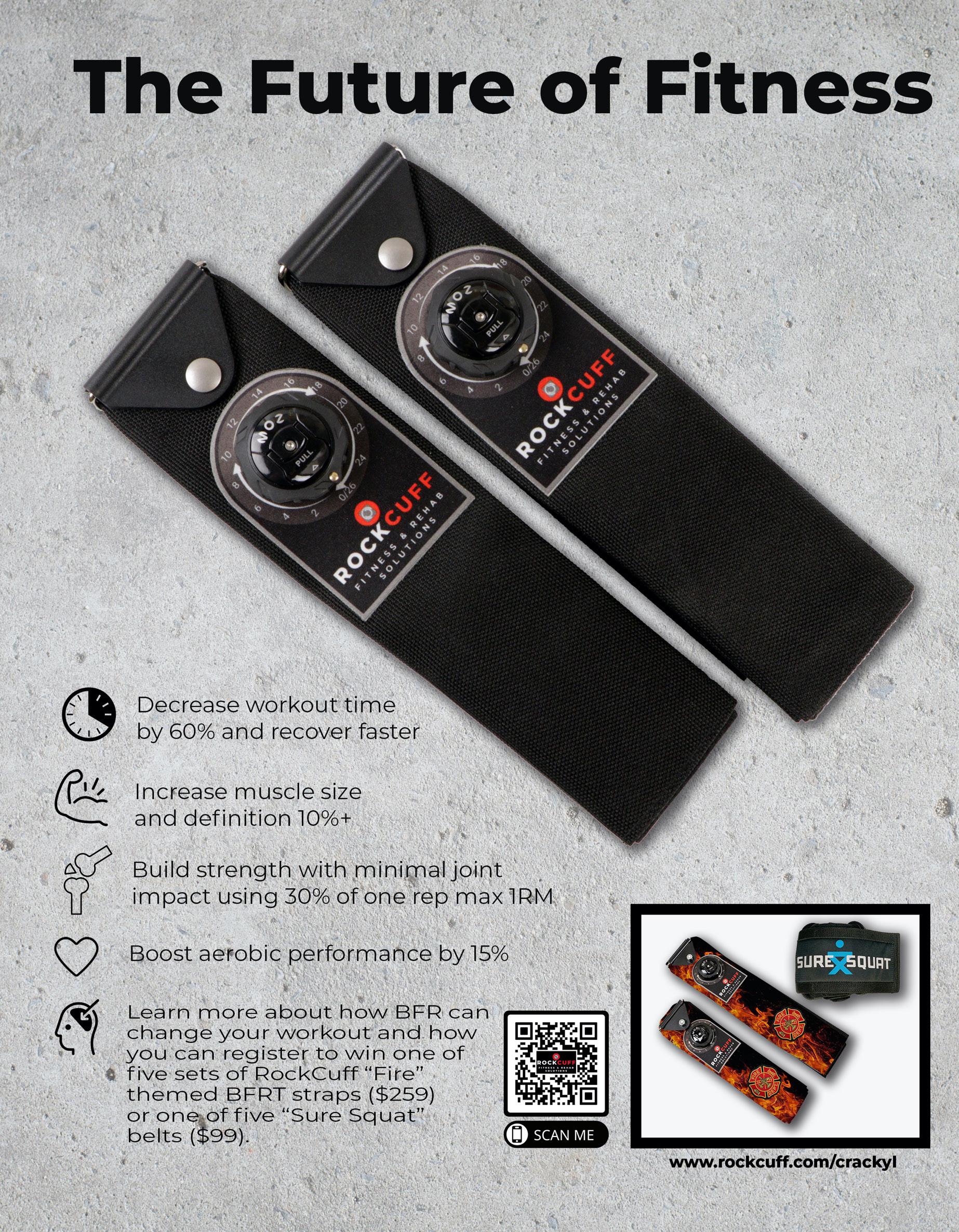
 By Aaron Quinn
By Aaron Quinn
Men who for truth and honor ’ s sake.
Stand fast and suffer long.
Brave men who work while others sleep
Who dare while others fly …
They build a nation ’ s pillars deep
And lift them to the sky ”
Ralph Waldo EmersonIn jobs like ours there are winners and losers. Our world is filled with life or death situations and seconds count. Self-preservation is an afterthought, and there can be no quitting.
Our work often revolves around tragedy, sorrow, and pain. As firefighters, we experience it all: the sights, the feelings, the sounds, and – the hardest for me –the smells. In the last year I have gone from between 48 and 72 hours with less than five hours of sleep in total. I’ve witnessed death in most of the ways it can be served, and worked hours on end with no food, rest, or water. All of this has been for strangers – people I’ll probably never see again.
I can think of no other career in which individuals give so much to those in need and ask nothing in return. We want no medals.
We exist at the extreme edges of life – in the places few ever go. These are the places where life is simple. You either live or die. These are the places where you touch death in all its many forms. Every firefighter with “time on” has come face-to-face with the gut feeling of death. Every firefighter has held death and seen the moment life leaves the body. We have all seen real pain in the eyes of parents.
But we have also felt triumph and the rush of straight adrenaline after a fire or rescue. It’s an elusive sensation, impossible to explain. We ask ourselves, “What now, Life? What’ve you got? Bring your best. We’ll handle it.” Sometimes, we experience these extremes at the same time, at the same incident. We often simultaneously hope for a “good call” and a “quiet day.”
To function here I’ve learned to disassociate emotions and feelings, to build walls in order to operate, to not let everything come flooding in. The problem is that it becomes increasingly hard to turn it all off without walling off all emotions. This is where many firefighters learn to function, but it’s not always where we thrive. Sometimes the notion of balance can seem a distant concept.
We are heroes in the eyes of most but rarely see ourselves that way.
WE CAN SAVE THE WORLD, REMAIN CALM WHEN HELL GAPES OPEN, AND PULL HOPE OUT OF THE PITS OF DESPAIR, BUT WE STRUGGLE TO SAVE OURSELVES AND OUR SISTERS AND BROTHERS. IN 2016, A STUDY FOUND THAT MORE FIREFIGHTERS DIE BY SUICIDE THAN IN THE LINE OF DUTY. THIS IS OUR REALITY.
And this is where the story starts.
In 2015, I heard about this “crazy Dutchman” who climbed Everest with nothing, and I mean nothing. Others had done it without oxygen, but this man did it with no heavy-duty clothing or outdoor gear. He wore just shorts and boots – the kind of shorts you’d wear to the beach.
I was intrigued and wanted to learn more. It turned out that the crazy Dutchman was truly incredible, spending hours on the ice and running marathons in both arctic weather and desert heat. And apparently, he could teach others to do the same.
I began a deep dive into his teachings – reading, watching, and listening to anything I could find by or about him. He spoke of training the body and healing the mind, arguing that health, strength, and happiness are in our hands. He spoke of healing the traumas of the past. I was transfixed.
Then one day I heard that he was coming to San Francisco. The “Iceman” Wim Hof was coming to San Fran-mother-f@#king-cisco.
I had to go.
My metamorphosis began on October 16th, 2016 when I took a one-day workshop to learn “The William Hof Method” (WHM) in San Francisco, with the crazy Dutchman himself – Wim Hof. The breathing instruction alone blew my mind. I had no idea what had happened. And the cold was unreal. My body and mind felt alive in a way I never had before.
AT THAT WORKSHOP, AS I EMERGED FROM THE ICE BATH, BITS OF FRIGID ICE STILL STICKING TO MY SKIN, I FELT A DEEP INNER SILENCE AS KNOWLEDGE BEGAN TO SINK IN, DOWN TO MY VERY CORE. THAT’S A PLACE WHERE NO WORDS NEED TO BE SPOKEN. ALL IS SIMPLY UNDERSTOOD.

“The cold is a righteous teacher.” Wim’s words echoed in my head. He’s right. It is.
I continued by taking the ten-week online course and quickly realized that I wasn’t building a wall against the extremes of the job. Instead, my unconcious had been receiving constant bombardment from years on the job. Just behind my “calm” sea, a menacing hurricane awaited.
I thank God that I found the WHM before the hurricane hit. I spent the next few months breathing and freezing my way through the course, and then I knew: I needed to learn more and bring this to other firefighters. I attended the Advanced Class in Los Angeles, followed by the Masters Week in Colorado. It became my journey to be my own hero and to start to heal from the stresses of my job. This is when I began to make the WHM my own and it’s my hope that you’ll find some benefit as I share my experience. I hope you’ll become your own hero.
The WHM has three parts: The Breath; The Cold; and The Mindset. We cannot heal the mind if the body
is not optimized and this is what the breath does, putting our bodies in an optimal state. The fastest alchemy for the body is the breath. The cold magnifies the effects of the breath, allowing the mind to heal and unify with the body. The entire WHM brings balance, but the cold is simultaneously the hardest, scariest, and – for me – the best element.
“Followyourfears.Theyleadtothebestyou.”
~Unknown
The ice speaks to me – loudly. As I’ve trained in the method, I’ve begun to shift my view from seeing the ice as evil to allowing it to become my teacher. I now understand that the only way to exist in the cold is to surrender myself to it: at that point my body can learn. As the body learns to heal, it also learns to “rewire” itself to the brain. My brain has learned to experience evil trauma as a healer and a teacher. The cold has become the greatest giver of strength. And the most amazing thing is that the brain soon starts to experience traumas in all their forms as teachers and healers. By learning to rewire many of my brain/body connections, I’ve realized that nothing is a trauma until I give it that power. Until I make it trauma.
Kasper van der Meulen, an amazing WHM teacher, offers a powerful learning experience around pain that has taught me that the sensation of an event does not determine how I experience it. Pain can just be pain: I don’t have to experience it as a trauma. It can be hard, tragic, sad or painful – but just that.
Even the traumas that we experience as firefighters can become teachers. Instead of tearing us apart, they can strengthen us and bring balance. Traumas happen and those very real experiences will never go away. But I’m learning that by surrendering to these extremes, I can integrate them into who I am. This integration fosters a deeper understanding of the human experience and is a strength we firefighters can develop.
Author Katie Kacvinsky says, “...but pain’s like water. It finds a way to push through any seal. There’s no way to stop it. Sometimes you have to let yourself sink inside of it before you can learn how to swim to the surface.”
Since beginning my journey in 2015, I’ve become a Level 2 Wim Hof Method instructor. I am passionate about bringing this philosophy and methodology to the fire service because I can see that despite all the sorrow, we as humans are beautiful. It is our shared existence and our similarities, not our differences, that give us strength. The Wim Hof Method has taught me to sit still and be silent, to be there with all my feelings and to learn from them. I’ve learned to feel stimuli in and on my body and to let it just move on. Then and only then can the body and mind heal.
The breath is a window to the soul, the cold is a door to the soul, and our mindset allows us to walk through that door and save ourselves. We can learn and grow. The power to change and heal is in our hands. We can become our own heroes.
“Trueheroism...isn’taboutstrength,orboldness,or evencourage.It’saboutcompassion...heroesaren’t perfect”~C.McDougall
THE WHM HAS THREE PARTS: THE BREATH; THE COLD; AND THE MINDSET.
conjure all kinds of memories.
Do you remember sleeping sardine-style on a lumpy mattress with elbowing siblings? Burning everything over the campfire because the trailer’s stove only
the dreaded blackwater storage tank? And, of course, living all summer with that vague mildewy aroma from keeping everything locked up all winter?
Ah yes….and then, there were the sounds of
your siblings whined about reaching the next campground.
Today, a world-wide pandemic that’s made international travel next to impossible and put a giant premium on cottage rentals is making even
beauties out there “trailers”! Recreational vehicles are now luxury vacation homes on wheels, available in a huge range of sizes and styles, all designed to help you make the most of precious vacation days.

One of the standouts in the RV world is CanaDream, a company that offers a great lineup of holidaying possibilities. Featuring vehicles ranging in size from those perfect for a romantic just-for-two getaway to larger-scale vehicles with room for parents, kids, grandparents and more, CanaDream is all about luxury, quality, comfort, convenience and great driving experiences. Forget scrambling eggs over the campfire. Save the logs for toasting marshmallows and family sing-alongs and do the cooking in a beautifully outfitted gourmet kitchen, complete with a top-quality stove, fridge and freezer. When it’s time to come inside, you can relax in your cozy living room, then later, sink into the comfort of memory foam mattresses and hotelquality linens. This is what glamping is all about! And don’t worry about finding a kennel for that pooch who’s been your pandemic best buddy.
CanaDream RVs are petfriendly, well-heated and air-conditioned.



Thinking this all sounds great but worried about finding great campsites? No worries. CanaDream has your back by offering access to the CanaDream Club app, which provides exclusive access to over 1,000 Canadian campgrounds, activities, tours and attractions along your route. CanaDream’s Trip Planner tool allows you to customize your itinerary while staying within provincial guidelines, making your road trip simple and easy to plan.
Even if you’ve never driven anything larger than a sedan, you’ll feel totally confident behind the wheel of a CanaDream RV. Not only are they all topquality vehicles (your dad would be so envious!) but the CanaDream experts will also set you up with the perfect RV for your driving ability, walking you through every detail before you leave. Use their online tutorials to guide you every step of the way.
Says Klaus Gretzmacher, Vice President Tourismfor CanaDream RV, a passionate outdoorsman and former World Cup Alpine ski racer:

“An RV vacation allows families, couples and friendship bubbles to discover the magic of our incredible provinces and territories through culture, adventure and nature with open roads and spectacular scenery leading the way. The CanaDream RV website is bursting with seasonal travel ideas and itineraries to inspire spring and summer travel adventures throughout Canada, as well as valuable tips for those discovering the RV life for the first time. Guests have access to the CanaDream Club for assistance in trip planning, including campsite booking options and discounts as well as recommended local attractions and tour operators. Now is the time to curate your own journey and rediscover Canada in a way that is safe, comfortable, convenient and affordable. Nature, space and safety are the new luxuries in travel.”
CanaDream has recently been recognized as a Safe Travels company by the global leaders in travel safety, the World Travel & Tourism Council. The speciallydesigned safety stamp allows travelers to recognize governments and companies around the world which have adopted health and hygiene global standardized protocols, ensuring they can experience #SafeTravels.
Plan your CanaDream holiday at canadream.com






PAIN IS A TRICKY THING. JUST BECAUSE YOU FEEL IT IN ONE AREA DOESN’T MEAN THAT’S WHERE THE REAL PROBLEM IS. The sensation of all pain begins in the brain, but signals can be sent to surprising parts of the body. An understanding of pain pathways can be vital to determining the source of the issue.
Different parts of the brain process signals, creating the sensation of pain. It’s a complex process, influenced by expectations, emotions and thoughts.
When activated by a powerful stimulus, pain receptors send signals coursing along specialized pain nerves to the spinal cord.

Signals generated by the brain move down the spinal cord and either amplify or inhibit the pain sensations.
ASCENDING PAIN SIGNAL DESCENDING INHIBITORY SIGNAL DESCENDING AMPLIFYING SIGNAL
Signals are connected to new neural pathways through synapses in the spinal cord and can either be amplified or inhibited. Sometimes a pain signal can also activate a motor neuron, which in turn can trigger a muscle reflex.
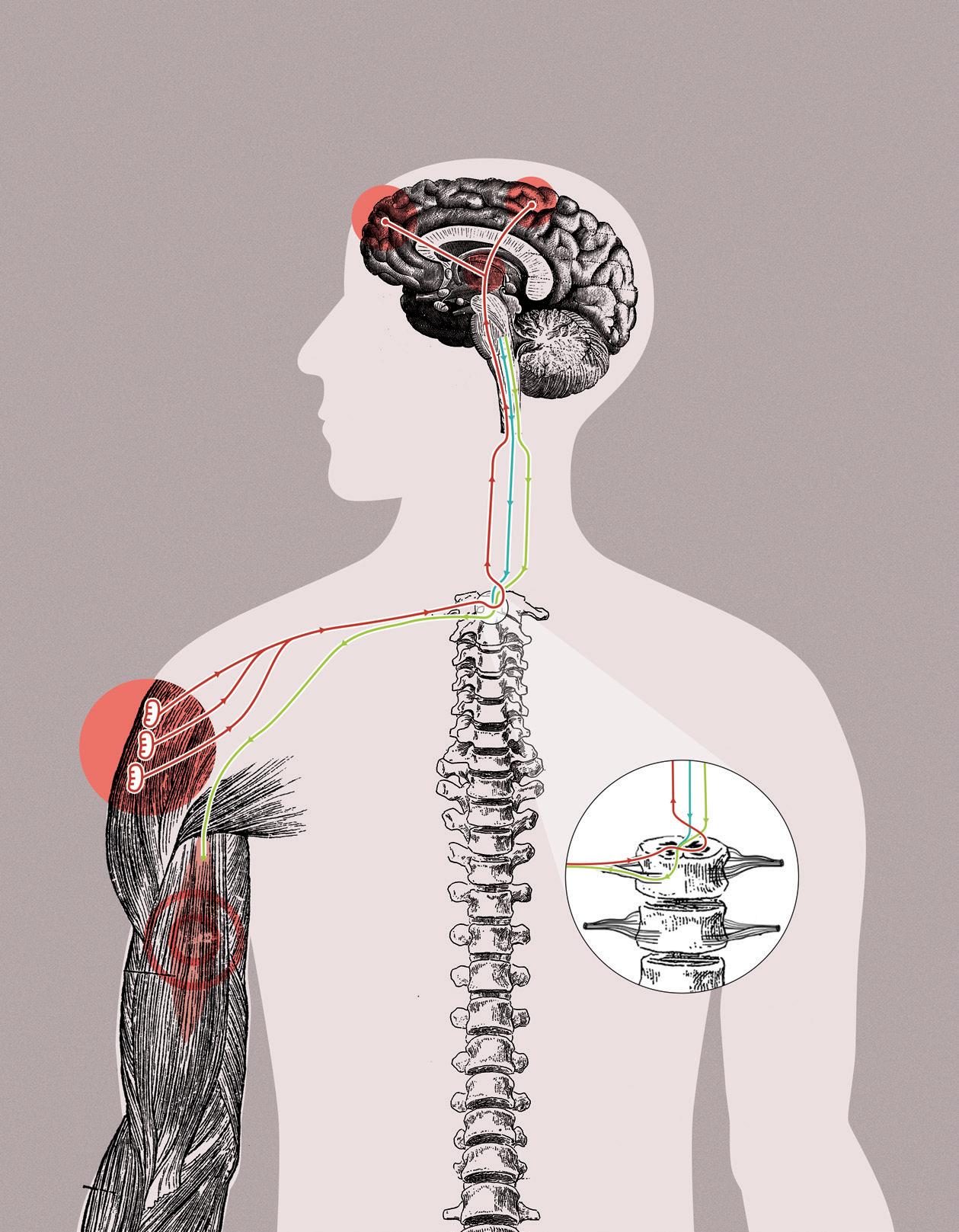
When tissue in the body is damaged, the pain signals begin in the nociceptors (pain receptors) located in the internal organs and skin.
THREE KINDS OF PAIN
INFLAMMATORY PAIN
When inflammation occurs, substances are secreted which lower the pain threshold and amplify the pain. Inflammatory pain can either result from tissue damage or be a symptom of a chronic condition such as rheumatism.
When the nervous system is injured or becomes diseased, the resulting damage and pressure can cause pain. This type of pain is associated with conditions such as diabetes, herniated discs and stroke.

The fire service can be a culture where you’ll find great community, life-long friends, and brothers and sisters who share a love of serving the public. But that fire service culture doesn’t exist in a vacuum and our stations can harbor the same racism, sexism, homophobia, transphobia, xenophobia, etc. that lurk outside.
We often think that if we aren’t being overtly oppressive or actively racist, then these issues have nothing to do with us. The truth is, however, that we are all active participants – either in continuing these cycles or breaking them.
The concept of a diverse fire service is sometimes reduced to checking the boxes by including firefighters who fit into different demographics. But that’s only a small piece of the pie. If the firefighters who want to join our departments find an unwelcoming environment, they won’t stay. Creating an inclusive environment means that we all must take active roles in making sure the culture of our station empowers and respects all types of people.
In our society and potentially in our stations, issues such as sexual harassment and violence can begin with seemingly “harmless” microagressions, which are defined as an “indirect, subtle, or unintentional discrimination against members of a marginalized group.” The “unintentional” element is where unconscious bias can come into play. The Lawrence Livermore National Laboratory states that “Unconscious biases are social stereotypes about certain groups of people that individuals form outside their own conscious awareness. Everyone holds unconscious beliefs about various social and identity groups, and these biases stem from one’s tendency to organize social worlds by categorizing.”
Is it our job as public servants or fire service volunteers to be intentional about noticing the biases we all have, and making sure that our actions and behaviors do not reflect them? It is.
When someone expresses an attitude or belief such as: “I would never work with a
woman firefighter” and that statement is met with silence, both the words and the silence lay the foundation for potentially intensifying behavior. The silence of listeners who do nothing is the cement that solidifies the negative behavior.
In some firehouses, discrimination and harassment have been the norm for a very long time. Long-time members of the team perpetuate it, leadership allows it, and the newer firefighters are quickly indoctrinated. The negative culture is maintained and the cycle continues.
Then, one day, the first firefighter objects –perhaps someone who is female or a person of color. When that person says, “Hang on, this environment is terrible and toxic,’’ others find it easy to blame the objector, calling them uptight and accusing them of not being able to take a joke. It’s much harder to look squarely at the problem that exists, see who’s causing it and decide how to stop the cycle. But that is the only way to begin to dismantle the toxic culture.
Let’s focus on Step Three. Most of us are aware on some level when a boundary is being crossed in our station. Some of our teammates may leave the room when a certain type of joke is made or when particular people are speaking. Someone might even say that they don’t appreciate a certain type of joke or that they don’t want to be spoken to in a certain way.
Those moments are a call to action and should be an impetus to act on the belief that your station is an inclusive workplace. It’s time to call out actions that don’t reflect that belief.
If we want the volunteer fire service to endure and survive constant changes and demands, room must be made for all people, not just the stereotypical firefighter. If we want firefighters to commit to staffing the trucks for calls, we must each assume a personal
responsibility to ensure that all members of the volunteer fire service find a safe, accepting and welcoming culture.
THE FIRE SERVICE ISN’T FOR EVERYONE, BUT NO ONE SHOULD LEAVE BECAUSE THE WORK ENVIRONMENT MAKES HIM OR HER FEEL UNSAFE OR EXCLUDED.
Taking an active role in creating an inclusive environment means being willing to explore our own unconscious biases, stepping up, speaking out and ensuring that we’re a part of positive change. Having many perspectives on our teams allows us to be better public servants and volunteers and to provide better customer service. And really, isn’t that something we should be constantly striving to improve?

You know the smell — that one that is impossible to get rid of. The one that, even when you think it’s gone after two or three showers, comes back with a vengeance. That sticks to your skin, your hair, your clothes...
That smell and the soot on your gear and face after an incident is no longer a badge of honour — it’s a symbol of the thousands of cancer-causing toxins that absorb into your skin and that are carried with you, home to your family.
Focus on the deepest clean possible by adding SOOTSOAP into your personal decon protocol. Lab-developed specifically for firefighters, all natural, 100% biodegradable and safe for all skin types, SOOTSOAP physically draws out that stank and the toxins that causes it.
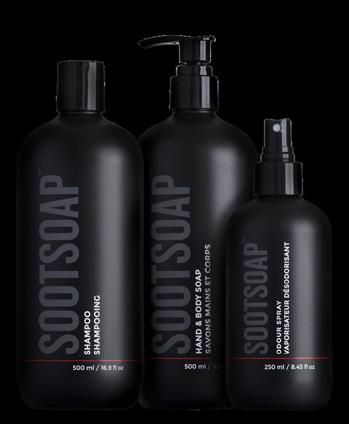
What is SOOTSOAPCLEAN? It’s the soot-stripping, toxin-taking, odour-ridding, fit-for-fire kind of clean only the original SOOTSOAP can provide.
Took the smell … right off the body. That tells me a lot of the s*&t is washed away too, which is what it’s supposed to do!
C. Feltz, CaptainTHAT SMELL NEEDS GONE RIGHT ALONG WITH THE CARCINOGENS BEHIND IT
, .
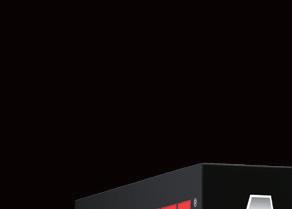


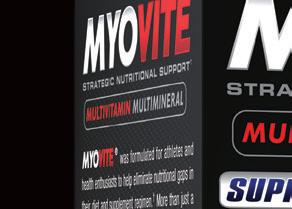
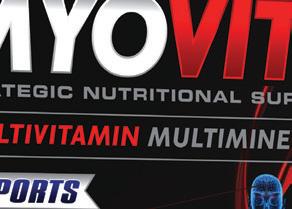
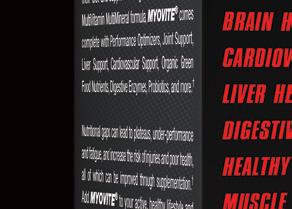

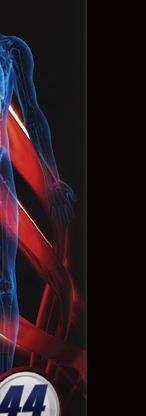
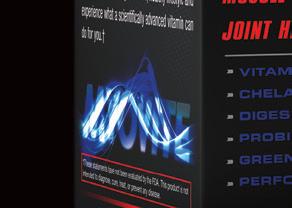
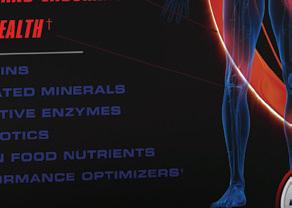




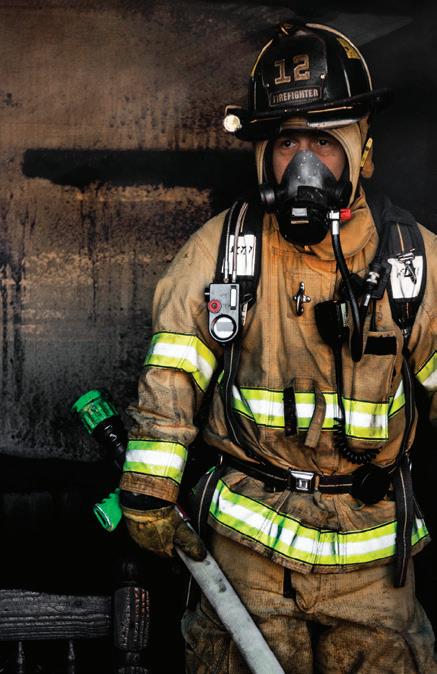
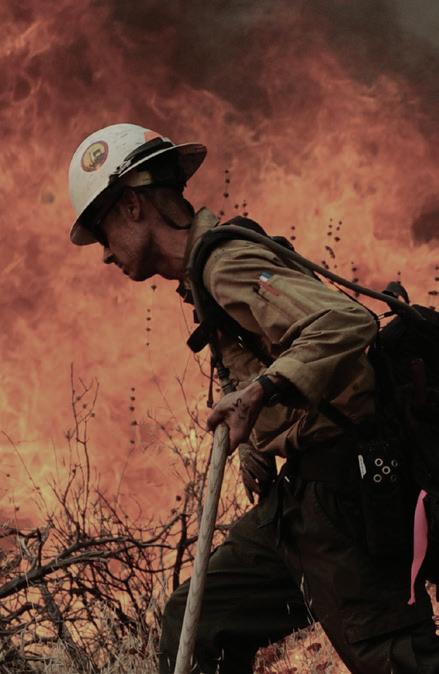

It will be one of the biggest decisions you make in your life. The process of buying your first home will include excitement, anxiety, pleasure and stress. Don’t worry: it’s exactly the same for everyone.
Part of the challenge is dealing with the dizzying array of paperwork and unfamiliar terminology – even before you start poring over the home listings. Here’s a first timer’s guide to make that whole process easier.

To help you decide how much you can afford, look at sites such as NerdWallet.com to calculate based on your income, credit score, current debt and of course where you are planning to live.
Fool.com recommends that your monthly housing payment including taxes and insurance should be no more than 28 percent of your pre-tax income.
When it comes to signing on the dotted line, don’t forget that there will be costs beyond the down payment: “closing costs” are payable on the day of closing and typically range from two to four percent of the loan amount, depending on your state or even your town or city. Closing costs cover legal fees, taxes, real estate taxes, title insurance etc. And don’t forget moving costs, perhaps new appliances and furniture (maybe your first lawnmower!)
It all adds up.
The higher your down payment, obviously the less you have to pay off over time. Online down payment calculators such as mortgagecalculator.org help you figure out how much you have to set aside, and automatic transfers to your down payment savings account will help keep you disciplined.
investments, recent tax returns, pay stubs, W-2s, Social Security card, contact number for your employer’s HR department and marriage licence, if applicable). The approval process should take 24 to 48 hours.
This overview of your financial situation gives lenders an idea of how much of a risk you are (or aren’t). You can get free copies of your credit reports from the three credit bureaus: Experian, Equifax and TransUnion. Improve your rating by paying all your bills, including credit card bills, on time. Remember: a good credit rating will determine the mortgage you’ll qualify for and the interest rate you pay – and over the course of the mortgage can save you thousands of dollars in interest payments.
Having that approval in your pocket puts you in a position to make a speedy offer, which can be invaluable in this hot housing market. Not only that, it sends a signal to the seller that you’re serious and not likely to hold up the process while you’re seeking financing.
When shopping for a lender, don’t forget to check out local or regional banks: some have special programs geared to first-time buyers.
Yes, you can wade through all of this on your own, but the services of a realtor will be a tremendous help. He or she will have a wealth of insider information and knowledge of how it all “works” as well as a list of contacts you’ll need, from home inspectors to mortgage brokers to contractors. You’ll have an ally to help negotiate the price and navigate the market. Many realtors specialize in a geographic area or type of residence (e.g. condos or recreational properties). Most buyers find their realtor through word-of-mouth from family and friends.
Best of all, when you’re the buyer, your realtor’s services are free, as he or she will be earning commission from the seller.
Home prices have skyrocketed in a lot of places due to low interest rates and low inventory for new housing. In addition, COVID has sent a lot of people searching for a bigger home or more space as companies ask their staff to work from home. All of this is makes it even more stressful for first-time buyers who may be caught up in a bidding war.
Experts recommend that if you see a home you like, be prepared for competitive situations and willing go in early with an offer in this hot market. Andriulli’s strongest advice is to make a budget and stick to it. “The worst thing you can do is get emotionally attached to a home and end up paying more than you budgeted for,” he says. “Don’t get emotional: there will be other homes out there.”
A 30-year fixed-rate mortgage is most common and means you will pay the same interest rate for the entire 30 years and have the same monthly principal and interest payment per month. “There are many ways to pay it off sooner or reduce payments, without penalty,” says Craig Andriulli, senior vice-president of Bond Street Mortgage, who has 16 years’ experience as a loan originator.

When you already have the approval that a lender will provide you with a mortgage, it means that the negotiations with the seller will go much more quickly and smoothly. For the pre-approved mortgage you’ll need supporting documents to provide the background on your financial situation (bank accounts,
While some elements of mortgages are similar to the US (e.g. the importance of a good credit rating and the advantages of using a realtor or “real estate agent”), there are some distinct differences in the ways mortgages work in Canada, notably the mortgage loan durations.
Find out more at canadianmortgagesinc.ca or whichmortgage.ca.
“GO TO YOUR BANKER AND TRY TO GET YOUR PRE-APPROVAL REALLY EARLY – TWO TO THREE MONTHS AHEAD OF STARTING YOUR SEARCH IS NOT TOO EARLY,” SAYS ANDRIULLI.

Firefighters are a rare breed. We see things in black and white. “This is how to start the saw.” “This is how to force a door.” And sometimes...
“This is how to eat and train (at least right now) until I white-knuckle my way through six weeks and then fall off the wagon spectacularly.”
That black and white mentality, along with our all-in or all-out attitudes and the wild extremes of effort we tend to expend are exactly what dooms most programs, diets and challenges to failure. So... What’s blocking you from reaching your goals?

This phenomenon occurs when someone knows they need to make a behavioral change but insists on waiting for Monday (or any other arbitrary deadline) to start the behavior. New Year’s resolutions are a great example of such thinking. It might work like this: “Wow, I feel awful when I don’t drink enough water. I really should drink more water. I’m going to drink more water…starting…Monday.”
Pressing reset sounds like: “I need to decrease my body fat. There’s a laundry list of behaviors that will help me achieve that outcome, but instead of starting small and conquering one thing at a time, I’m going to do a reset! That’ll work like magic!”
Resets generally take the form of starvation diets, cleanses, overtraining boot-camps and other non-sustainable extremism. The thought process is that if you can survive the reset, you’ll somehow magically have integrated all the behaviours necessary to continue and ultimately reach your goal. Ah….no.

Waiting for Monday to take action is a counterproductive waste of time. The smarter move is to identify the problem and start immediately with steps to make a change. It’s true that you can’t create change out of thin air, and sometimes a ramping-up stage is needed before you can implement a new habit.
If, for example, you need to plan and prep meals, go to the grocery store today and get easy ingredients you can use right away. Once you’re rolling, you can ramp up for the big food prep project.
Start now. Waiting for Monday or any other date will only put you on a relentless hamster wheel you’ll climb on and off forever. (Hello Monday, we meet again. Weren’t you here just last week?)
This kind of behavior is especially tantalizing for the firefighting population as it so intimately fits our personality profile. Think about it: the more extreme the emergency, the more exciting it is for the responder. Firefighters leave work to race cars, ride motorcycles, sky-dive and run adventure races. Why? We’re adrenaline junkies and we crave extremism! Why be moderate when we can live on the edge?
Extremism generally favors short-term solutions which are very strict and from the outset, unsustainable. Extremism takes the form of excessively low-calorie diets, the elimination of entire food groups, very high-intensity short-term programming (such as training for a body-building competition or marathon to control body composition) and multipleday fasting. Extremism means whiteknuckling your way through a painful and arduous process, making radical short-term changes that you already know won’t be sustainable. Swearing off alcohol, vowing to never pig out again and avoiding family gatherings are the mainstays of extremism. And so is wicked rebounding.
Extremism and resets can be similar, but in general, extremism is short-term while resets are even shorter. Neither addresses long-term, sustainable habits. And the bottom line? Neither work well.
Slip-ups will happen, even in long term programs. You intend to eat a chicken breast, some rice and a veggie, but somehow, you instead eat a whole pepperoni pizza. Falling off the wagon can turn a simple slip-up like an offplan meal or missed training session into six months of chaos.
Going off-plan successfully entails knowing and recognizing specific situations, such as vacations, for example, when sticking to your nutrition goals and training will be difficult or inconvenient. Know what lies ahead and plan accordingly.
You could go back to number one for another trip through the endless cycle or you could do something smart, sustainable and long-lasting.
• Small changes executed with discipline can yield big results, but this takes time and consistency. Giving up one soda per day but changing nothing else will eliminate between 100 and several hundred calories. Adding an after-dinner walk will increase your daily caloric expenditure, as well as bolstering your parasympathetic nervous system. It may even help you become a better-functioning human being!
• Statistics prove that you’re more successful if you work on one behavior at a time rather than tackling several simultaneously. Choose a single, simple behavioral change and work on it consistently. When you’ve mastered it, move to another behavior.
• Making sustainable changes means altering your patterns. Simply saying, “I’m going to eat better” won’t work. What does “better” mean and how are you going to execute that plan? Committing to drinking 100 ounces of water (about 12 cups) each day is a solid behavioral objective. If you can respond with a “yes” or “no” to whether you executed the specific daily task needed to reach your goal, then you’ve set a good behavioral objective.
• Sustainable changes are behaviors you can execute for a lifetime, not just a few weeks.
• Start by looking at low-hanging fruit or big rocks to find behavioural change. Low-hanging fruit are simple goals that will yield easy wins, such as adding a serving of veggies to each meal or remembering to drink more water. Big rocks are large goals that require a lot of effort, but yield big benefits, such as joining a gym or hiring a coach to guide you through a wellness program.
Firefighters can exhibit extreme personality traits both in their careers and in their health and wellness activities. If we can resist our natural inclinations and see how moderation and small changes executed consistently can help us avoid that same old hamster wheel patterning, we may find a whole new path.

QAS A SINGLE FIREFIGHTER, IT’S PRETTY EASY FOR ME TO GET DATES. HOW DO I KNOW IF THE PERSON I AM DATING IS REALLY INTO ME OR JUST ENAMORED BY MY JOB?
When someone begins dating you, it’s easy to judge the new book by its cover – especially if that cover is visually appealing and has the sexy, intriguing title: “Firefighter.” What’s important is for your potential partner to read a bit of that book to get a sense of the reality of your life and values.
1 2 3 4 5
IF YOUR NEW LOVE INTEREST IS GOING TO BE IN IT FOR THE LONG RUN, THERE ARE FIVE REALITIES TO FACE: Being a firefighter is attractive. Is your new partner the jealous type? Ask how other people giving you extra attention will be received. Will a smile or a flirtatious wink from someone else start an unnecessary fight?
You will always have two families – your actual family and your fire family. Both are very important but often it’s going to seem as if the fire family comes first. Your partner will need to be independent and understanding to make the relationship work.

Firefighters may occasionally be emotionally distant and there will be times when you’re exhausted, withdrawn and detached. Make sure that your new partner realizes you may need time to yourself to process what happened during your last shift. That distance will be important until you’re ready to connect.
Shift work means sacrifice. If your potential partner is looking for someone with a reliable schedule, it’s not you. The reality is you won’t always be able to be there for them. As much as you won’t want to, there will be times when you’ll have to miss holidays, birthdays and other important events.
Every time you go on a call there is the risk of injury or death. Is your potential partner anxious by nature? A firefighter’s partner needs to separate fear from reality, so anyone with high anxiety level is probably not the best choice for you.
QI FEEL SO FRUSTRATED WHEN SOMETHING GOES WRONG AT HOME AND MY FIREFIGHTER ISN’T THERE TO HELP. WHEN I CALL HIM TO DISCUSS WHAT’S GOING ON, IT USUALLY LEADS TO A FIGHT. WHAT CAN I DO TO GET THE HELP AND SUPPORT I NEED AT HOME?

AWhen we enter into a committed relationship, we assume that any help we may need will come from our spouse. But being the partner of a firefighter means finding the delicate balance between independence and dependence. Being independent means making decisions and taking decisive action on your own, without running everything past your partner. But this doesn’t mean handling everything alone. A great strategy is to set up a support circle to provide you with the help you need at home and take the pressure off your spouse and your relationship.
You might also want to consider having a support group to get you out of the house and involved in the community. You may really benefit from the emotional and mental support, and doing things that feel good for you personally will have a positive impact on your relationship.
Remember: being independent doesn’t mean doing everything on your own. We all need some form of support in our relationships because, in these hectic times, it’s a challenge for two busy, independent people to show up for each other and work together as a happy couple. When you’re willing to seek out the right kind of support, you’ll find that your life — in and outside your relationship with your firefighter — will reap the benefits.
A SUPPORT CIRCLE DOESN’T HAVE TO BE LARGE TO BE EFFECTIVE, BUT IT SHOULD INCLUDE:
These are the people you can call on to be there when your firefighter can’t. They might help around the house, go to events with you, or simply be there to hang out.
A good DIY buddy can take most of the things off the honey-do list so your firefighter isn’t overwhelmed when the workday is over, giving you two more quality time to spend with each other.
A few trustworthy babysitters to call on in case of emergencies is crucial. One idea is to make friends with the spouses of other firefighters so you can take turns watching one another’s kids.

Grilling season is finally here! These tangy, slightly sweet chicken thighs are balanced out with a cool, cucumber tomato salad that is quick to throw together. The BBQ sauce is vinegar-based, which helps cut the sugar content significantly compared to traditional BBQ sauces. Make your own fries by cutting potatoes into wedges and baking. Keep the skin on to boost the fiber content, which will keep you full longer.
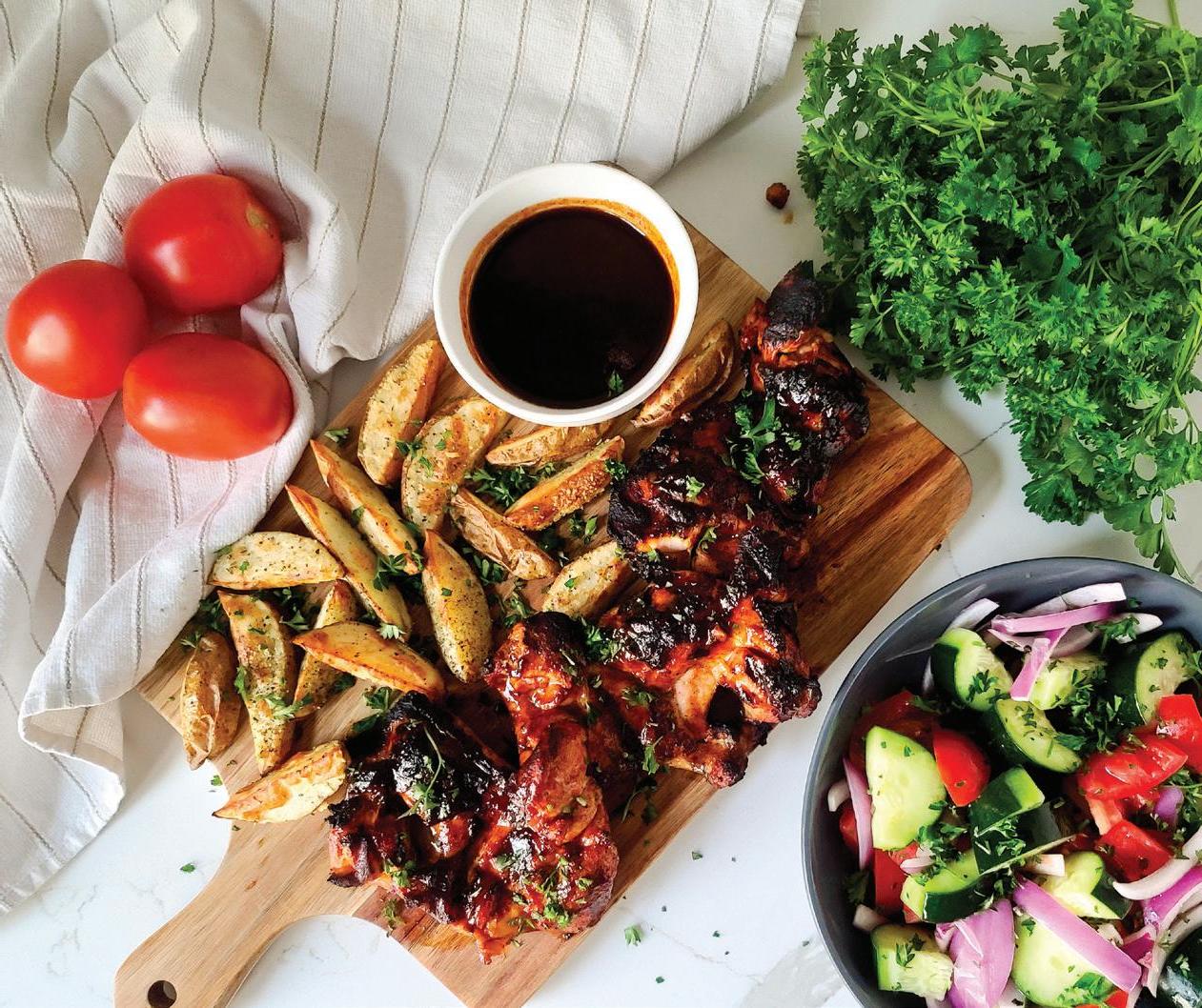 RECIPE DEVELOPED BY MEGAN LAUTZ, MS, RDN
RECIPE DEVELOPED BY MEGAN LAUTZ, MS, RDN
Pantry: BBQ seasoning, olive oil, salt, pepper
6 PEOPLE
10 PEOPLE
14 PEOPLE
Chicken
3 lbs. boneless, skinless chicken thighs
Sauce
16 oz bottle apple cider vinegar
32 oz bag brown sugar
20 oz bottle ketchup
1 oz container cayenne pepper
1 oz container chili powder
1 oz container red pepper flakes
Salad
4-5 Roma tomatoes
2 large cucumbers
1 large red onion
1 bunch parsley
17 oz bottle red wine vinegar
Potatoes
3 lbs. potatoes
Chicken
3 lbs. chicken thighs
BBQ seasoning
Sauce
Chicken
5 lbs. boneless, skinless chicken thighs
Sauce
2x16 oz bottle apple cider vinegar
32 oz bag brown sugar
20 oz bottle ketchup
1 oz container cayenne pepper
1 oz container chili powder
1 oz container red pepper flakes
Salad
10 Roma tomatoes
4 large cucumbers
2 large red onions
1 bunch parsley
17 oz bottle red wine vinegar
Potatoes
5-6 lbs. potatoes
Chicken
7 lbs. boneless, skinless chicken thighs
Sauce
3x16 oz bottle apple cider vinegar
32 oz bag brown sugar
20 oz bottle ketchup
1 oz container cayenne pepper
1 oz container chili powder
1 oz container red pepper flakes
Salad
12 Roma tomatoes
6 large cucumbers
3 large red onions
1 bunch parsley
17 oz bottle red wine vinegar
Potatoes
10 lbs. potatoes
Nutrition: 2 chicken thighs with ¼ cup sauce: 300 cal, 9g fat, 44g protein, 10g carbohydrates, 0g fiber
½ cup cucumber salad: 65 cal, 5g fat, 1g protein, 5g carbs, 2g fiber
1 cup potato wedges: 115 cal, 0g fat, 3g protein, 26g carbs, 3g fiber
Chicken
5 lbs. chicken thighs
BBQ seasoning
Sauce
2 cups apple cider vinegar
1/4 cup brown sugar
1/8 cup ketchup
1/2 tsp cayenne pepper
1/2 tsp chili powder
1 tsp red pepper flakes
1 tsp salt
Salad
4-5 Roma tomatoes
2 large cucumbers
1 large red onion
2 tbsp chopped parsley
1 tbsp red wine vinegar
2 tbsp olive oil
Potatoes
3 lbs. potatoes
Cooking spray, salt/pepper
Chicken Thighs
1. Preheat grill to medium-high. Sprinkle BBQ seasoning on the chicken thighs. Grill chicken thighs for 3-4 minutes, until the pieces turn golden and grill marks appear.
2. Flip the chicken and reduce the heat. Baste chicken with BBQ sauce, and grill until the internal temperature is 165°. Let chicken rest 5 minutes before serving.
4 cups apple cider vinegar
1/2 cup brown sugar
1/4 cup ketchup
1 tsp cayenne pepper
1 tsp chili powder
1 tsp red pepper flakes
2 tsp salt
Salad
10 Roma tomatoes
4 large cucumbers
2 large red onions
4 tbsp chopped parsley
2 tbsp red wine vinegar
4 tbsp olive oil
Potatoes
5-6 lbs. potatoes
Cooking spray, salt/pepper
Sauce
1. Prep sauce as early in the day as possible & refrigerate!
2. Whisk sauce ingredients over medium high heat, reducing the liquid by 25 percent over 10-15 minutes.
3. Remove from heat and allow to cool.
Chicken
7 lbs. chicken thighs
BBQ seasoning
Sauce
6 cups apple cider vinegar
3/4 cup brown sugar
6/8 cup ketchup
1 1/2 tsp cayenne pepper
1 1/2 tsp chili powder
3 tsp red pepper flakes
3 tsp salt
Salad
12 Roma tomatoes
6 large cucumbers
3 large red onions
6 tbsp chopped parsley
3 tbsp red wine vinegar
6 tbsp olive oil
Potatoes
10 lbs. potatoes
Cooking spray, salt/pepper
Potatoes
1. Preheat the oven to 400°.
2. Cut potatoes into wedges. Spread out on a baking sheet, spray with cooking oil, and sprinkle with salt and pepper.
3. Bake for 30-40 minutes, or until golden brown.
Cucumber Tomato Salad
1. Chop onion, tomatoes and cucumbers into medium-sized pieces. Toss in olive oil and red wine vinegar, sprinkle with chopped parsley, and serve.


